

10 BEST Salar de Uyuni Tours: Bolivia Salt Falts in 2023
The Salar de Uyuni Salt Flats, sometimes referred to simply as the Bolivia Salt Flats , is a place unlike any other you’ll ever experience as a traveler. Best known for perfectly reflecting the sky during the rainy season and creating the world’s largest mirror), the Salar de Uyuni Salt Flats earns its spot atop many a traveler’s bucket list .
While visiting the Salar de Uyuni is one of Bolivia’s most popular attractions, visiting this remote and desolate is challenging. In this ultimate guide to the best Salar de Uyuni tours, we share the very best ways to experience the Bolivia Salt Flats , plus Salt Flats tour options from cities like Uyuni, La Paz , Tupiza, and even San Pedro de Atacama, Chile.
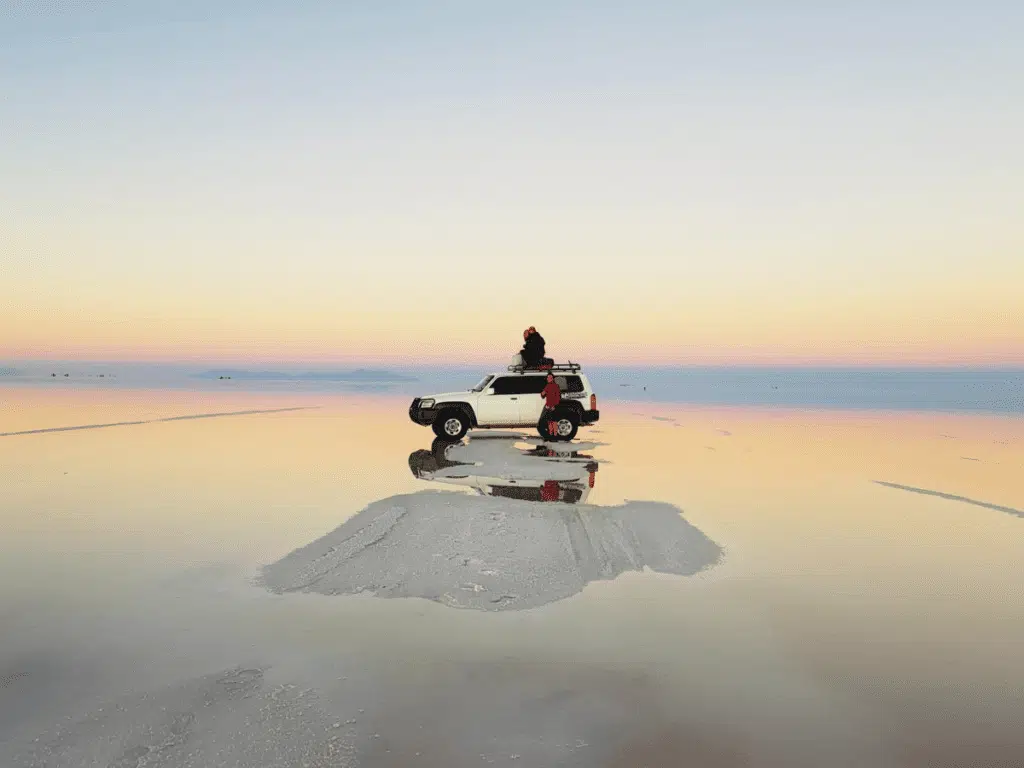
This post contains affiliate links that may reward me monetarily or otherwise when you use them to make qualifying purchases – at no cost to you. As an Amazon Associate, I earn from qualifying purchases. For more information, please read our disclosure policy .
Salar de Uyuni Tours
Located in one of the most desolate areas on Earth, the Bolivia Salt Flats
While Salar de Uyuni tours of the Salt Flats draw visitors here first, the Salt Flats are not the only things to see in this area. The entire surrounding area of southwest Bolivia is home to some of the most beautiful, remote scenery you’ll find anywhere.
You’ll find stunning mountains, technicolor lakes and lagoons, desert landscapes, roaming alpacas, and jagged red mountains . It is absolutely worth a trip, and well worth carving out a few days in your Bolivia itinerary to experience. There is no place like it!
Read More: Ultimate Guide to the Salar de Uyuni Bolivia Salt Flats
What is Salar de Uyuni?
The Salar de Uyuni Salt Flats is the world’s largest salt flat and Bolivia’s most popular destination with travelers. Located in southwestern Bolivia, this massive salt flat is nearly 3,900 square miles (10,000 square kilometers) in size.
The Salar de Uyuni Salt Flats were formed by prehistoric lakes leaving the salt behind. Now, the entire area is covered meters deep in salt . The entire area is both extremely flat and at an extremely high elevation. This creates some incredible perspectives and optical illusions, for which Salar de Uyuni is well known.
Plan a Trip to Bolivia
- La Paz, Bolivia: Ultimate Traveler’s Guide
- 24+ Best Things To Do in La Paz, Bolivia
- Ultimate Travel Guide: Salar de Uyuni Bolivia Salt Flats
- Visiting Laguna Colorada, Bolivia: A Complete Guide
Uyuni Bolivia
A small town located just on the edge of the salt flats, all visitors to the Salt Flats will make their way through Uyuni, either as the starting or ending point of Salar de Uyuni tours.
While there isn’t much to this town, it offers a range of hotel and hostel options, restaurants, and of course, tour companies for trips to the salt flats and beyond. Overall, it’s a great starting and ending point for Salar de Uyuni tours, offering everything you could need for your excursion.
Accommodations in Uyuni
One of the most popular forms of accommodation in Uyuni is the famed “salt hotel” – these are hotels built entirely out of giant salt blocks cut from the salt flats! If you’re looking for an affordable yet comfortable salt hotel stay, make sure to check out Casa de Sal Salt Hotel for your overnight stay in town. The building’s walls and furniture like bed frames are made from salt bricks .
For a more luxurious option, consider the Hotel Palacio de Sal . This stunning hotel was the first salt hotel on the Salt Flats and is one of the nicest. It’s complete with a lovely restaurant and luxurious spa, which has plenty of salt-centric spa treatments, of course.
Best Hotels and Hostels in Uyuni
- Hotel Nido del Flamenco ($ – $$)
- Casa de Sal Salt Hotel ($$)
- Hotel Palacio de Sal ($$ – $$$)
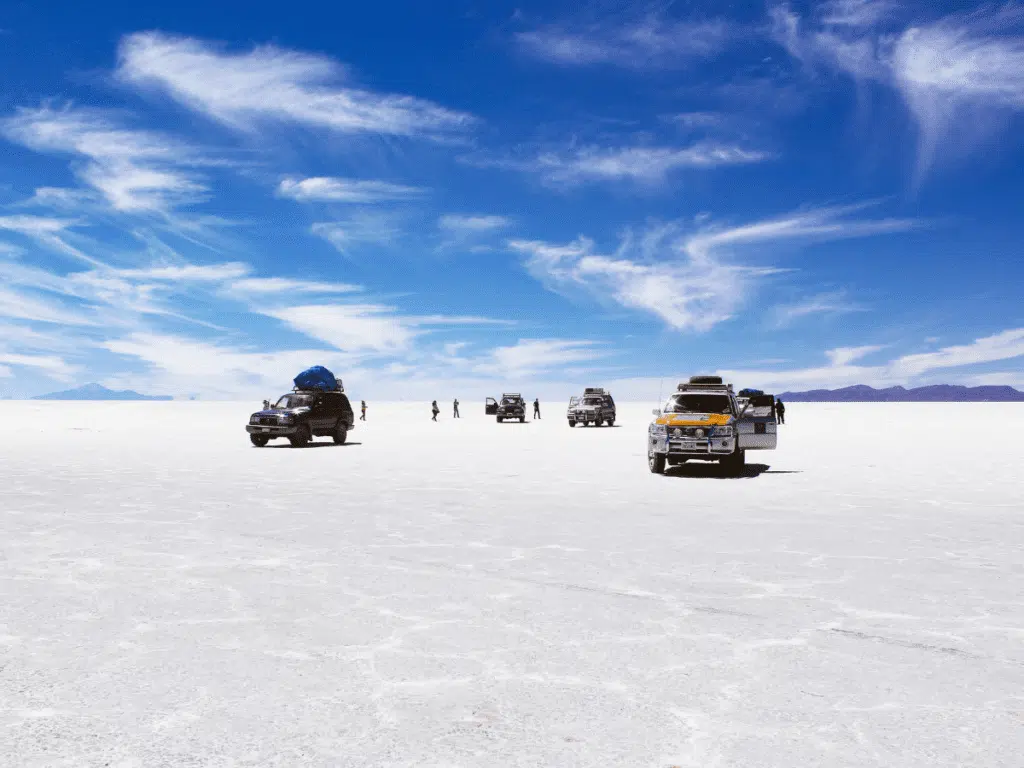
Bolivia Salt Flats Tours
There are nearly infinite options for Bolivia Salt Flats tours, with everything from short day trips across the Salt Flats to longer, multi-day trips. The most popular Salar de Uyuni tours are multi-day 4X4 jeep tour that explores the Salt Flats and surrounding natural wonders of the area!
Multi-day Bolivia Salt Flats tours in jeeps take you further beyond as well, into the nearby high plains, which have some of South America’s most incredible natural sights – I can’t recommend this option enough if your schedule allows for it!
The majority of tours of the Salar de Uyuni Salt Flats depart from the town of Uyuni, as most travelers visiting the Salt Flats stay here. Many companies offer full-day or half-day Salar de Uyuni tours, which offer travelers the opportunity to see the best of the best of the salt flats.
What to Pack for Salar de Uyuni
Check out our Ultimate Salar de Uyuni Packing List for our tried and tested packing list. Don’t repeat our mistakes on your Laguna Colorada and Salar de Uyuni adventure!
Best Salar de Uyuni Tours From Uyuni
One-day salar de uyuni tours from uyuni.
- Best One-Day Salar de Uyuni Group Tour from Uyuni : 1-Day Group Tour Salar de Uyuni
- Best One-Day Salar de Uyuni Private Tour from Uyuni : 1-Day Private Tour Salar de Uyuni
One-day Salar de Uyuni tours depart from Uyuni and allow you to spend the day exploring the Salar de Uyuni Salt Flats and the surrounding area. These are some of the most popular Salar de Uyuni tours, and the most affordable, perfect if you just have a day or two in the area.
Day tours of the Salt Flats include all the highlights on the Salt Flats, including the train cemetery , Dakar monument, Incahuasi Island, and sunset over the Salt Flats. Andes Salt Expeditions has the most comprehensive and well-done one-day group tour in Uyuni. This is definitely my recommendation for budget travelers looking for a great Uyuni tour experience!
- Reviews and Bookings: 1-Day Group Tour Salar de Uyuni
- Reviews and Bookings: 1-Day Private Tour Salar de Uyuni
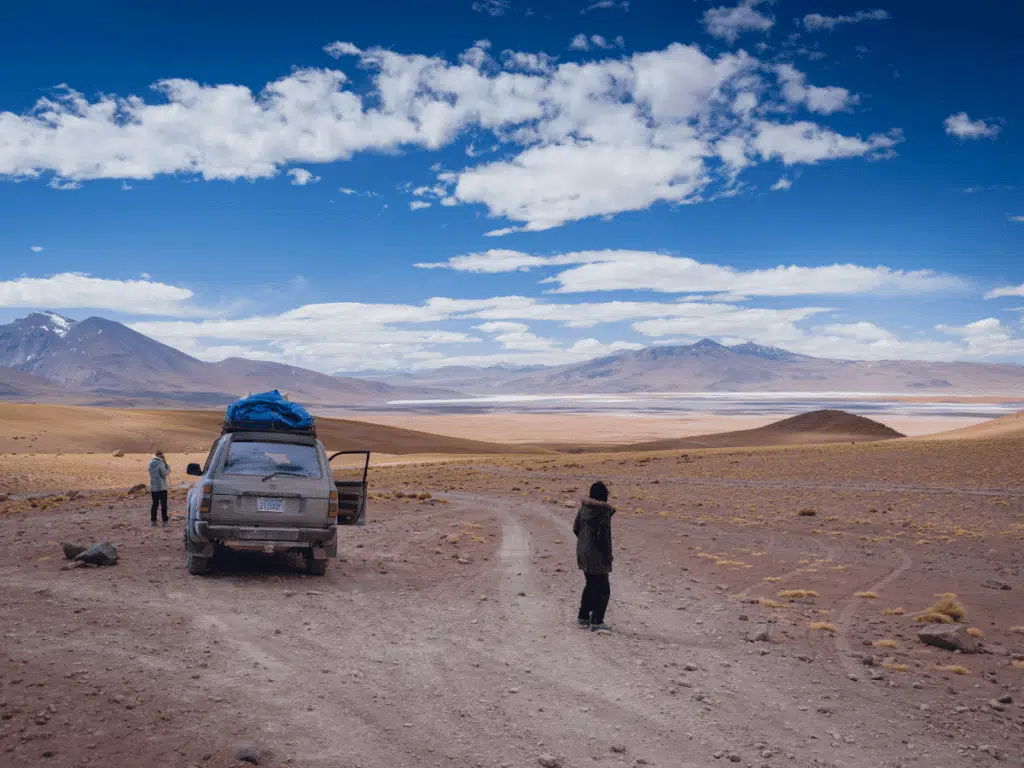
Two-Day Salar de Uyuni Tours from Uyuni
- Best 2-Day Salar de Uyuni Tour from Uyuni : 2-Day Salar de Uyuni and Surrounds Tour
2-day, 1-night tours from Uyuni tend to stick to the Uyuni area and Salt Flats – while you’ll see much, much more of the area, including surrounding volcanos, you generally won’t get to see those colorful lakes (Laguna Colorada, Laguna Verde, and more!) you’ll see on a three-day tour.
Joker Expeditions – one of Uyuni’s most well-respected tour companies – offers two-day tours of Salar de Uyuni and Laguna Colorada . These are popular, though a bit more expensive than a standard two-day tour. However, seeing Laguna Colorada, Laguna Verde, and all the incredible surrounding scenery is well worth it!
- Reviews and Bookings: 2-Day Salar de Uyuni and Surrounds Tour
Three-Day Salar de Uyuni Tours from Uyuni
- Best 3-Day Salar de Uyuni Group Tour from Uyuni: 3-Days Salar de Uyuni + Lagunas Group Tour
- Best 3-Day Salar de Uyuni Private Tour from Uyuni: 3-Days Salar de Uyuni + Lagunas Private Tour
Most multi-day tours from Uyuni are the 3-day and 2-night tours that are considered a full tour of the region. Once you select a 3-day tour over a 2-day tour, your itinerary is almost guaranteed to include some of the most beautiful attractions further from Uyuni, including Laguna Colorada, Laguna Verde, and incredible sights to the south .
I highly recommend carving out space in your itinerary for a three-day Salar de Uyuni tour . This was one of my favorite travel experiences EVER. The scenery is gorgeous, and it’s absolutely worth finding the time for the full Salar de Uyuni tour done right.
- Reviews and Bookings: 3-Days Salar de Uyuni + Lagunas Group Tour
- Reviews and Bookings: 3-Days Salar de Uyuni + Lagunas Private Tour
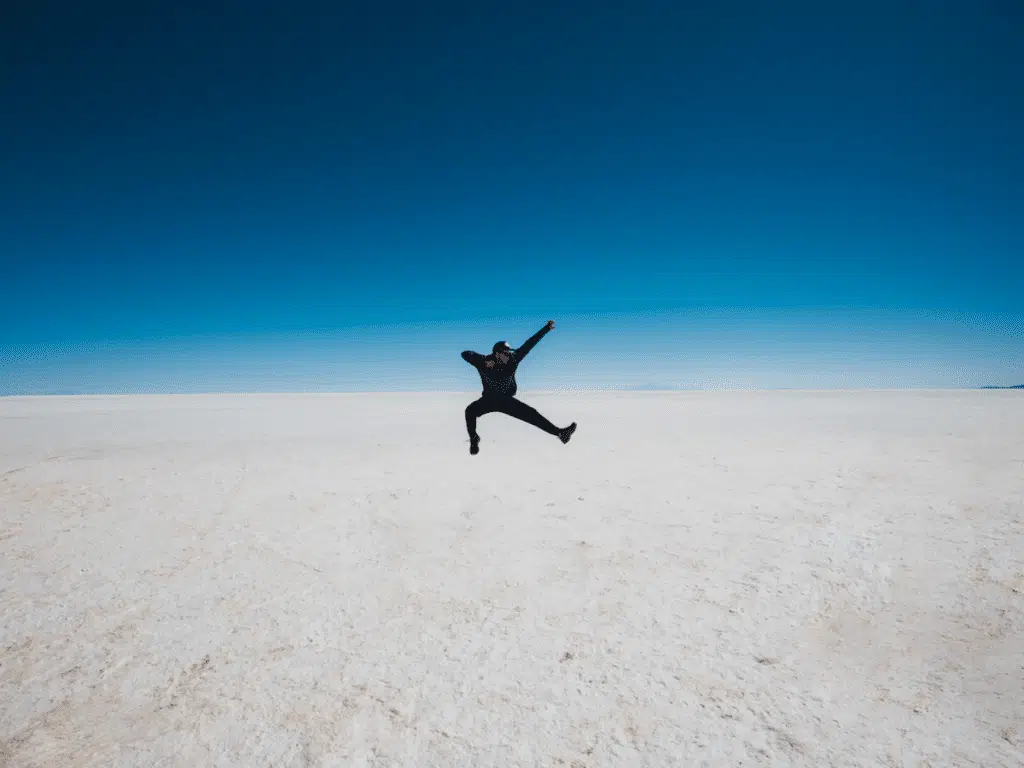
Best Salar de Uyuni Tours From La Paz
One-day salar de uyuni tours from la paz.
- Best One-Day Tours By Bus from La Paz : One-Day Salar de Uyuni Tour from La Paz by Bus
- Best One-Day Tours By Air from La Paz: One-Day Salar de Uyuni Tour from La Paz by Air
One-day Uyuni tours from La Paz by bus and even one-day Uyuni tours from La Paz by plane are great for travelers on a short itinerary. You’ll make it to this unmissable destination with the time you have.
However, if you can carve out more time in your itinerary, I highly recommend spending more time in Uyuni if you’re traveling here from La Paz – no matter how you plan to travel.
Multi-Day Salar de Uyuni Tours From La Paz
- Best 3-Day Salar de Uyuni Tour from La Paz: 3-Day Salar de Uyuni Tour from La Paz
- Best 4-Day Salar de Uyuni Tour from La Paz: 4-Day Salar de Uyuni Tour from La Paz
- Best 5-Day Salar de Uyuni Tour from La Paz: 5-Day Salar de Uyuni Tour from La Paz
Spending at least three days in Salar de Uyuni from La Paz is the best of both worlds: you’ll have your transportation easily and conveniently organized for you while still enjoying the very best of the full tour of the Salt Flats. This is a great option , just marginally more expensive than a standard tour departing from the town of Uyuni.
The five-day Salar de Uyuni tour from La Paz is the best way to see the Salt Flats from La Paz without being rushed. You’ll see the best of the best of the area, including the colorful lagoons Laguna Colorada and Laguna Verde, and have the most memorable trip you can imagine. Highly recommended!
Plan a Trip to La Paz
- Ultimate Traveler’s Guide to La Paz, Bolivia
- 24+ Best Things To Do in La Paz
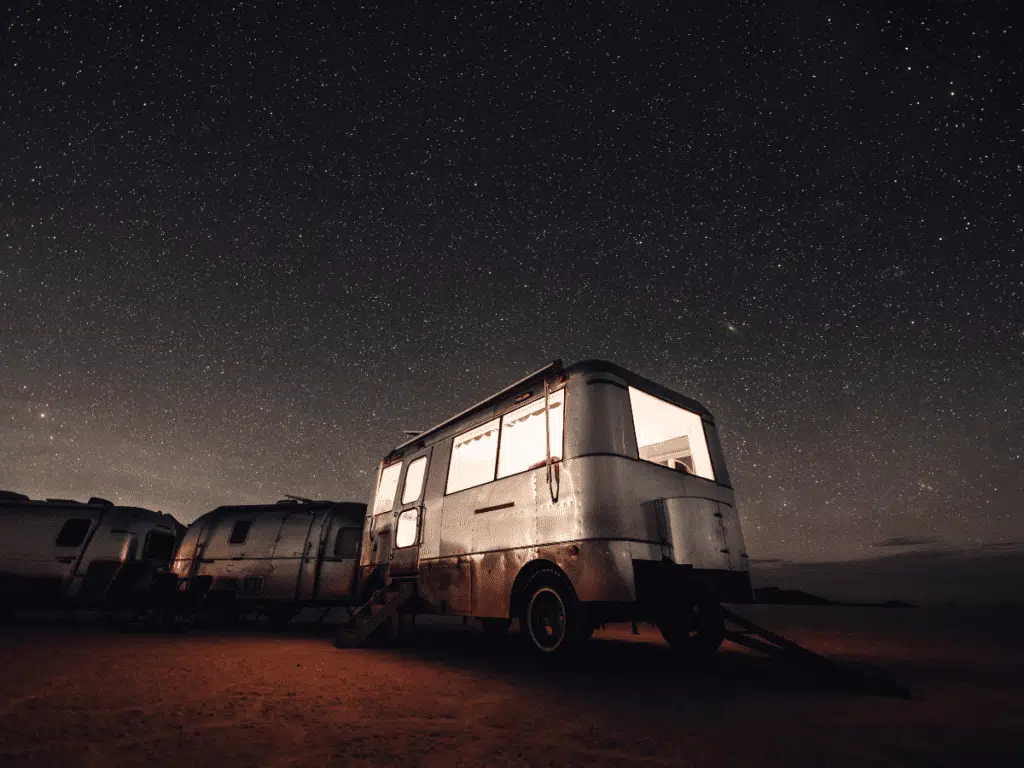
Best Salar de Uyuni Tours From Tupiza
- Best Salar de Uyuni Tour from Tupiza: 4-Day Salar de Uyuni Salt Flats and Lagunas Route from Tupiza
One of the nearby towns to Uyuni – just a few hours south – many travelers also start their journey to the Salt Flats from Tupiza Bolivia. Starting an Uyuni tour from Tupiza is particularly popular with travelers heading through Bolivia from northern Argentina.
While Tupiza may not seem like a logical first starting point, starting a Bolivian Salt Flats tour from Tupiza Bolivia is like doing the 4-day and 3-night loop from Uyuni in reverse , meaning you’ll be visiting the sites when they’re a lot less crowded.
You save a visit to the Salt Flats for the last day of the tour, which makes the tour end with a major bang!
When ending a Salar de Uyuni tour from Tupiza in Uyuni, you can choose to return with the guides to Tupiza if you’ll continue traveling from there or remain in Uyuni and travel onward . This means that no matter where you’re headed next, you’ve got an easy way to get there.
- Reviews and Bookings: 4-Day Salar de Uyuni Salt Flats and Lagunas Route from Tupiza
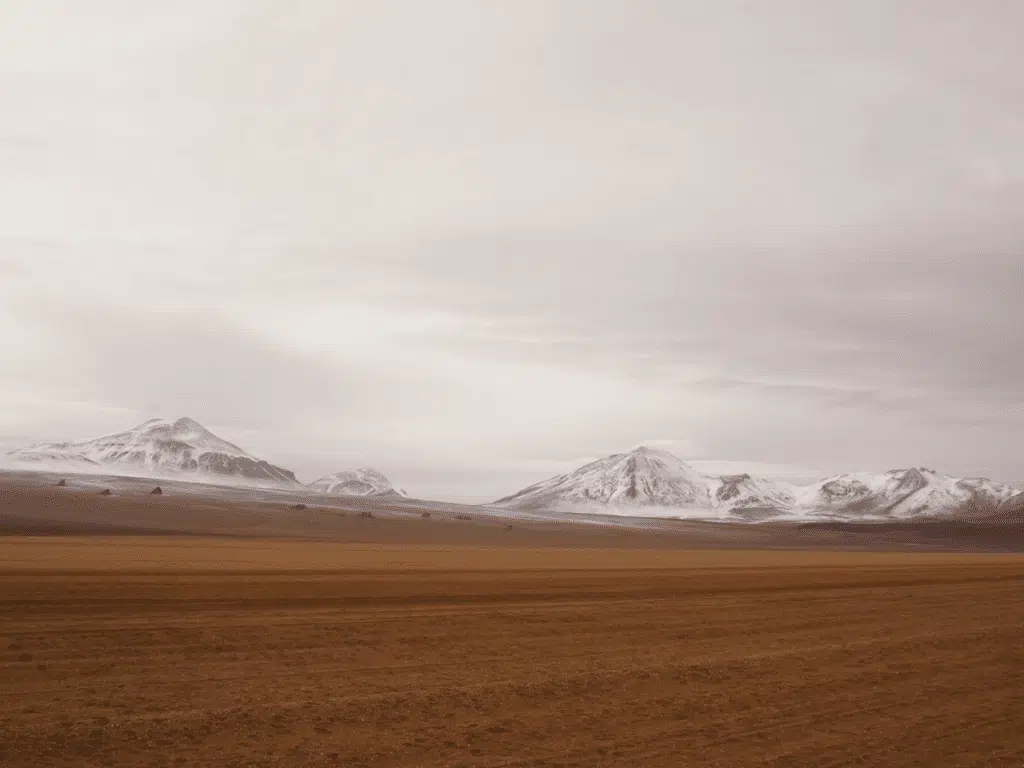
Best Salar de Uyuni Tours From San Pedro de Atacama
- Best 3-Day Salar de Uyuni Tour from San Pedro: 3-Days Salar de Uyuni Tour from San Pedro
- Best 4-Day Salar de Uyuni Tour from San Pedro: 4-Day Salar de Uyuni Tour from San Pedro
San Pedro de Atacama in northern Chile is a very popular destination for travelers as a hub within the Atacama desert, and it is another hub for travelers looking to visit the Salt Flats. There are plenty of San Pedro de Atacama tours, especially multi-day Atacama to Bolivia Salt Flats tours that start and end in San Pedro de Atacama.
If you’re looking for a tour that starts from and ends in San Pedro de Atacama, check out Howlanders ! Howlanders is a tour company that offers an extremely popular 4-day and 3-night tour from San Pedro de Atacama that I’ve heard rave reviews of from a fellow travel blogger.
- Reviews and Bookings: 3-Days Salar de Uyuni Tour from San Pedro
- Reviews and Bookings: 4-Day Salar de Uyuni Tour from San Pedro

Things To See Near Salar de Uyuni
Of course, the Salar de Uyuni Salt Flats are rightfully the biggest and best attraction here! Spend time taking in the incredible, other-worldly scenery here. In addition, you’ll want to visit these awesome locations, too!
Incahuasi Island
Formerly an island within the middle of the prehistoric lake that formed the salt flats, this rocky outcropping in the middle of the salt flats is a popular stop on tours.
It is home to towering cacti, some nearly 30 feet (10 meters) tall. Not only a beautiful spot itself, but this island also makes for a beautiful panoramic view over the salt flats – included in nearly all Salar de Uyuni tours!
Plaza of Flags & Dakar Monument
A rare break from the empty salt flats, the Plaza of Flags is a beautiful circle of flags left behind by visitors – bring your own and contribute if your flag isn’t there yet! The colors of the flags are beautiful against the white salt and blue sky backdrop.
The nearby monument celebrates the famed Dakar Rally race that passed through Bolivia and neighboring countries.
Travel Essential
Don’t head out on your adventure without comprehensive travel insurance! Good travel insurance may cover lost or stolen gear, medical emergencies, delayed or canceled flights, and more. Check out the policies available from SafetyWing or compare plans using Visitors Coverage .
Reserva Nacional de Fauna Andina – Eduardo Avaroa
The Eduardo Avaroa National Reserve of Andean Fauna is a protected area bordering Chile and Argentina and is home to some of the most beautiful landscapes in the area, including the Laguna Colorada, Laguna Verde, and other colorful lakes and soaring mountains.
You’ll get to spend plenty of time here on multi-day Bolivian Salt Flats tours exploring this beautiful national park and reserve.
Laguna Colorada
By far one of the most stunning features in the area, the Laguna Colorada is a bright red lake surrounded by beautiful hills and mountains.
The intense red color is due to the colors of algae and sediments, creating an unforgettable view. This lagoon is also home to flocks of Andean flamingos, making the scene even more impressive.
Read More: Ultimate Guide to Visiting Laguna Colorada, Bolivia
Laguna Verde
Relatively close to the stunning Laguna Colorada, you’ll find the less well-known but equally stunning Laguna Verde. This aquamarine lagoon is a beautiful sight against blue skies and dark volcanoes behind it.
Polques Hot Springs
These hot springs are the result of the nearby Polques volcano and make a perfect escape from the usually cold climate in Bolivia’s high plains. Bring a travel towel and swimsuit despite how cold it is, the springs are so warm you won’t regret it!
- La Paz Witches Market: Best Markets in Latin America

Carley Rojas Avila
Carley Rojas Avila is a bilingual New York-based travel writer, editor, content marketer, and the founder of the digital travel publications Explorers Away and Home to Havana. Carley is an expert on all things Latin America, the Caribbean, and Cuba, having lived and worked in four different countries in the region. Her writing has appeared on the Associated Press wires and in Travel + Leisure, Yahoo, MSN, Euronews, The Weather Channel, and more. When she's not writing about her travels, find her front row at a Bad Bunny concert, befriending street cats, and taste-testing every pizza in Havana.

Salar de Uyuni: A Complete Guide to Visiting the Bolivia Salt Flats
Tessellations of crusted white glinting in the sun as far as the eye can see – it’s little wonder that the Salar de Uyuni – or the Bolivia Salt Flats – are one of South America’s bucket list spots. Plan your trip with this complete guide.
Bolivia’s Uyuni salt flats are one of the most photogenic places in the world. With over 10,582 square kilometres (4,086 square miles) of snowy white hexagonal patterns and clear blue skies, it doesn’t get much more gorgeous than this.
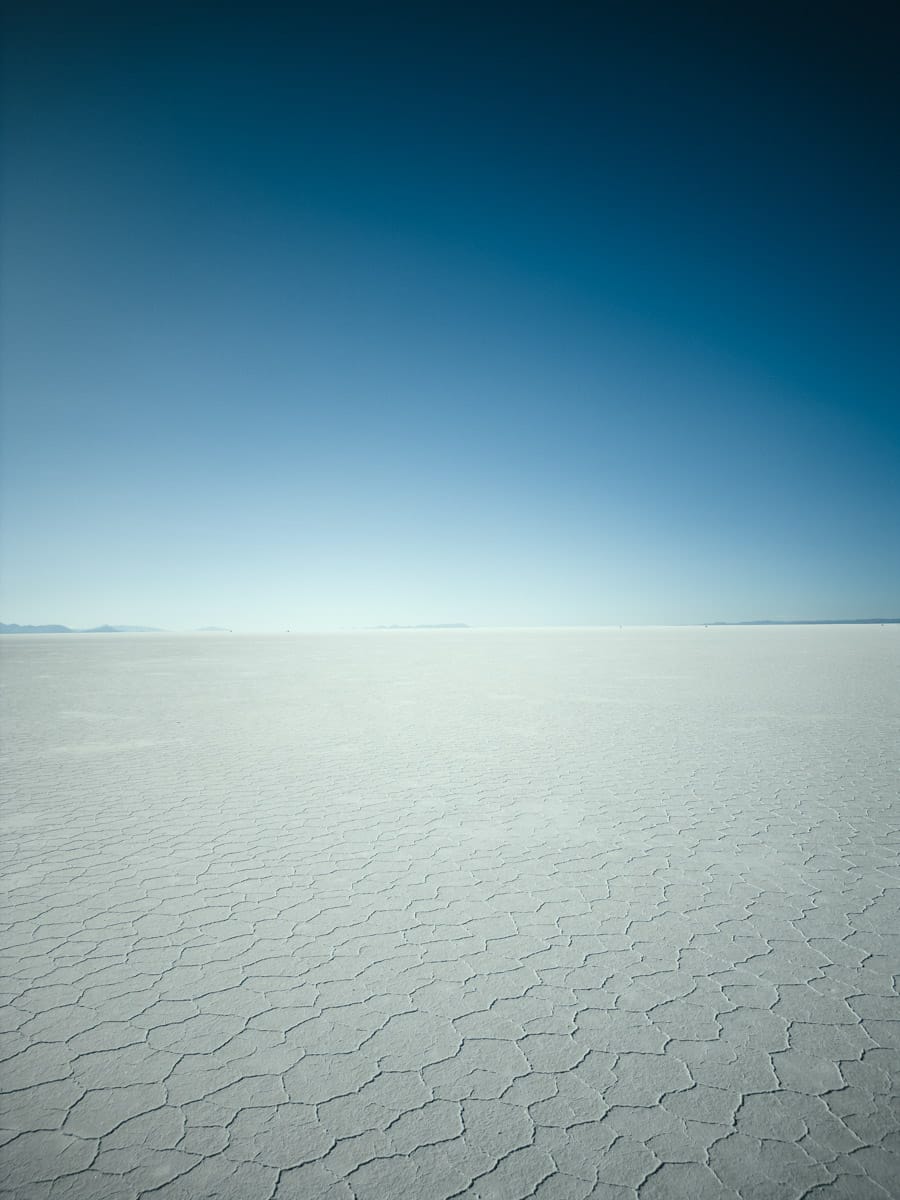
The first time I visited the salt flats in 2009, I had no idea of what to expect. We’d trucked on a four-day trip from Tupiza (there’ll be more details on that later), waking up in what felt like the middle of the night to pile into the 4×4, before stopping in the pitch black.
Within moments, the sun’s first rays shot over the horizon, gradually lighting the landscape in its path – we were in the middle of the salt flats with no one else in sight. Not going to lie, it was straight up one of my favourite travel moments and one I hope you get to experience for yourself.
Of course, in the age of Instagram and TikTok, the chance of you never having seen a picture of the salt flats is relatively slim – but you can still capture that wonder if you plan your trip right – and that’s exactly what this guide is going to help you do.
We’re going to cover why you should visit, what to see where you do, a brief jaunt through the history of this fascinating spot and exactly (and I mean exactly) what you need to know to plan your trip.
Ready to embark on a journey to the largest salt flats anywhere in the world? I thought so.
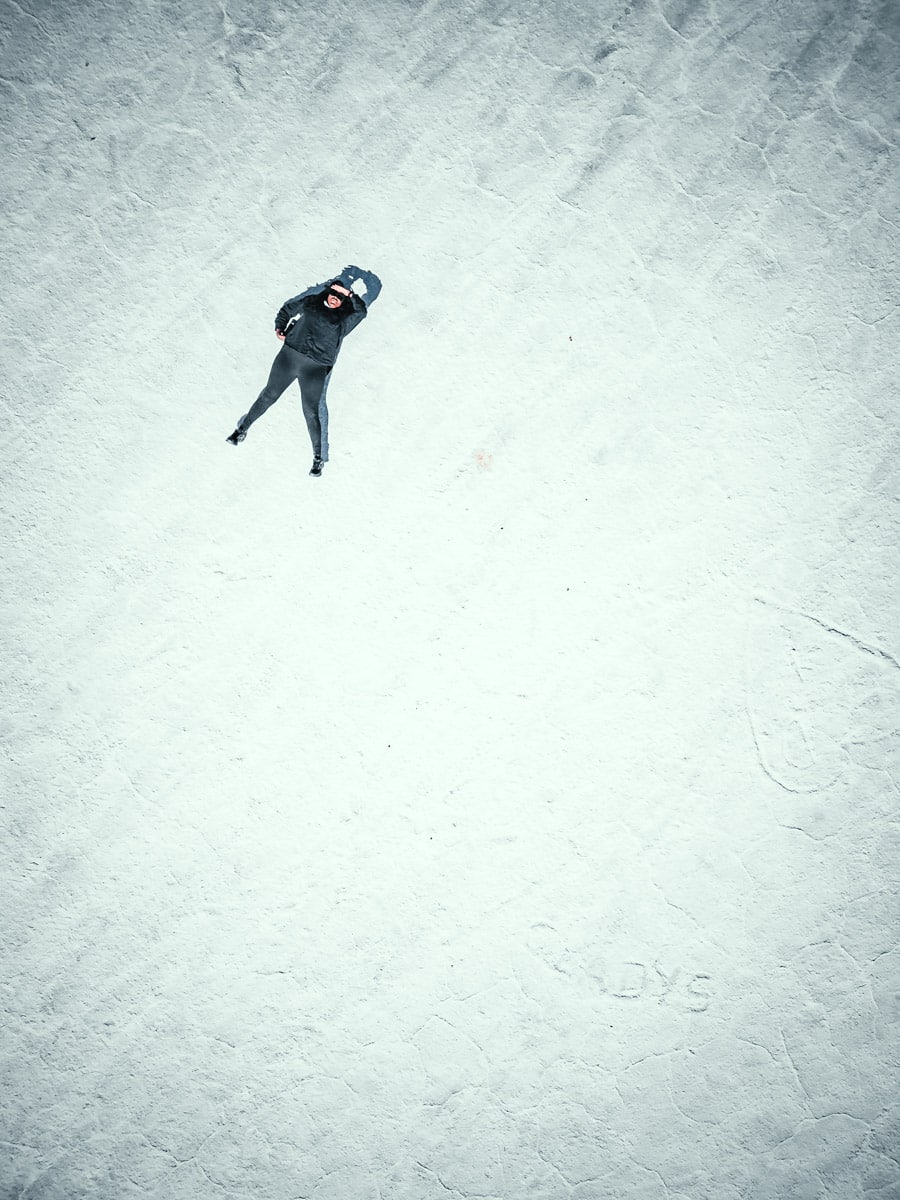
If you’ve ever had even a slight urge to check out the Uyuni salt flats, I urge you to go. There’s no other place in the world where you’ll find this kind of scenery at this magnitude. The crystalline salt flats form perfect patterns that weave their way across endless stretches of the desert landscape. During the rainy season (January to April), the landscape disappears underwater to create the famous Bolivia salt flat mirror effect you may have seen on the ‘Gram. And there’s actually a lot more to see here, including islands of cacti, three species of flamingos, “salt hotels” and abandoned trains you can explore.
If you have a knack for adventure and a passport, visiting Salar de Uyuni should be at the top of your travel list. Here’s a sneak peek at some of the fun!
View this post on Instagram A post shared by The Discoveries Of – Julianna Barnaby (@thediscoveriesof)
Take a Peek on the ‘Gram
Things to do at the salar de uyuni.
Think a trip to the Salar de Uyuni is only about seeing the flats themselves? Think again. There is a lot to see here, whether you choose a guided tour or want to explore the hexagonal patterns across the stark white desert all on your own. Here are a few of the must-see attractions.
Climb to the Top of Fish Island
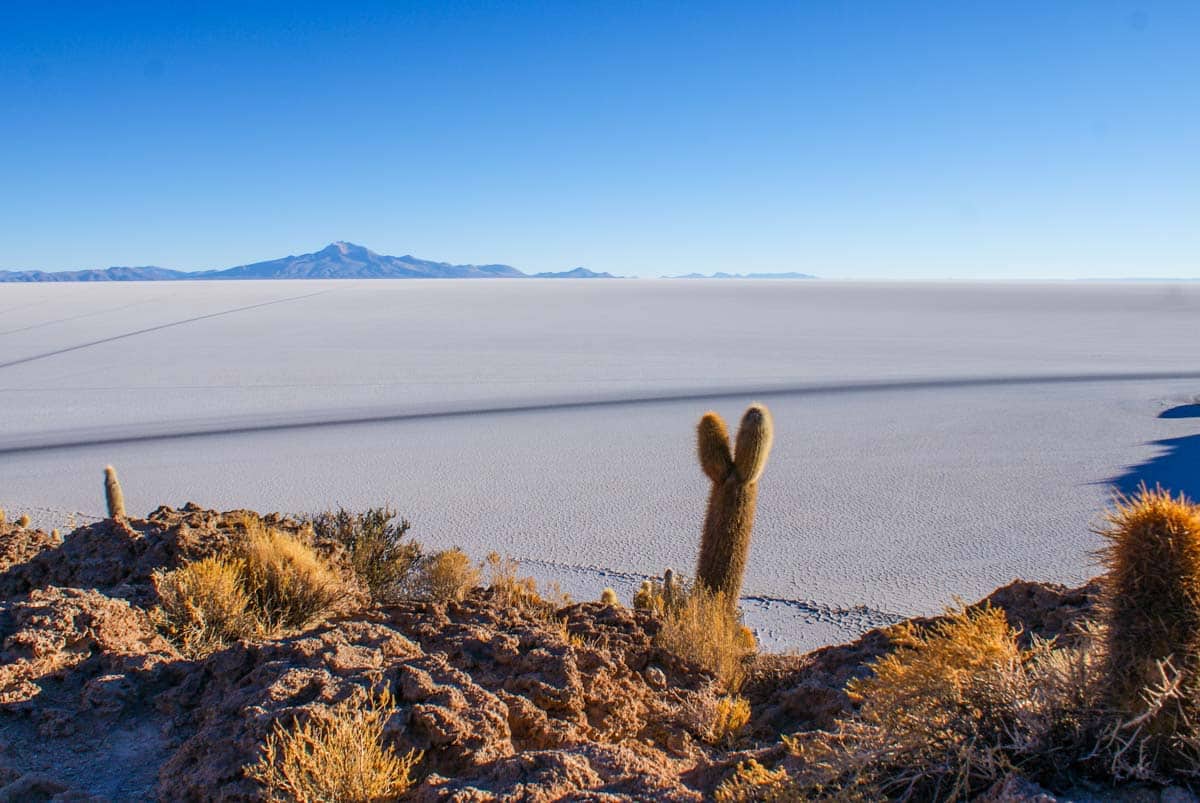
There are lots of cacti-laden islands that pop up in the vast desert landscape of the salt flats. Fish Island is one of my favourites.
You’ll see gigantic cacti (I’m talking 10 metres high), which is really an unexpected botanical wonder compared to the mostly desolate setting.
Stretch your imagination and look closely enough from above, and you might see why the island got its name. Supposedly it looks a lot like a fish (I’m still a bit sceptical, myself).
Nonetheless, it’s a beautiful change of scenery, with the Trichocereus (cereus) cactus and viscacha (a rather adorable rodent) offering a rare brush with nature in the otherwise rather barren plains.
You can also visit Incahuasi island – another cactus-covered island in the middle of the salt flats – do the 15-minute hike to the top for stunning views of the salar .
Play With Perspective and Take Some Weird Photos & Videos
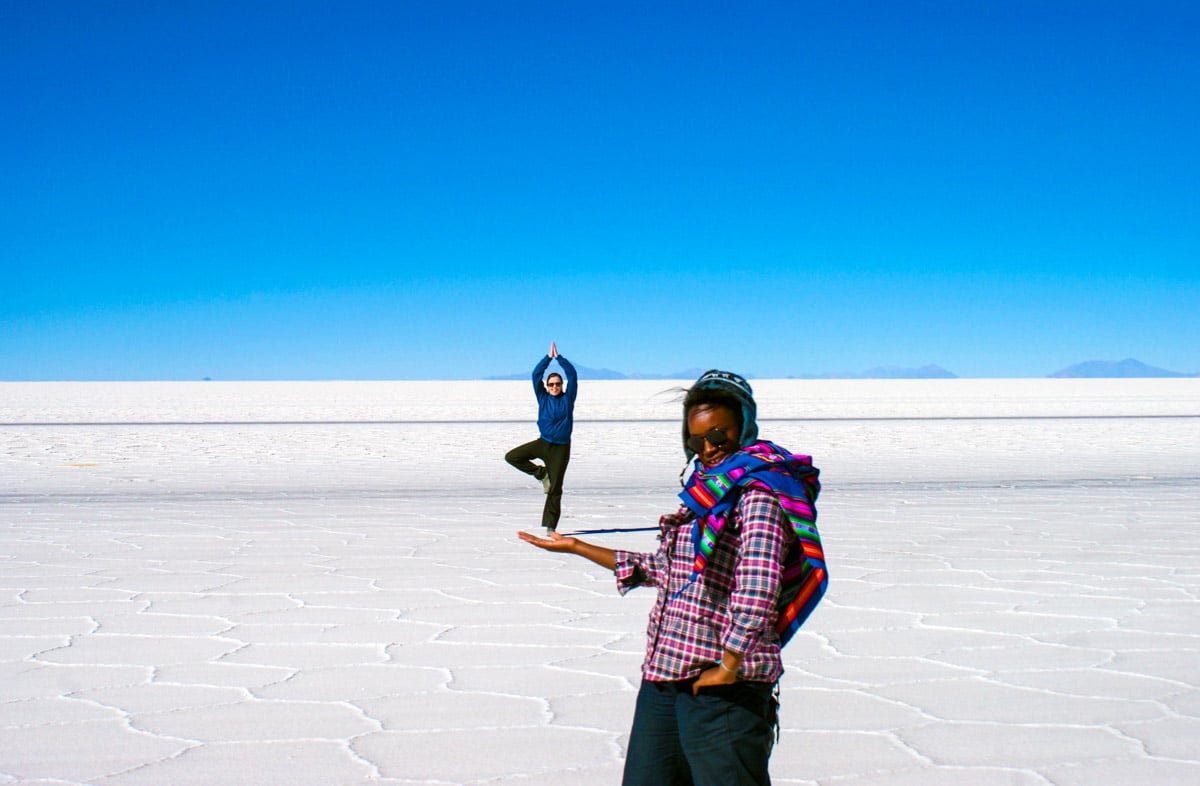
Look, I won’t lie – cheesy as the photos may look, it’s so fun taking pictures that mess around with perspective while you’re on the salt flats! There are very few places where you can find somewhere so large and flat, so it’s the perfect spot to take all manner of weird and wonderful pictures.
Your guide will probably bring some props, but if there’s anything specific you want to do, make sure you bring any necessary props with you.
Visit The Train Cemetery
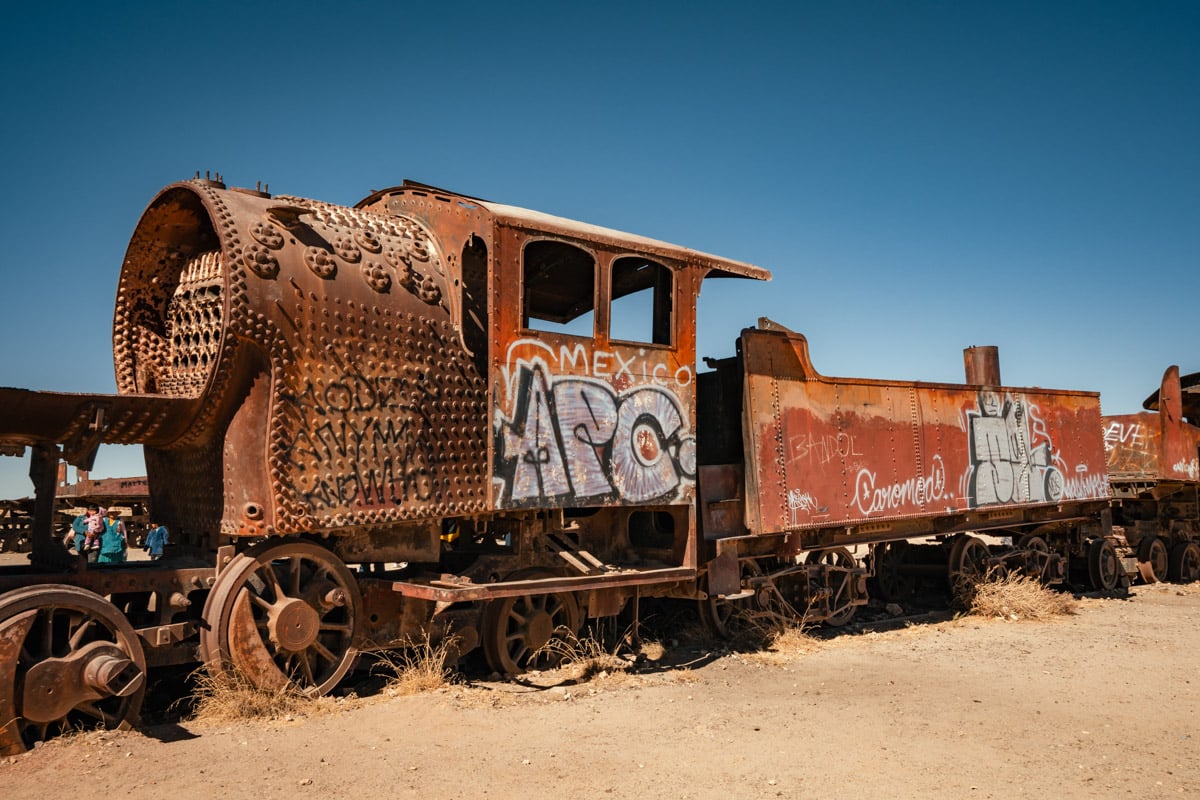
One of the stranger attractions near Salar de Uyuni is the train cemetery just outside of the city of Uyuni.
Say what? Yes, a cemetery of trains. Back in the 19th and 20th centuries, this region was a thriving mining area, and trains from the UK transported minerals from Uyuni to other regions. Flash forward a few decades, and the industry dried up, trains sat out in the Bolivian salt flat desert, and they formed what’s now the Train Cemetery.
It’s a cool place to spend an hour or so with your camera and catch some shots of the abandoned trains and the desert skies.
Check Out the Colourful Flags from the Dakar Rally
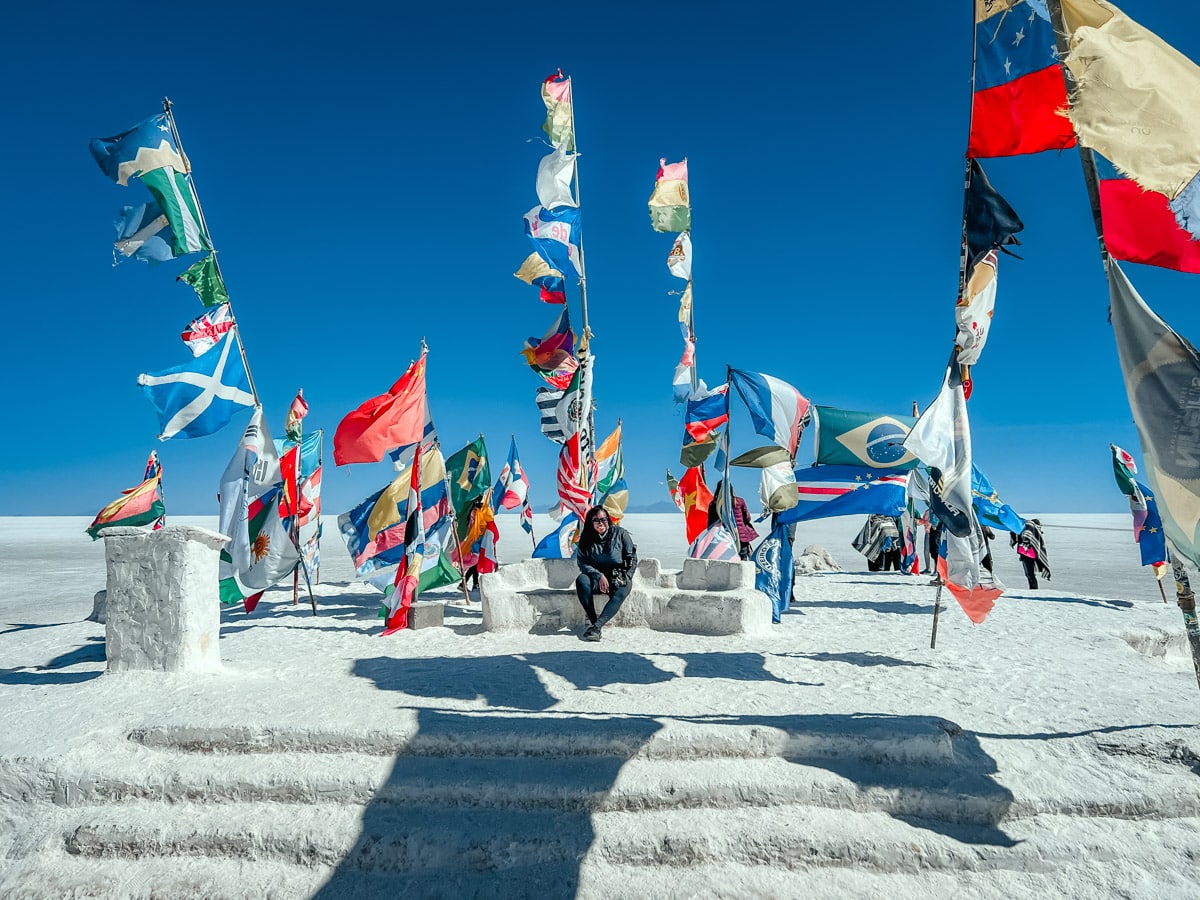
Ever heard of the Dakar Rally? You know, the gruelling race that involves taking your UTV, quad, motorbike, or truck through some of the world’s most inhospitable climates Mad Max style – well, it took place in the Bolivia Salt Flats a few years back.
People participated from all over the world, and you can still see their national flags proudly standing on a salt block against the whitewashed ground and bright blue sky.
It’s worth a stop for some great photos and a glimpse into the international event.
Explore the Old Playa Blanca Salt Hotel
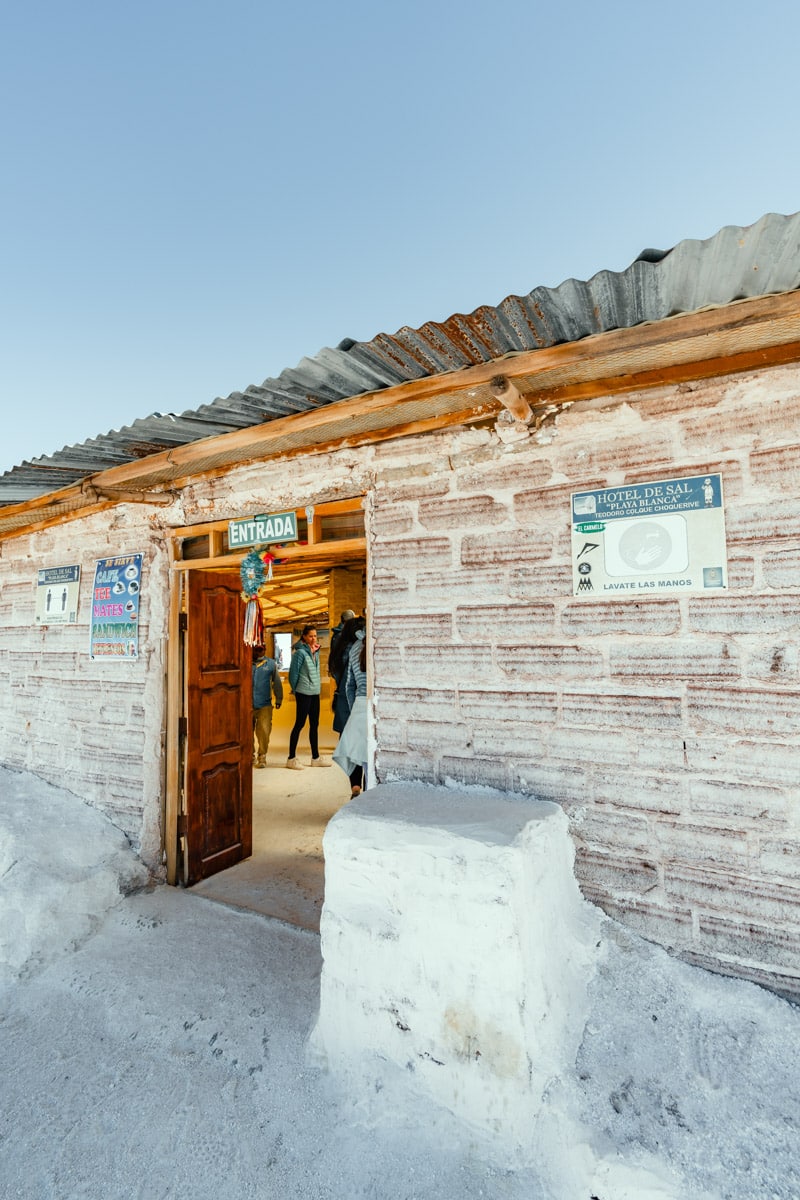
You’ll see a lot of “salt hotels” when you’re exploring Bolivia salt flats luxury hotels. There are quite a few worth visiting, but Playa Blanca stands out because the hotel sitting smack dab in the middle of the flats is no longer operating – meaning it’s a great place to use as a shelter from the sun and see a salt hotel up close too. It’s next to the Dakar Rally flags and has a gift shop and restrooms, making it a nice place to check out when you need a break from the blistering heat in the middle of the day.
Pop into the Salt Museum at Colchani
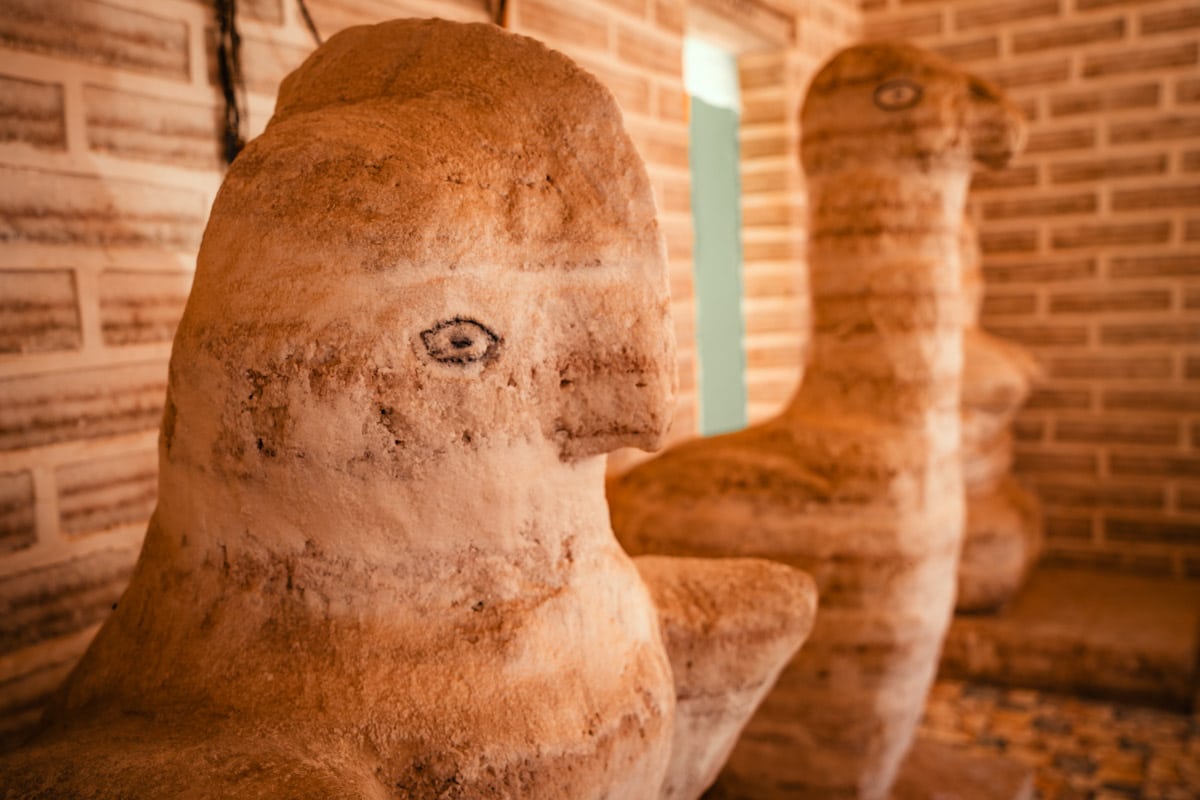
Although the small town of Colchani might not look like it has a lot going on other than its (pretty cool) market, it is worth popping into on your way to or from the flats if you can.
Why? There’s a cool museum where you can learn more about salt processing and mining, and the marketplace actually has some cool handmade souvenirs. The Museo de la Llama y la Sal gives you a chance to see a building and sculptures made from salt, and learn more about how it’s processed by locals.
Continue the Journey to Laguna Colorada
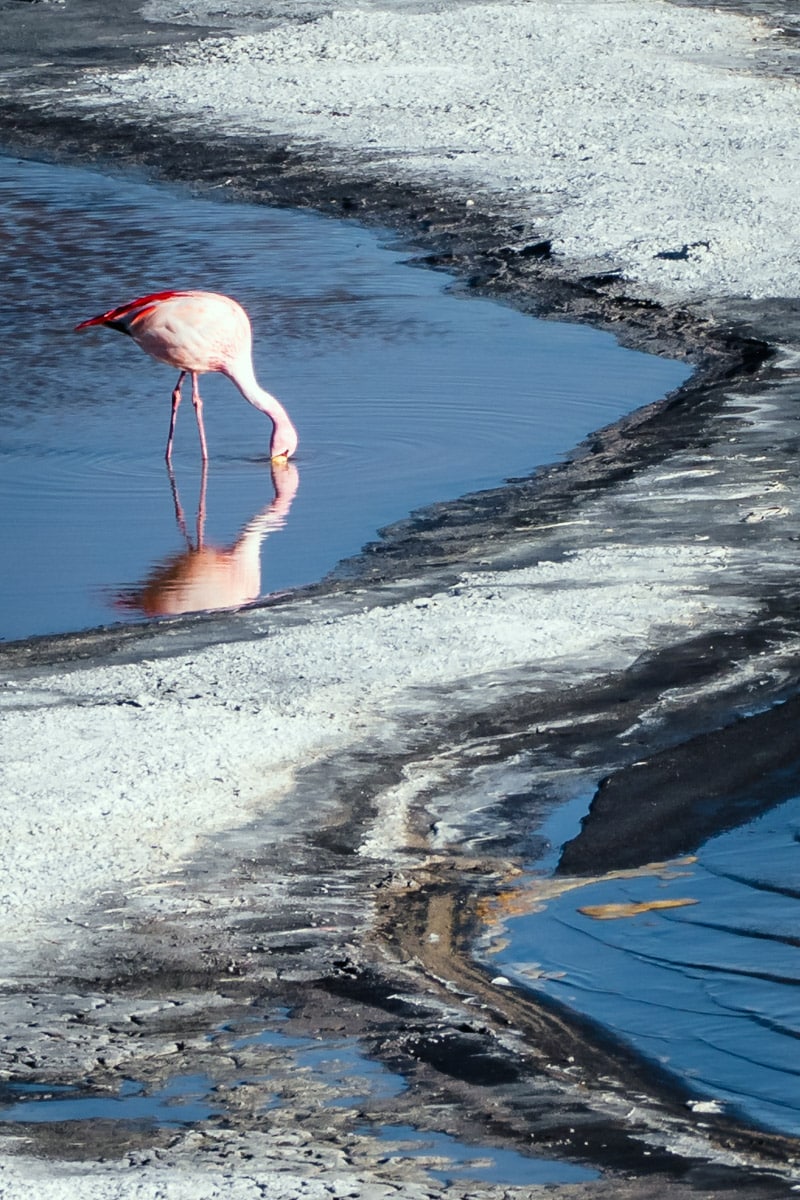
Have you ever seen a blood-red laguna before? Well, you’re about to now. Laguna Colorada, isn’t in Salar de Uyuni, but it’s close enough that you’ll definitely want to add it to your trip.
Why? It’s one of the best places to see flamingos in the region. Go in the summertime, and you’ll see literal thousands of them feasting on algae in the bright red lake in Southern Bolivia.
The lake itself is a photographer’s dream – the contrast of the crimson waters and bright white borax is a spectacle you have to see yourself to believe.
So Now You Know What to See, Here’s a Little More Info About the Salt Flats Too
The formation of the salt flats .
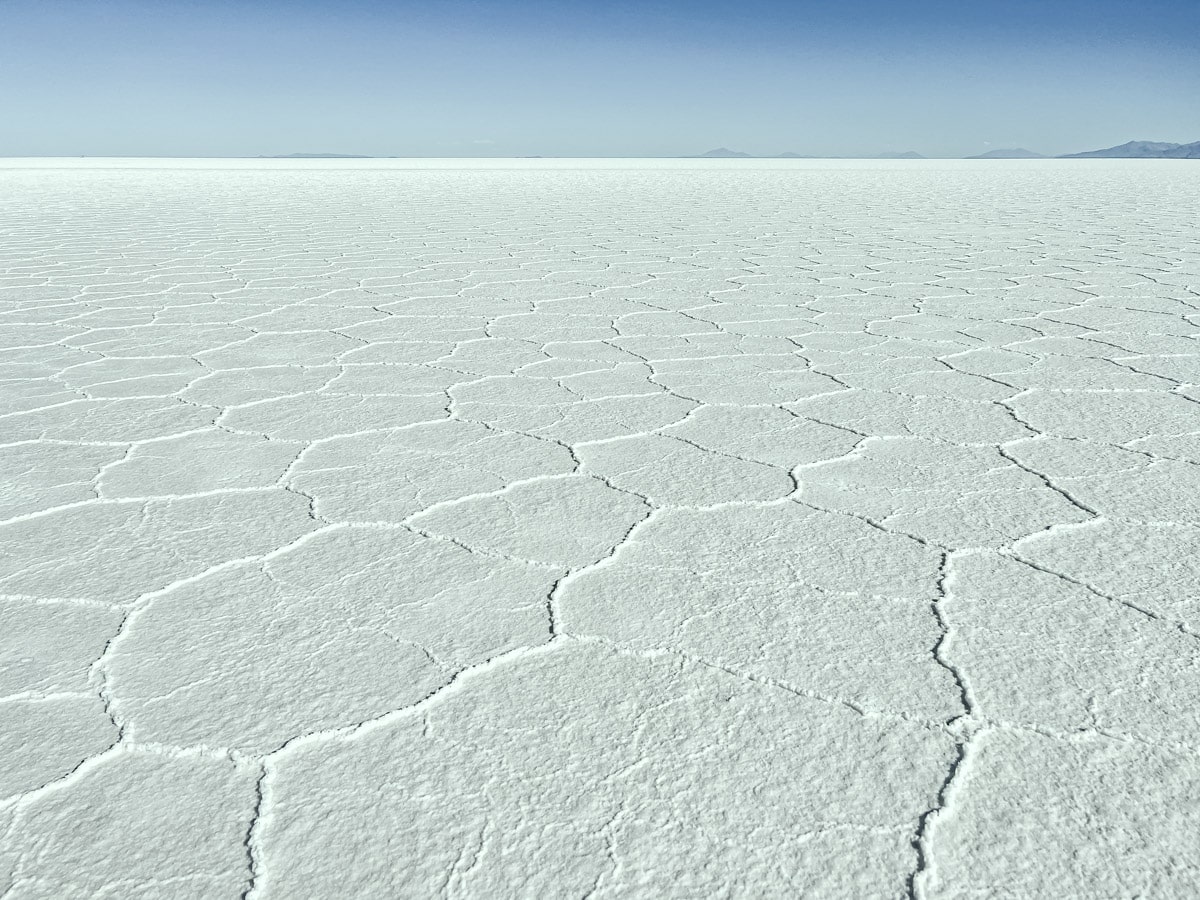
If you’re looking at the Uyuni Salt Flat and think it looks like something from a long lost time – you’re not wrong. The largest salt flat on the planet dates back to prehistoric times – when it was a massive lake.
It turned into a snow-white desert landscape somewhere around 40,000 years ago when Lake Minchin lost its water as shifting tectonic plates changed the landscape forever.
Now, it’s over 10,000 km of desert-like landscape, defined by the 10 billion tons of salt resting on the top layer.
Location
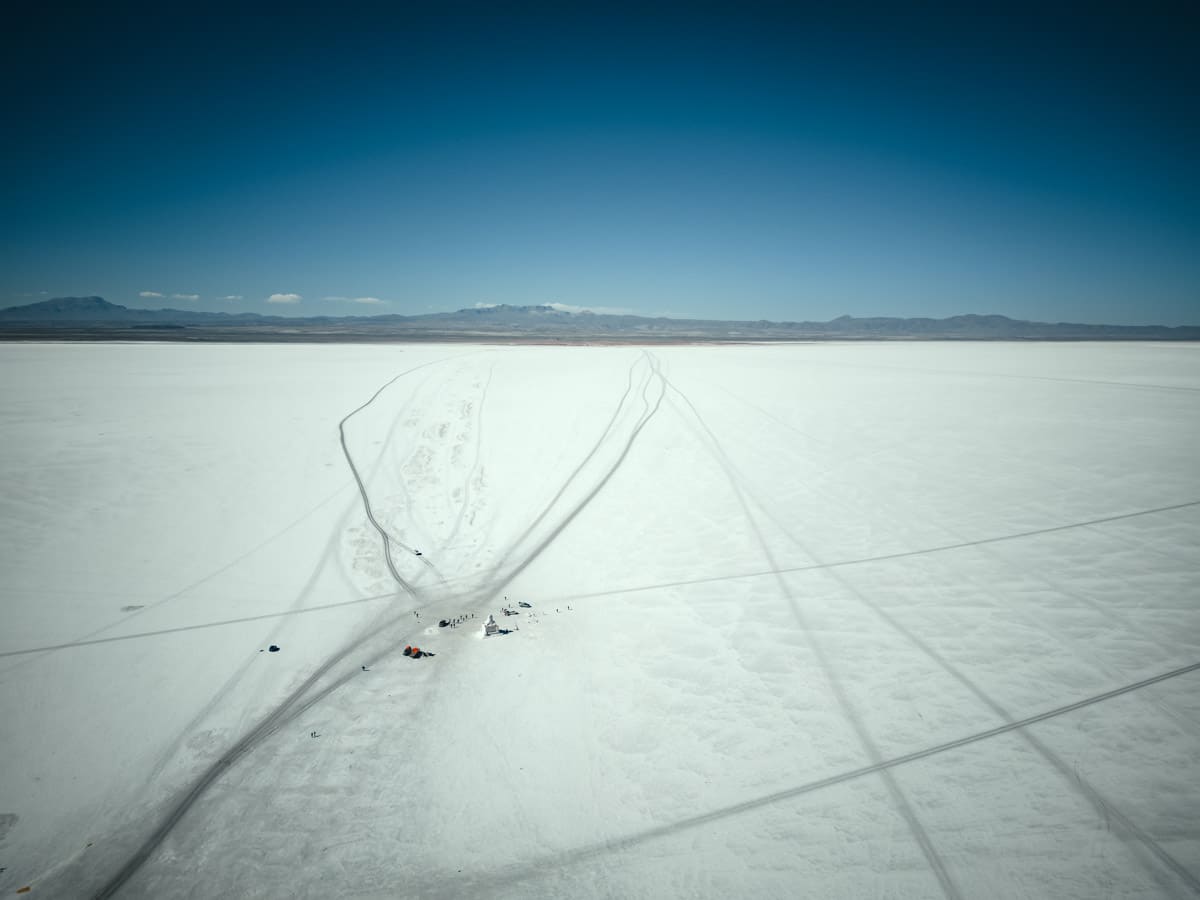
The Uyuni Salt Flats are a lot higher up than you may think. Situated at an elevation of 3,656 metres, the Bolivia Salt Flats are perched high in Southwest Bolivia near to the border with Chile . Uyuni is the nearest big city and is located on the eastern side of the flats. From Uyuni you make your way to the Altiplano, which is a plateau featuring the Sol de Mañana Geysers, several stunning lagoons and the blood-red Laguna Colorada.
It’s a Mining Hotspot
The salt flat in Bolivia is the largest you can find anywhere in the world, so there must be more than meets the eye, right? Well, as I mentioned earlier – the former lake dried up thousands of years ago, leaving this IG-famous landscape that people travel worldwide to see. But not only is it filled with the seemingly endless white salt, but it’s also rich in lithium – and accounts for around 50% of the world’s lithium reserves. Next time you see an EV on the road, it’s a safe bet that the battery is powered by lithium from Salar de Uyuni.
It’s Even Used By NASA
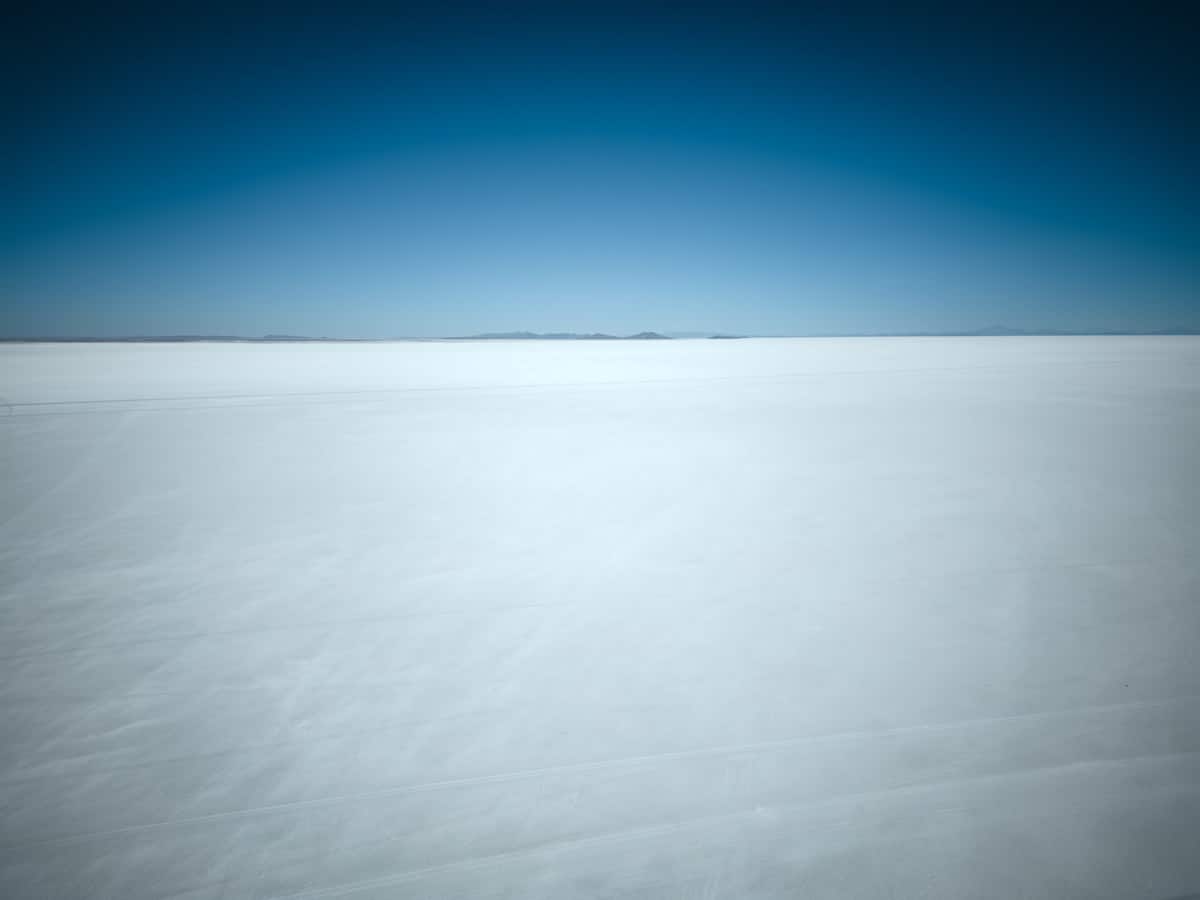
Ok, fun fact. NASA actually uses the salt flats to calibrate satellite orbits due to the large, flat surface area that the Bolivia salt flats lie on. You’ll know why when you see just how long, flat, and consistent the Salar de Uyuni landscape is.
Planning Your Visit to Salar de Uyuni
When to visit.
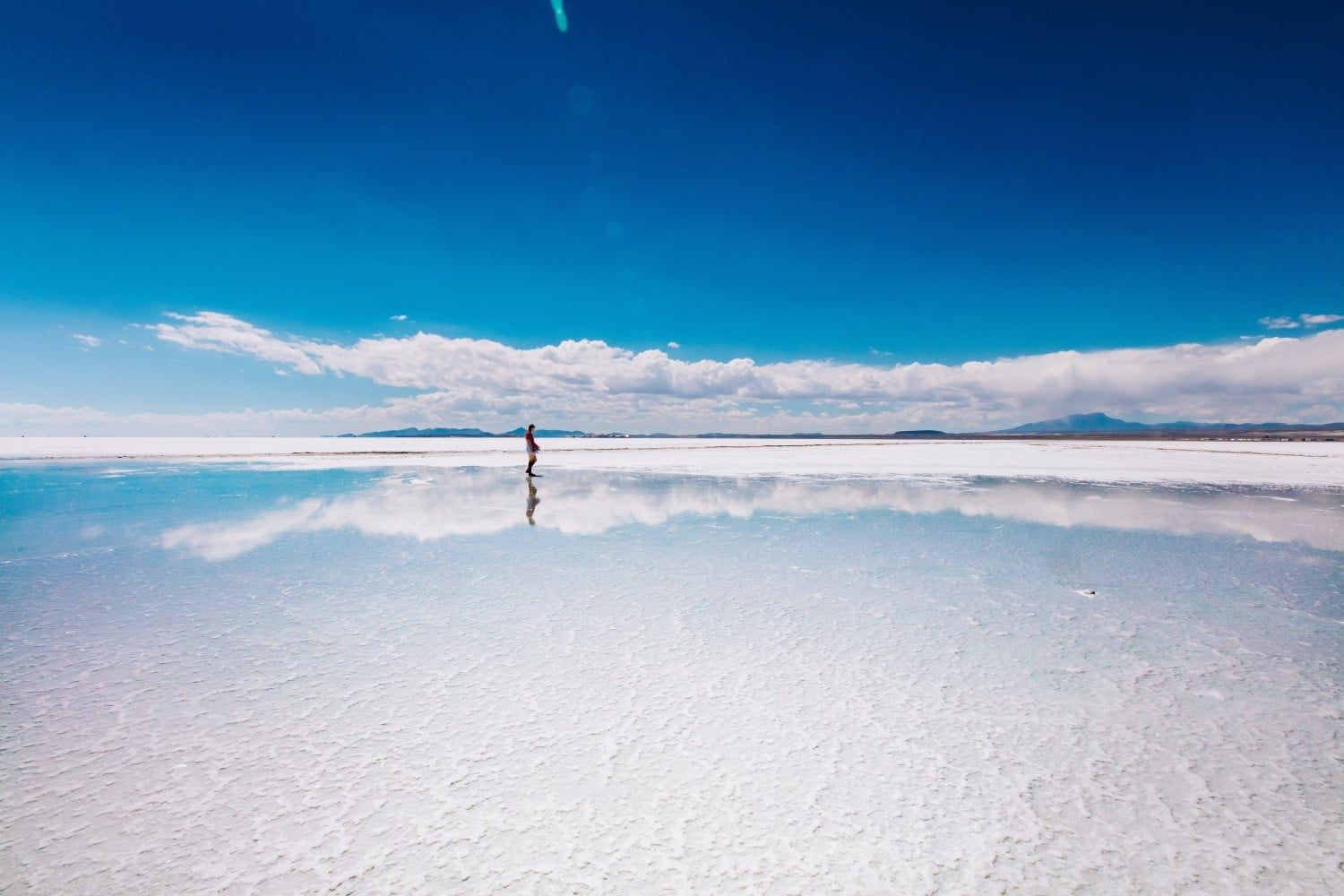
The rainy season lasts from November to February, making summer the best time to get the mirror-effect on the flats.Temperatures are usually relatively mild, often not getting much hotter than 70°F.
Wind and sun are factors much of the year, due to the high elevation and wide open flats.
Weather is much colder in the winter, with temperatures dipping below freezing, so be sure to pack for the weather if you visit from May to September.
The Best Time to Visit the Salt Flats
Seeing the Salar de Uyuni On a Tour
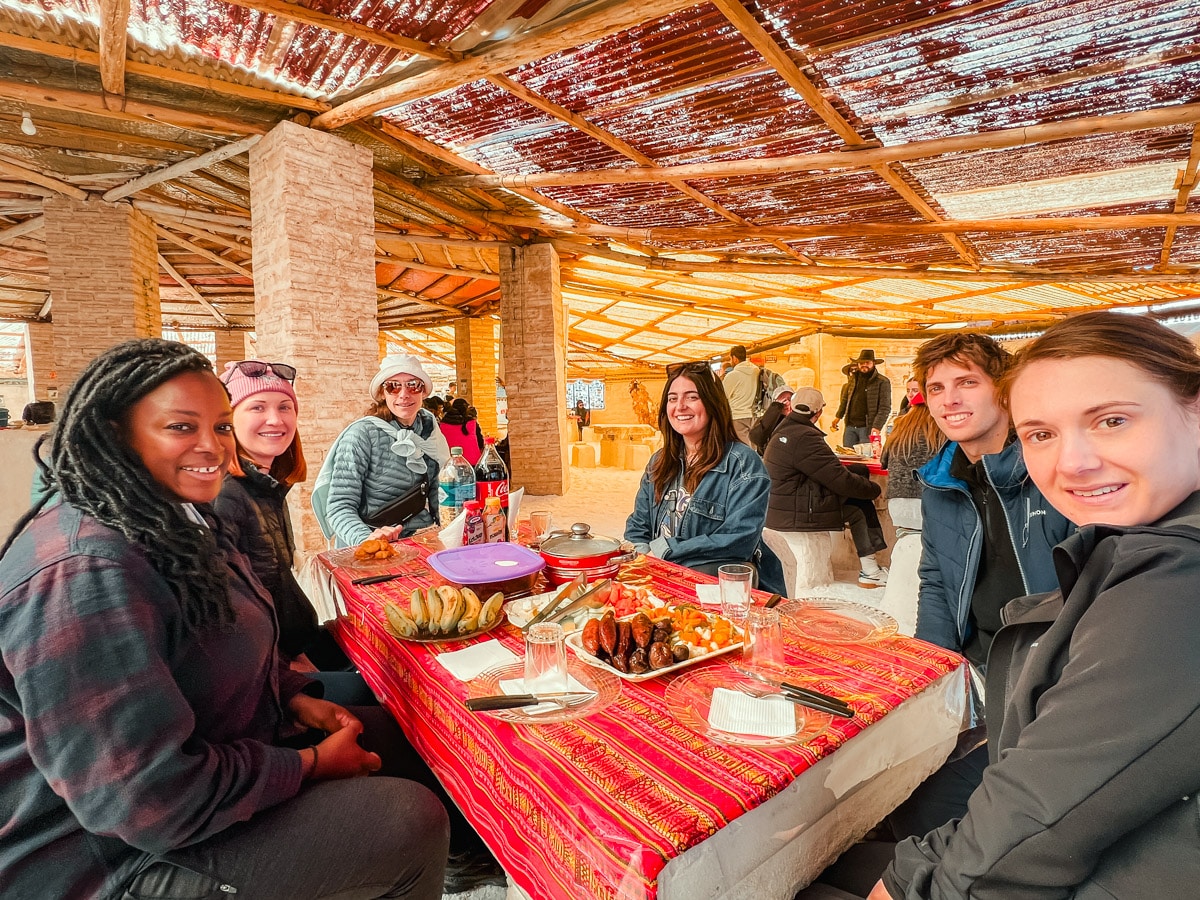
Frankly, taking a Bolivia salt flats tour is the best way to learn more about the destination, especially if you get a local guide.
You’ll need to be patient, as many of the tours aren’t quite as smooth as they should be. I recently took the Cordillera Traveller tour. While my guide was outstanding, the first day was a rough one, with no lunch and an aggressive driver.
Recommended Tours
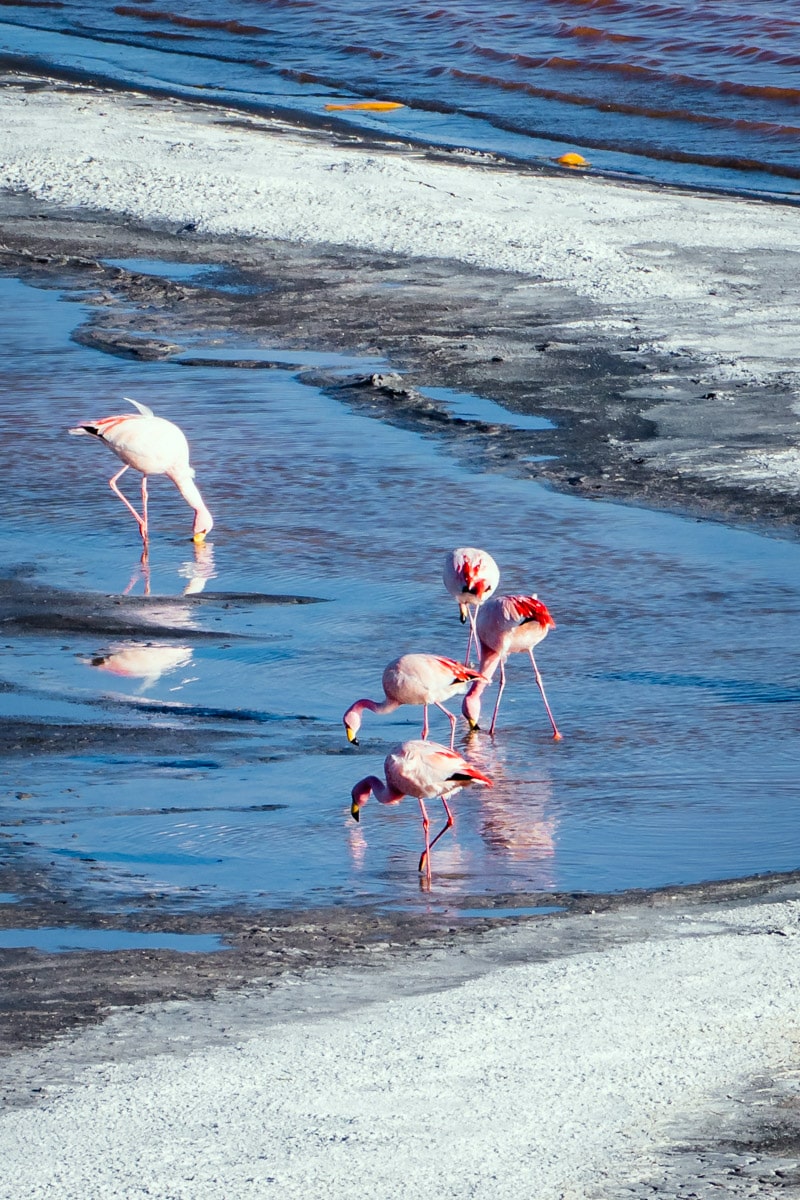
An In-Depth Guide to the Different Bolivia Salt Flats Tours
What Are the Different Tours Available?
Here’s a brief overview of the most common Salar de Uyuni tours available. I’ve gone into more detail about each of them below.
- One-day salt flats tour from Uyuni
- Two-day salt flats tour from Uyuni
- Three-day Bolivian altiplano tours from Uyuni
- Four-day Bolivian altiplano tours from Tupiza (recommended)
- Four-day tours from San Pedro de Atacama
Why Do I Recommend the Tour from Tupiza?
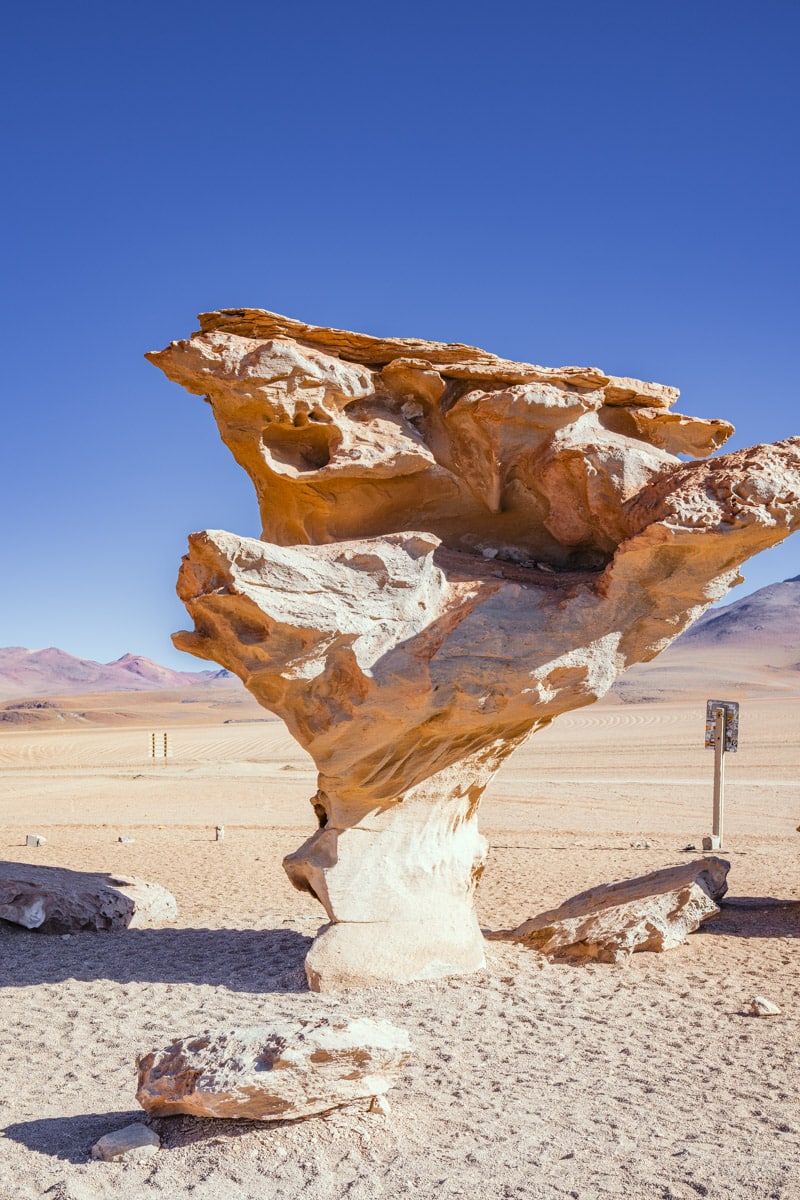
Although arranging a Bolivian salt flats tour is easily done from Uyuni itself, someone had tipped me off that the trip from Tupiza to Uyuni was much better. Why? Mainly because you get to see more of the area’s natural scenery and attractions.
So many people visiting the Bolivian salt flats do the same old tour. The landscapes are incredible enough that you’re pretty much guaranteed to be blown away whichever one you choose. But if there’s an option where you get to see more amazing stuff, quite frankly I don’t know why you wouldn’t choose it.
Sometimes a journey is as much of an experience as the destination and much as you’re in a hurry to see the Salar de Uyuni, it would be a shame to miss the other striking landscapes of the Bolivian altiplano.
Salar de Uyuni from Tupiza Tour Itinerary
Awesome sceneries abound in Bolivia. Perhaps none more so than on this Bolivian altiplano tour from Tupiza to Uyuni salt flats in the country’s wild west.
Here’s my trip report from the Tupiza to Uyuni salt flats tour I took to help you to understand what to expect.

The adventure on our Tupiza to Uyuni tour began as soon as we left the town. Within a few minutes, we were climbing up a steep road with a sheer drop, and a stunning landscape on one side.
The first stop was at a wide gorge dotted with unnatural-looking precipices. Jagged triangular cliffs soared up at awkward angles below. “This is the Quebrada de Palala,” said our driver, Jose.
On the other side of the road lay an equally impressive valley, where the mountains and hills varied in hues from blue to bright orange. “The area is very rich in minerals,” he continued. “Each mineral makes the earth a different colour, which is why you have so many different colours in that valley.”
The rest of the day passed quickly: a maze of impressive landscapes as we gradually gained altitude.
Accommodation that night was basic, as were the nights to come but the meals were hearty and the beds comfortable – the best you’re going to find unless you pay a significant premium.
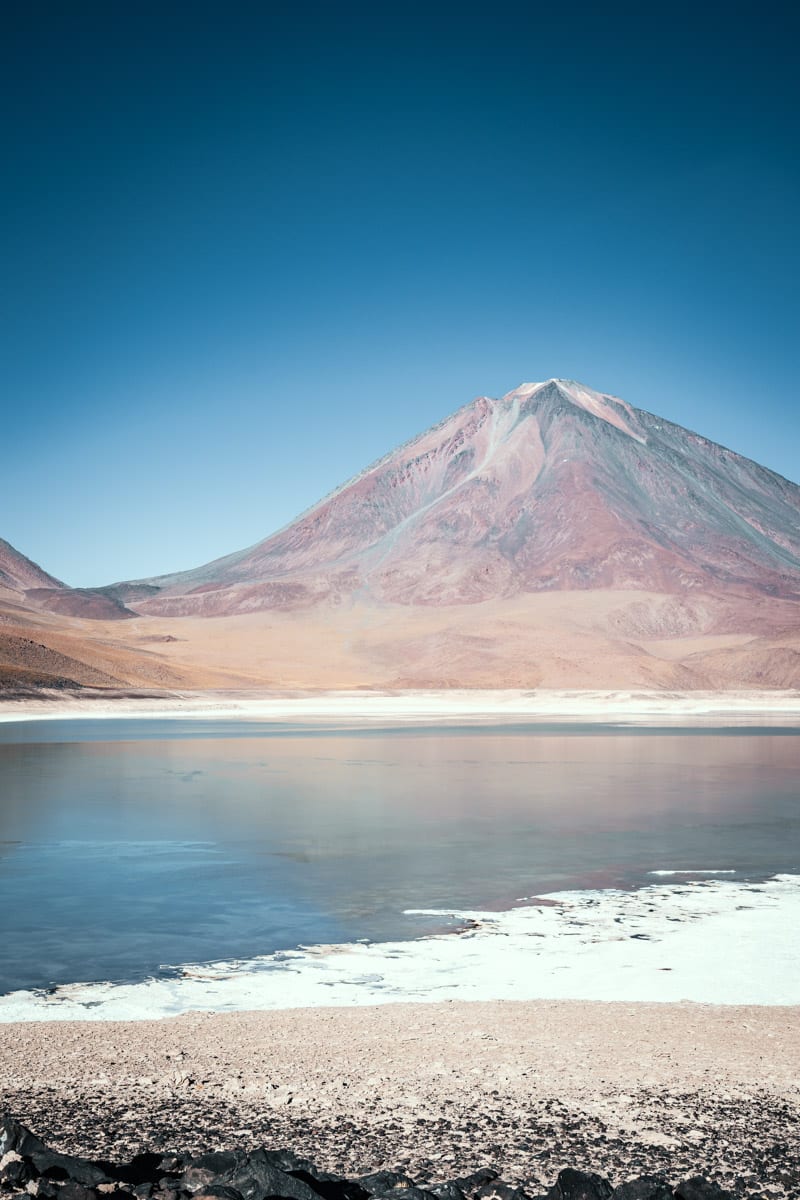
On the second day, we drove to the Laguna Verde , a green lake, and Laguna Blanca, a white lake, both of which were surrounded by a thick crust of salt, just a taste of what we were to see at the Salar de Uyuni on the final day of the Tupiza to Uyuni tour.
Driving along the roads, we saw locals warmly wrapped up in fleeces and clothes made out of precious llama wool.
As the day passed and we reached higher altitudes, the temperature continually dropped.
It wasn’t all about the jumpers, scarves and the elaborately patterned woolly hats favoured by locals and ‘gringos’ alike. We also pulled up at one of the much-welcomed highlights; the natural hot springs. Quickly donning our swimwear, we plunged into the pools and were welcomed by the warm water and a view of the adjoining lake.
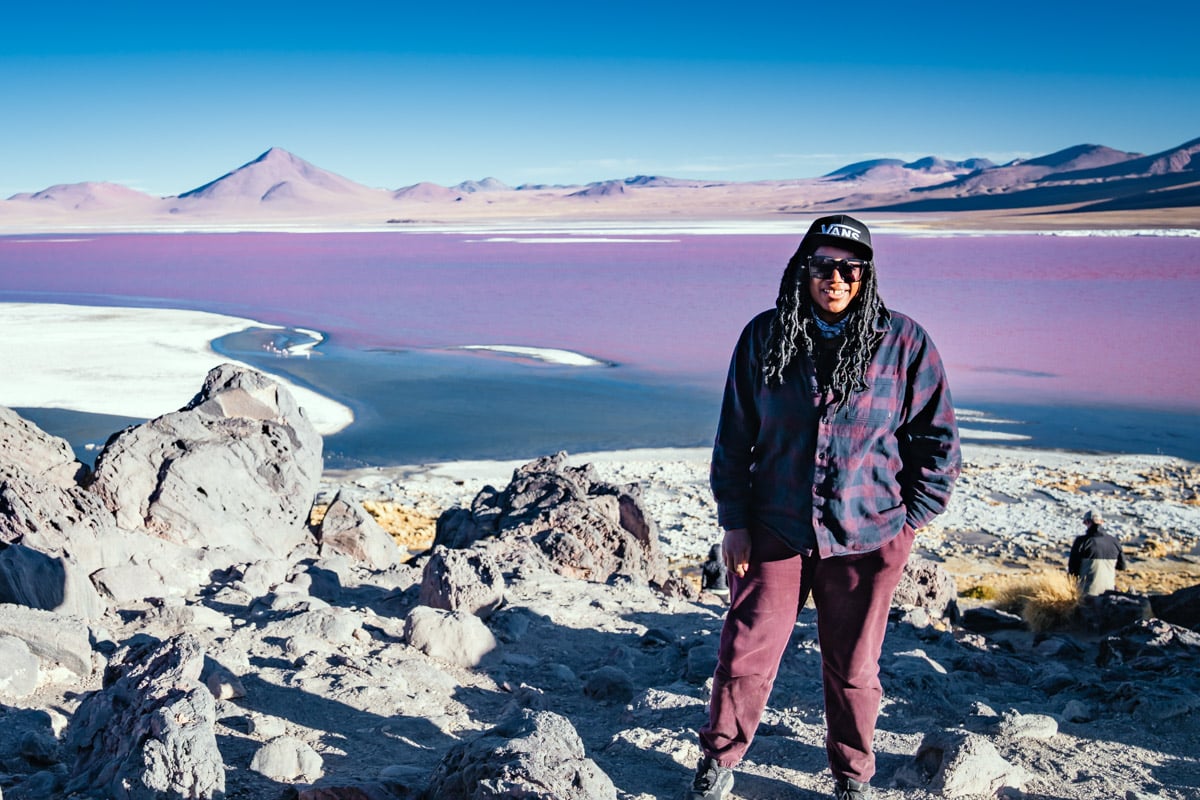
Minerals have played a major part in Bolivia’s history and present, but they are most immediately tangible in the landscapes.
On the third day of our Bolivian salt flats tour, we visited the Laguna Colorada, a lake of a bright red colour; caused by the high concentration of microorganisms in its waters. Dotted by thousands of pink flamingos, the effect is a rare one — the red of the lake and the pink of the birds stretching out for miles.
One of the beauties of the trip from Tupiza to Uyuni is the sheer variety of things to see. Bumping along the rather rough road, we’d turn a corner and be confronted by a desert plain dotted with weird rock formations, including the so-called stone tree, named for its tree-like appearance.
Peeping around another corner revealed a large lake bubbling with grey sulphuric mud springs. Salt plays such an important part in the landscape and could be seen almost everywhere.
We stopped in each place and took time to explore, climbing the rocks and running around to keep warm in the chilly wind.
Stunning Bolivian landscapes that aren’t the Salar de Uyuni
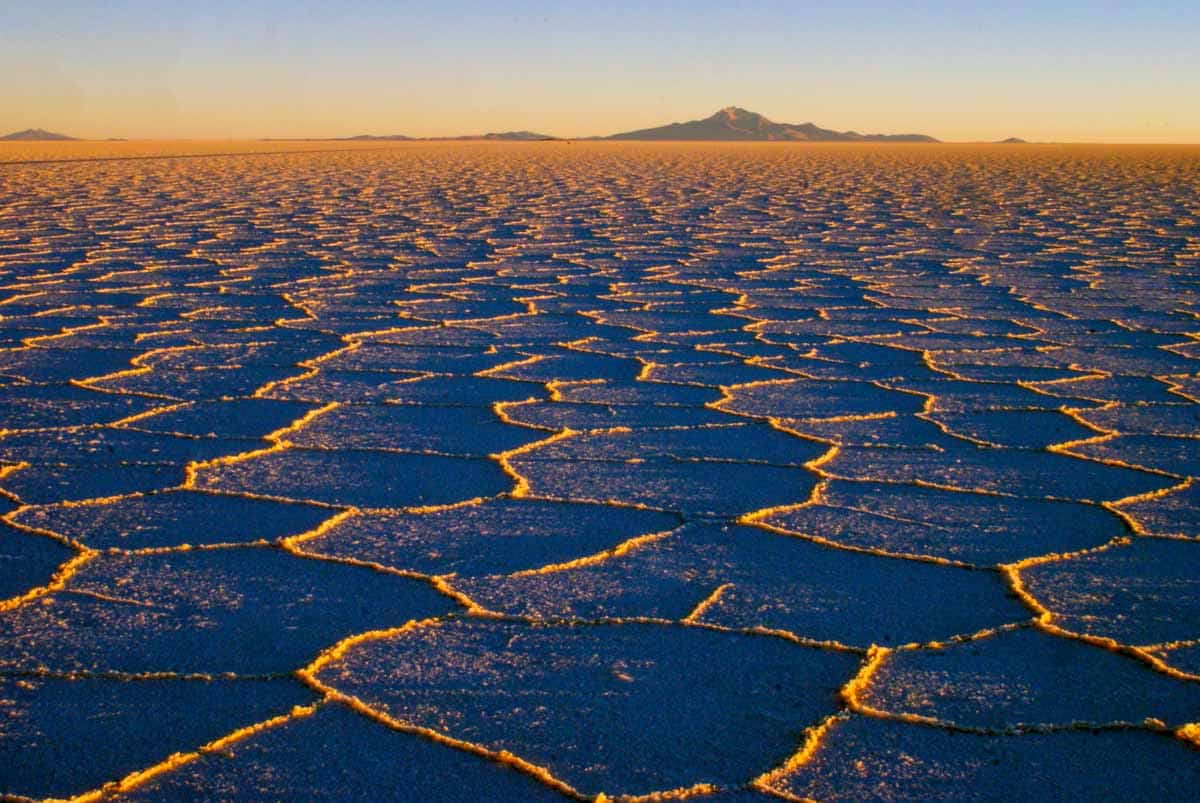
On the final day, there’s no doubt that we all grumbled as our 4am wake-up call sounded.
Piling into the Jeep, we peered anxiously for a glimpse of the Salar de Uyuni — the reason for the whole salt flat tour. As the sun began to rise, we realised that we were already driving along it!
I thought I had seen it all until I gazed out on the never-ending panorama of Uyuni’s salt flats. Miles and miles of thick salt crust crisscrossed with a jagged pattern of intersections. If you looked hard enough, you could see the faint tyre marks of the 4×4 that had brought us out to the middle of the plains.
Over the past four days, I had seen red lakes, green lakes, white lakes, jagged valleys, sulphuric springs, small Andean communities and llamas and alpacas galore. Still, nothing had prepared me for this.
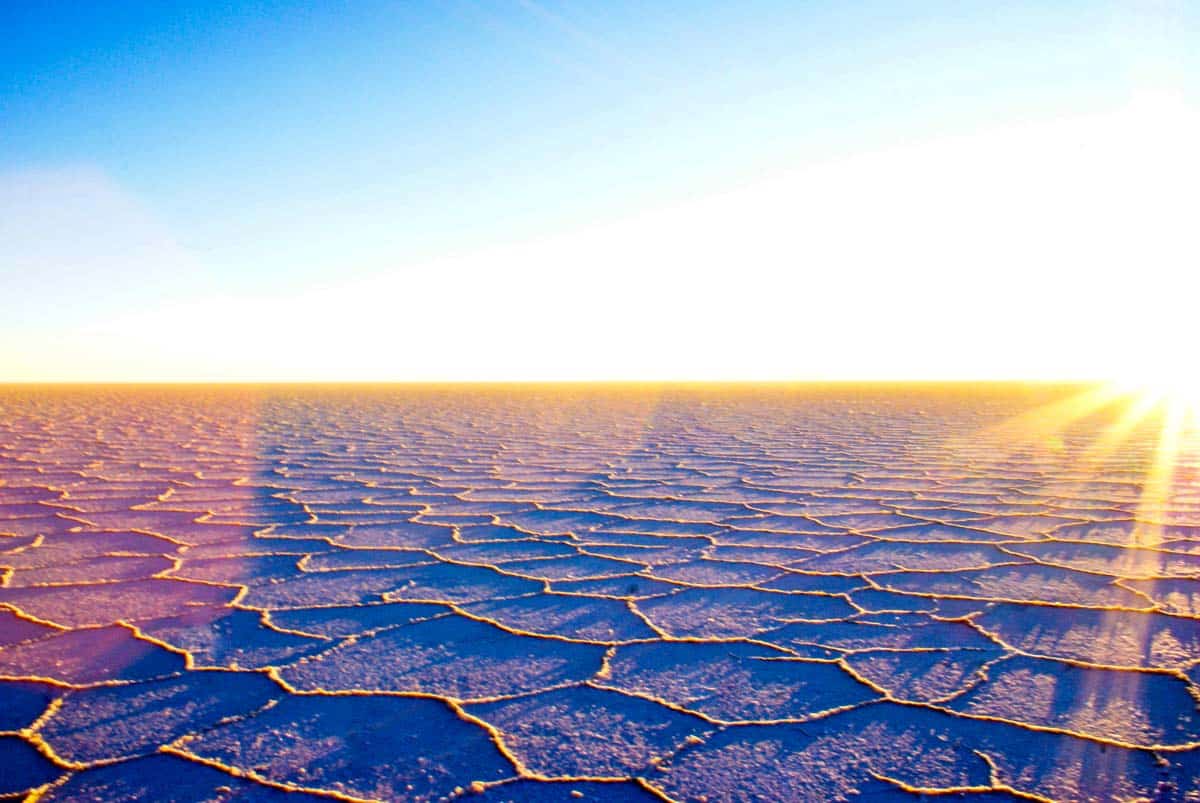
As the sun rose, the intersections between the interconnecting pieces of salt glowed orange. Gradually the light brightened, until our guide, Jose, warned us to put on our sunglasses to avoid snow blindness.
It was the perfect end to a four-day tour that had taken us from Tupiza to our final destination of the Salar de Uyuni.
We’d all faced the gruelling demands of the altitude (at the highest point in the trip, we reached 5,200 metres), along with which came the freezing nights that made you hurry for your sleeping bag as soon as the sun set.
We entertained ourselves for a few hours taking silly pictures and generally celebrating reaching our destination.
Finally, exhausted, we piled into the car and drove to the rather worn town of Uyuni, which was our final destination of the four days — many pictures and unforgettable memories later.
This tour is slightly different but covers the same destinations and includes sunrise on the salt flats
Alternative Tours
One-day tour from uyuni.
These usually start off with a visit to the train cemetery, then spend most of the day on the Salar de Uyuni with a trip to the “Fish Island” in the middle of the salt flats. Returns to Uyuni on the same day.
Book The One-Day Tour
Three-Day Tour From Uyuni
Same first day as the one day tour. These tours head further into the Bolivian Altiplano so you see more on the tour. You visit deserts, the Laguna Colorada, Laguna Verde and Laguna Blanca and the crater of the Sol de Manana volcano.
Book the Three Day Tour
Four-Day Tours from San Pedro de Atacama in Chile
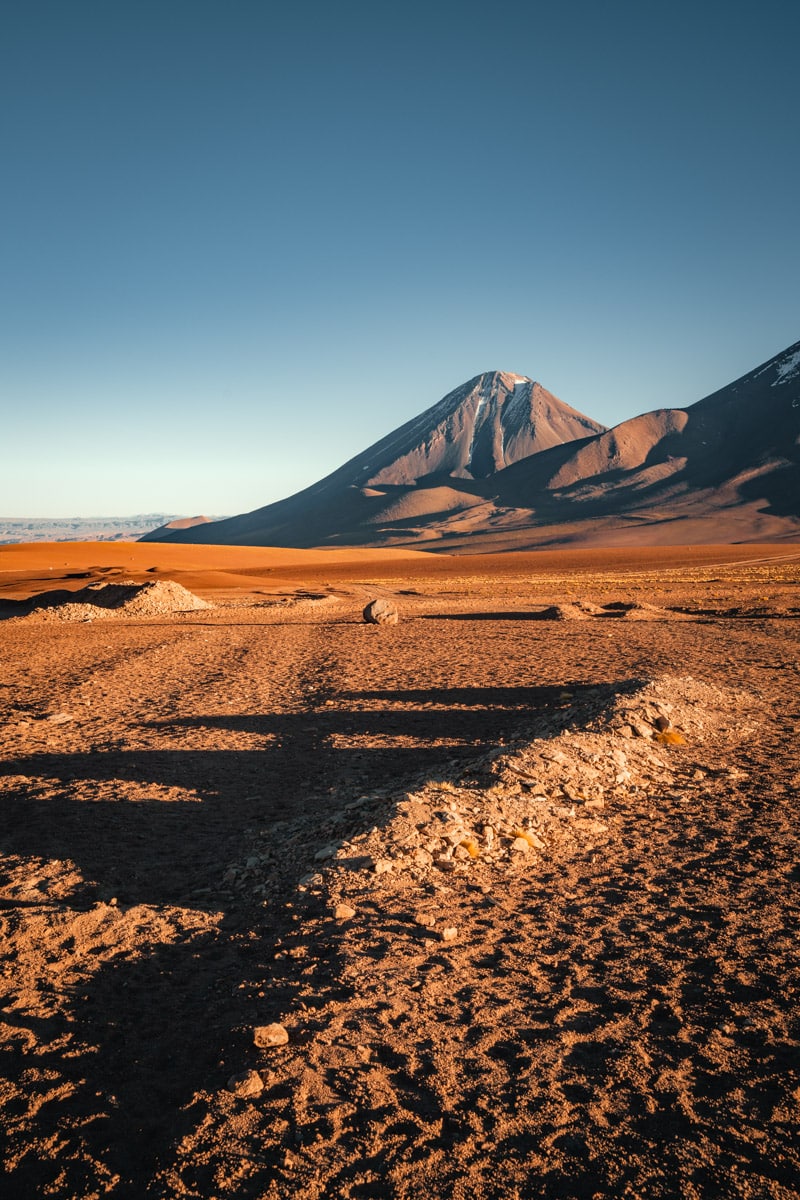
On day one this tour leaves San Pedro de Atacama and visits Licancabur volcano, Laguna Verde and Laguna Colorada plus the Polques hot springs and Sol de Manana. Day two covers a variety of lagoons for some flamingo spotting, cave paintings and a few canyons. The third day heads to the Salar de Uyuni itself and on the final day you return to San Pedro de Atacama.
Book the Four Day Tour from San Pedro
Starting Your Tour
As I explained above, there are three main starting points for trips to the salt flats: Uyuni, Tupiza and San Pedro de Atacama in Chile. Here’s how you get to each one of them.
How to Get to Uyuni
From La Paz you can get an overnight bus to Uyuni. It gets a bad rep but I did it in the other direction (from Uyuni to La Paz) and it wasn’t a big deal. The bus station in La Paz is a bit rough, just watch your bags as pickpockets are pretty rife.
The trip from La Paz to Uyuni takes about 7.5 hours. If you choose to take a bus, it will cost you about £16 to £23.50 ($20 to $30) each way.
By Train
You can take a train from Oruro to Uyuni. Oruro is about 3.5 hours by car from La Paz, so you’ll need to arrange transportation there first. The bus ride is relatively inexpensive, at around £4 ($5). From Oruro, the train ride takes around 7 hours, but it’s a beautiful ride and costs around 8 £ ($10).
Alternatively you can fly direct from La Paz to Uyuni. Getting from La Paz to Uyuni by plane takes around 1 hour and is typically around £157 ($200).
How to Get to Tupiza
Now, I’m not going to lie. Getting to Tupiza is a little more difficult than going direct to Uyuni, and generally involves an uncomfortable bus journey from one of the major cities.
The bus I took seemingly sought out potholes to bump over just for the sh*ts and thrills but it got me there and I came out in one piece so no stress. Just a bruised ass. Totally worth it though.
Fly to the Bolivian capital, La Paz, and catch a bus to Oruro and then a train to Tupiza.
Alternatively, fly to Salta in Argentina (via Buenos Aires), get a bus to the Bolivian Border at La Quiaca/ Villazon (six hours) and then catch a bus to Tupiza (three hours).
How to Get to San Pedro de Atacama
If you are getting to San Pedro de Atacama from Santiago , Chile’s capital, you are best flying to Calama airport and then either booking a transfer or catching a bus to San Pedro de Atacama.
How to Choose Your Tour Company?
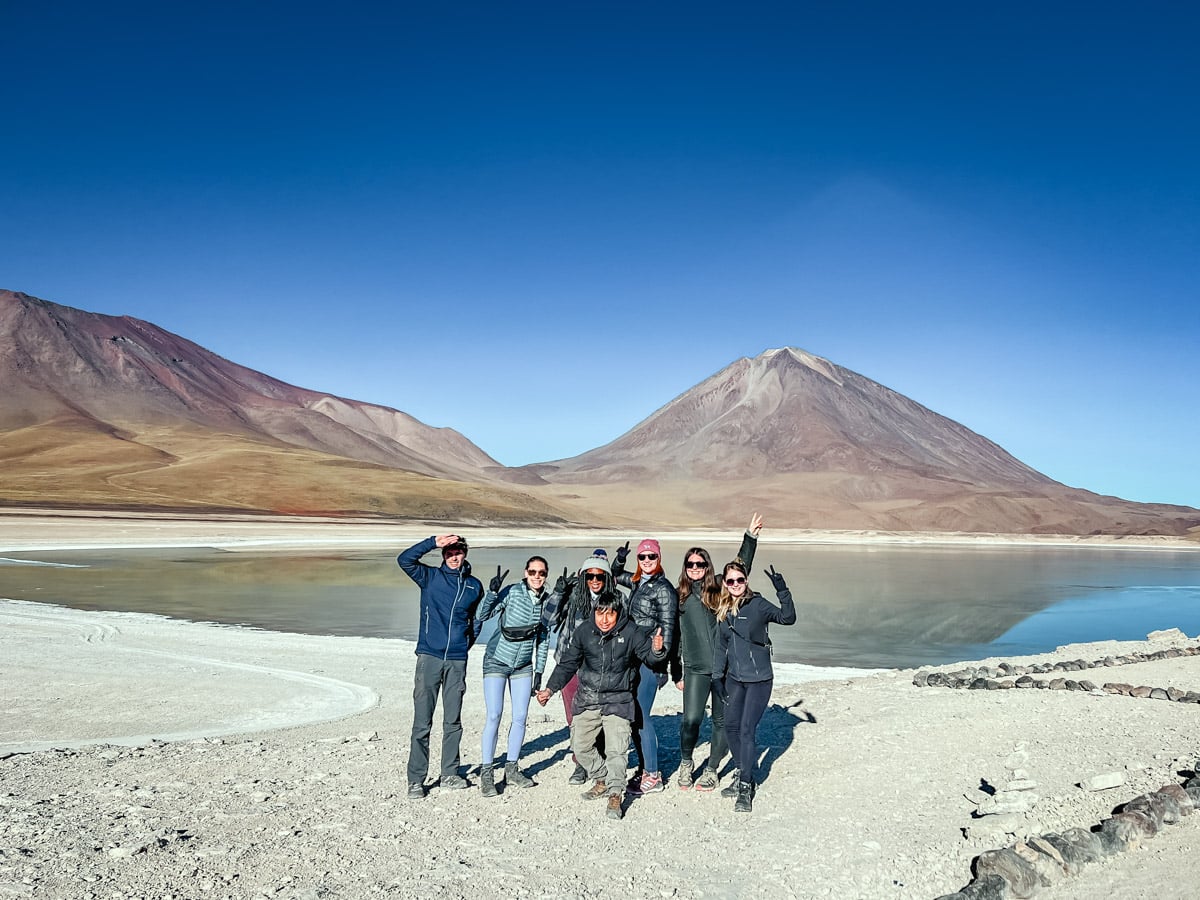
There are a lot of tour operators offering very similar tours to the Bolivia salt flats so it can be difficult to choose between them. Although it is tempting to go for the cheapest tour, it’s a decision that can come to bite you in the ass.
Spending the extra $ can make the difference between doing the tour in a vehicle that breaks down all the time with a guide who doesn’t speak your language and spending nights in super-basic accommodation and… not having to suffer any of those things. I exaggerate not.
As a guideline, you should find out:
- Does the driver speak your language? Many drivers do speak English but some don’t – make sure you check ahead.
- Will they pick you up from your accommodation?
- How many people are there per vehicle?
- How new are the vehicles?
- Where does the tour start and end?
- What food and drink is covered?
- Does the tour include entrance to the national park? Heads up: the answer to this is usually no.
Where to Stay for Salar de Uyuni
Hotel de sal luna salada (luxury).
Want to spend the night in a Bolivia salt flats hotel? Hotel de Sal Luna Salada is about as cool as it gets – as the hotel walls feature salt blocks from the nearby flats.
Located in Colchani in the heart of the salt flats, you can choose twin or full-size beds in this well-designed accommodation with views of the mountains and flats.
Enjoy local Andean cuisine at breakfast, fun activities in the game room, and a gorgeous viewing deck with fire pits for chilly evenings.
Check Rates and Availability
Casa del Sal (Mid-Range)
Another of the famous salt hotels in Uyuni, Casa del Sal , offers affordable rooms that feature brick-walled interiors with nature-themed decorations and exposed beams on the ceilings.
Rooms are plenty spacious and available at good rates, making it a good choice if you’re visiting on a budget.
Check Rates and Availability
What to Pack for Salar de Uyuni
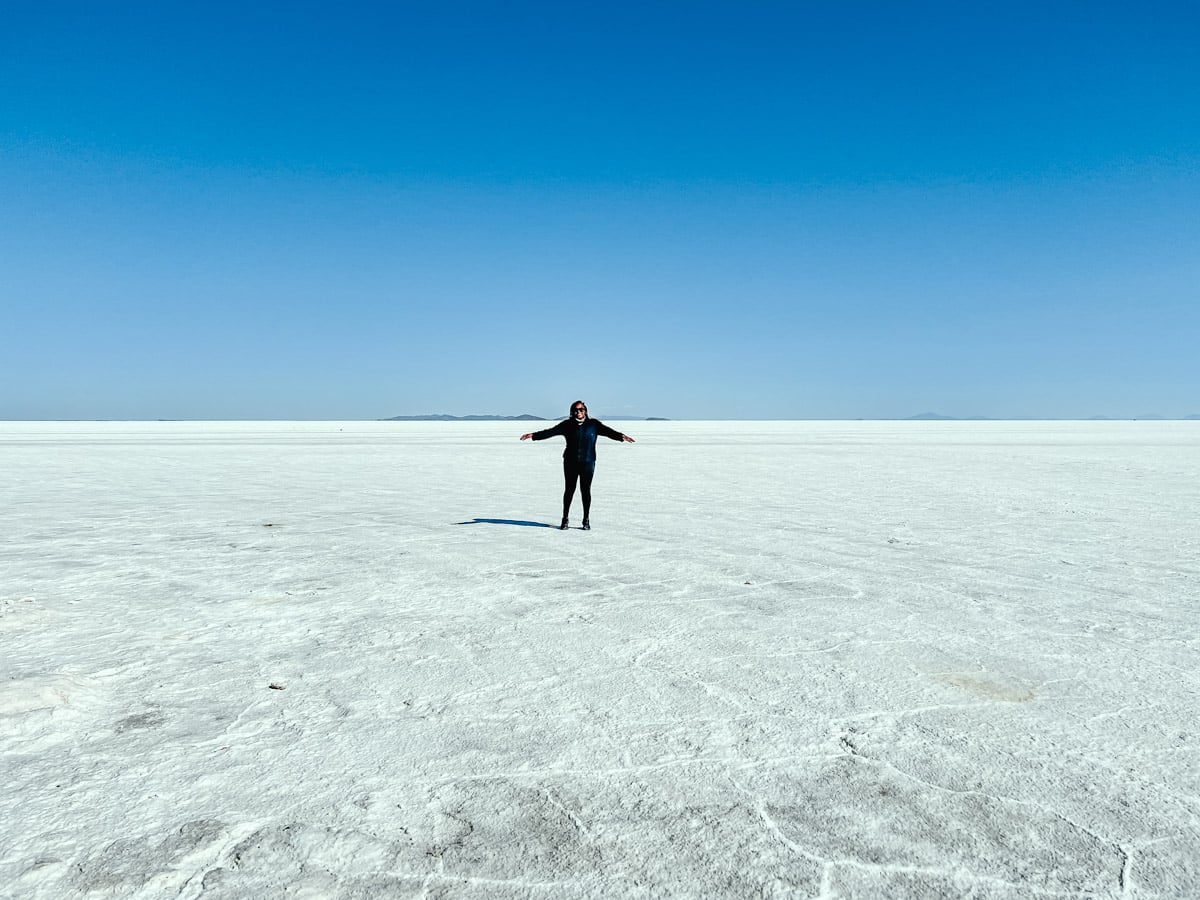
So, the altiplano is that difficult combination of having super-strong sun and very cold temperatures at night. Wrap up warm and wear layers you can easily remove as the temperature is incredibly changeable.
I suggest a thermal base layer top and bottom, a mid layer, a jumper and a softshell to help keep you snug against the wind.
Some things you’ll definitely want to pack include:
- Base Layer Top
- Base Layer Bottom
- Brushed Fleece Shirt
- Warm Bottoms
- Fleece Half-Zip
- Outer Shell
- Waterproof jacket (if you’re visiting in the rainy season)
- Water bottle
- Hiking trainers / Hiking Boots
- Sunscreen
- Scarf / Buff
- Woolly socks
- Quick dry towel
Read More Bolivia Travel Guides
- 10 Days in Bolivia, The Perfect itinerary
- The Best Bolivia Salt Flats Tours
- 18 Amazing Places to Visit in Bolivia
- Surreal Bolivian Landscapes that you Need to See to Believe
- When’s the Best Time to Visit the Bolivian Salt Flats?
Love This? Save and Share on Pinterest!
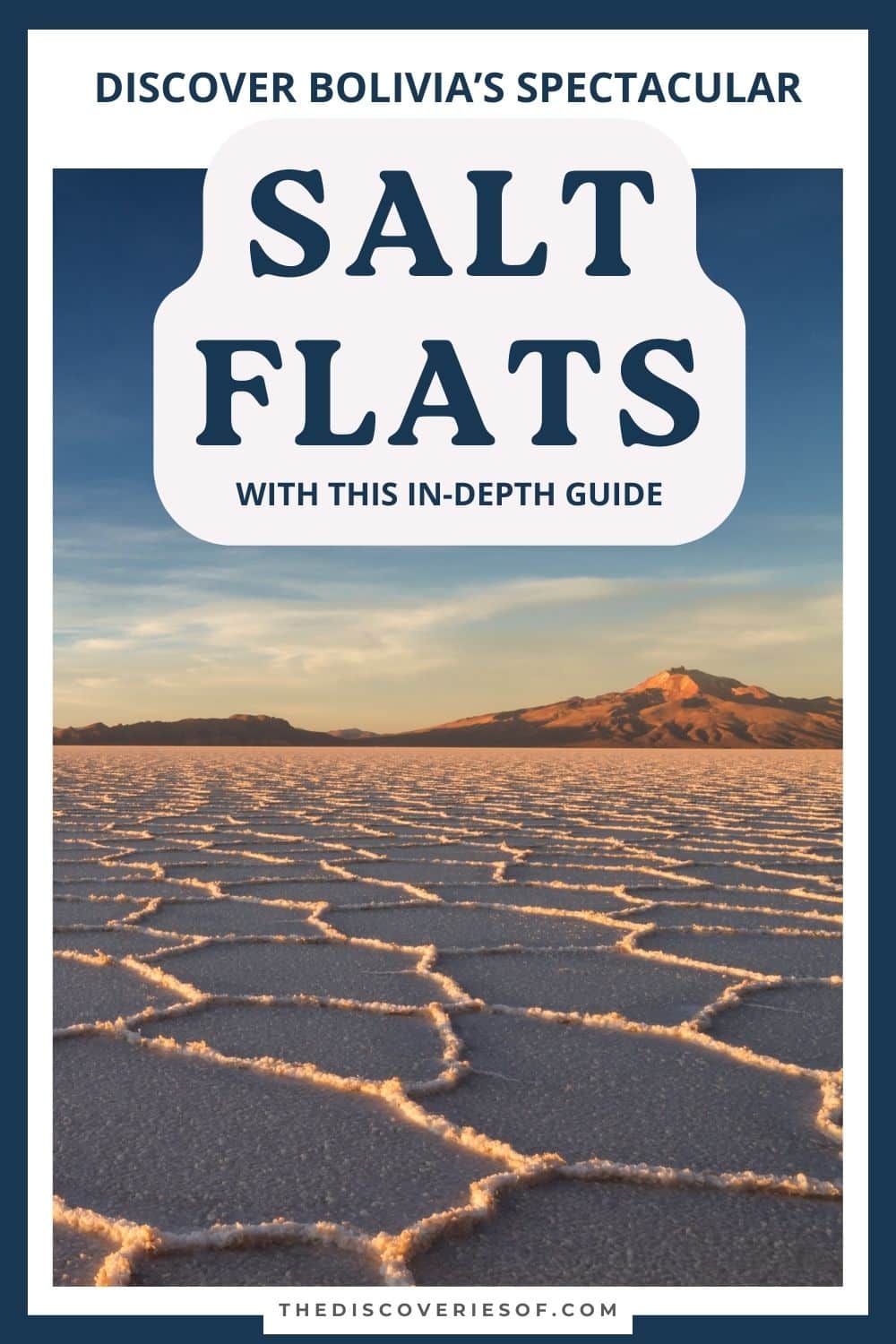
I’m Julianna Barnaby - a professional travel writer and geek extraordinaire. I started The Discoveries Of to help you to discover the best of new destinations from around the world.
Discovering new places is a thrill - whether it’s close to home, a new country or continent, I write to help you explore more and explore differently.
Related Posts
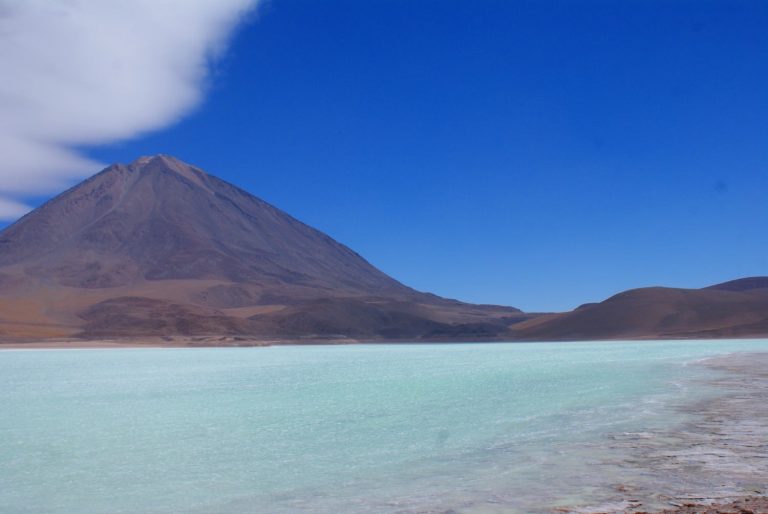
Laguna Verde Bolivia: A Practical Guide To Visiting Bolivia’s Green Lake
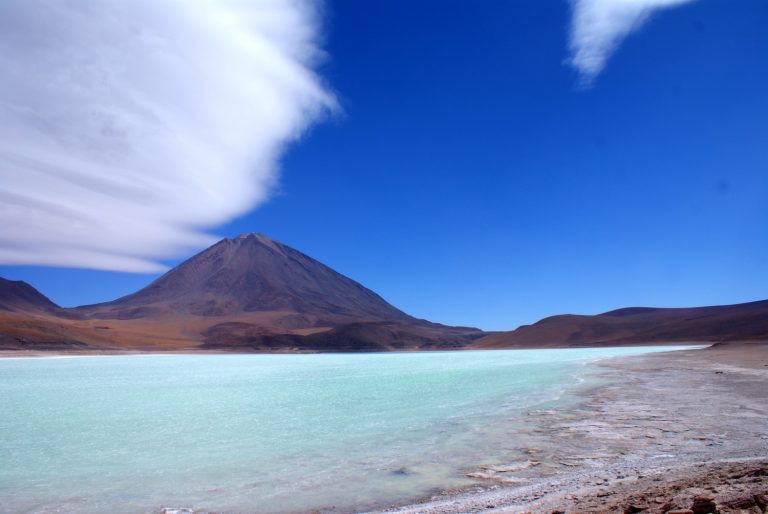
Bolivia’s Landscapes: Surreal Spots You Need to Visit
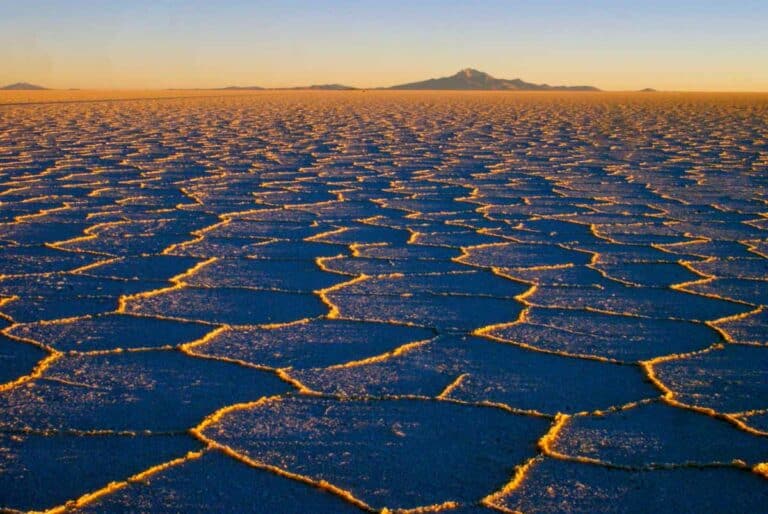
The Best Bolivia Salt Flats Tours: 15 Adventures in Uyuni & Altiplano
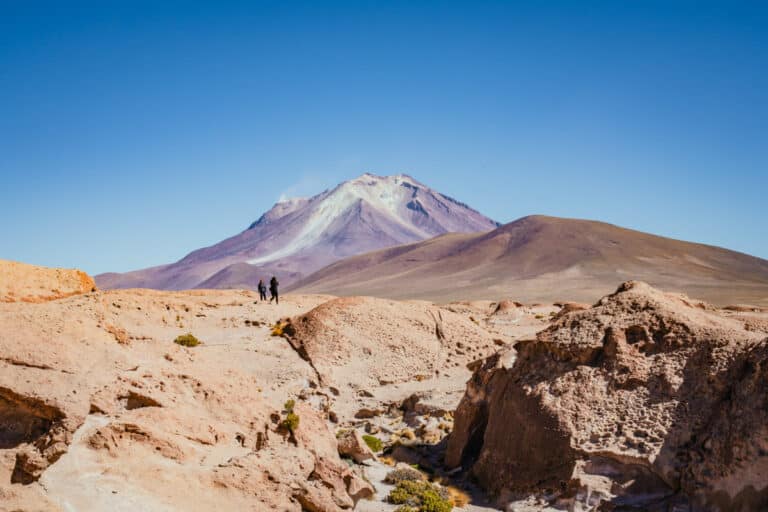
10 Days in Bolivia: The Perfect Bolivia Itinerary
Leave a reply cancel reply.
Your email address will not be published. Required fields are marked *

Follow me on Instagram for travel inspiration, tips, and guides.
Uyuni Salt Flats Tour In Bolivia – A Complete Guide
A Uyuni Salt Flats Tour is a must-do on everyone’s Bolivia itinerary!
Uyuni Salt Flats (also known as Salar de Uyuni) is the world’s largest salt flat, stretching for more than 11,000km². It truly is one of the most remarkable vistas on planet earth!
I spent one full day exploring the incredible Bolivia Salt Flats and have put together this detailed guide with everything you need to know about the Uyuni Salt Flats Tour including where to book and what to expect.
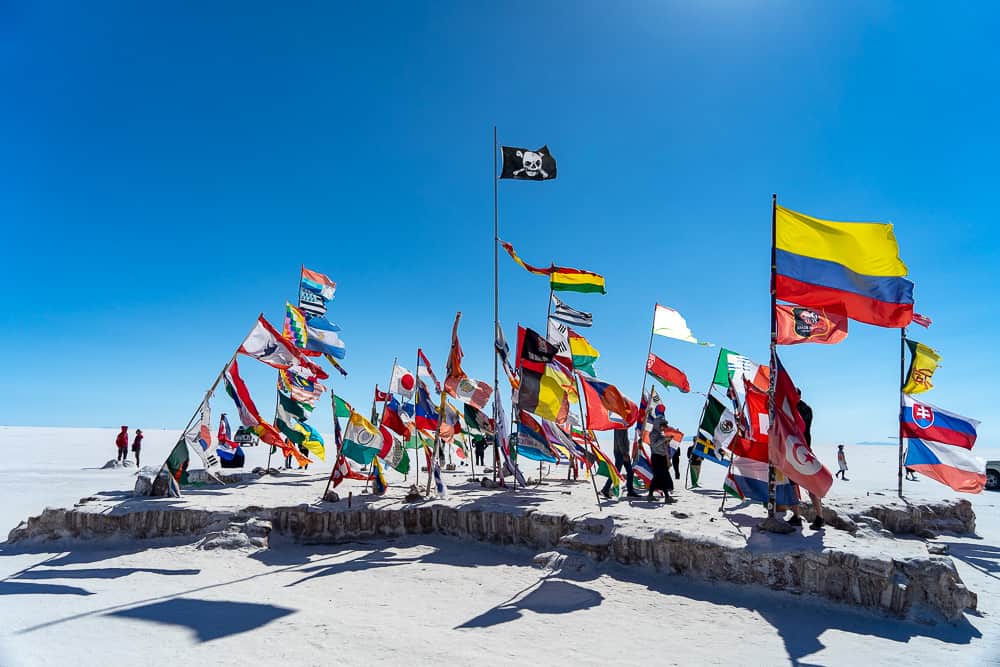
Table of Contents
WHERE IS SALAR DE UYUNI?
The Uyuni Salt Flats are so massive that it actually crosses the borders of three countries in South America – Bolivia, Chile, and Argentina.
Click here to see the location on Google maps.
Most Salar de Uyuni tours operate out of Uyuni in Bolivia, a small dusty town approximately 540kms south of La Paz.
HOW TO GET TO SALAR DE UYUNI
There are two options to consider when looking at how to get to Salar de Uyuni and they are by bus or plane.
Bus from La Paz to Uyuni:
The cheapest and most common way of reaching Uyuni is by taking an overnight bus from La Paz to Uyuni and the journey takes around 8 hours.
You can book your bus ticket online in advance for just $30 USD and the bus leaves from Terminal De Buses Lapaz.
You can then travel back from Uyuni to La Paz by bus after the one-day Salt Flats Tour.
La Paz to Uyuni flights:
A faster and more convenient way of reaching Salar de Uyuni is by taking a 50-minute flight from La Paz to Joya Andina Airport in Uyuni.
La Paz to Uyuni flights operates on a daily basis.
The BEST Backpack For Backpacking!
Less is more with the Atmos AG 50L , the newest arrival in the Osprey backpacking range!
From weekend explorations to month-long expeditions, this EPIC backpack is up to the task and will stand the test of time.
WHERE TO BOOK A UYUNI SALT FLATS TOUR?
There are dozens of tour operators and offices located in both Uyuni and La Paz to book a Uyuni Tour, but in my experience, it can be overwhelming trying to decide which operator to book a tour through without being ripped off.
Alternatively, you can book your tour online in advance to avoid the hassle of having to organize a trip once you have arrived.
I recommend finding a tour that best suits you on the Get Your Guide website . They have thousands of travel deals worldwide that are affordable and reliable!
Click Here to search for all Salar Uyuni Tours and book online ahead of time.
Have you got travel insurance for your trip?!
We all know accidents can happen and having Heymondo Insurance will save you thousands of dollars if something goes wrong.
Heymondo offers low-cost Travel Insurance to keep you covered on all your adventures.
WHAT TO EXPECT ON THE TOUR
A one-day Uyuni Salt Flat Tour not only includes a 4×4 trip out onto the world’s largest salt flat but also a visit to the Uyuni Train Cemetery, lunch at a local restaurant, salt museum and village markets, Hotel de Sal (the world’s first salt hotel), giant cacti at Incahuasi island and an unforgettable sunset at the largest mirror in the world!
The tour begins at 10 am and finishes after sunset at around 6 pm.
Book Now → Uyuni Salt Flats Tour
Best time to visit bolivia salt flats.
The best time to visit Bolivia Salt Flats, funnily enough, is in the rainy season which is December to April in order to witness the reflective mirror effect on the salt flats.
During the dry season, from May to November, temperatures are much cooler and the ground hardens.
The peak season is typically from June to August and prices are known to rise during this time.
SALAR DE UYUNI FACTS
Before visiting, here are some Salar de Uyuni facts you may find interesting:
- Uyuni altitude is 3,700m above sea level
- The salt flats measure 11,000km² making it the world’s largest salt flat
- 11 billion tonnes of salt are believed to be within Salar de Uyuni
- NASA uses Uyuni Salt Flats to figure out the positioning of its satellites
- Formed by prehistoric lakes that evaporated long ago
- Pink flamingos have been spotted at Uyuni
WHERE TO STAY IN LA PAZ
La Paz has hundreds of accommodation options to choose from, so I have narrowed it down to a few of my favorite places to stay in La Paz to fit the needs of budget backpackers and luxury travelers.
See the list of accommodations below that I personally recommend:
Luxury: Ritz Apart Hotel
Ritz Apart Hotel, a modern 5-star hotel centrally located in La Paz, provides air-conditioned rooms with flat-screen TVs and private bathrooms, a fitness center, hot tub, sauna, in-house restaurant, room service, and free WiFi.
Perfect for travelers with a larger budget.
Mid Range: Selina La Paz
Selina La Paz is a 3-star property that is perfect for families, couples, and solo travelers!
Great location in La Paz offering double, triple, and dormitory rooms at an affordable price. Selina also features a billiards table, an in-house restaurant, and a bar for all guests.
Budget: The Rooftop Bolivia
The Rooftop Bolivia is rated one of the best accommodations in La Paz for budget travelers.
Featuring a bar, shared lounge, city views, restaurant, shared kitchen, free wifi, and a nightclub!
The Rooftop has dorms and private rooms available and breakfast is included.
For all other La Paz accommodations, Search on Booking.com
What to pack for bolivia.
When visiting Bolivia, here is a list of items I highly recommend bringing with you;
Must-Have Travel Essentials
Hidden money wallet.
Keep your cash and other valuables safe with this anti-theft hidden money wallet!
Reusable Water Bottle
The GRAYL GeoPress is the best reusable bottle that allows you to purify water from anywhere!
Travel Backpack
The Nomatic Travel Backpack has 20+ innovative features, perfect for everyday use!
Quick-Dry Travel Towel
The most compact, lightweight, and quick-dry towel for traveling!
Portable PowerBank
Keep your phone, laptop, and accessories charged while you’re on the go with the Anker PowerBank!
MORE CENTRAL & SOUTH AMERICA TRAVEL GUIDES
- Mexico: 4 Week Mexico Itinerary
- Cuba: 10 Day Cuba Itinerary
- Peru: Backpacking Peru – 3 Week Itinerary
- Bolivia: Things To Do In Bolivia
- Brazil: 2 Day Rio De Janeiro Itinerary
- Argentina: Things To Do In Argentina
- Chile: Things To Do In Chile
FINAL THOUGHTS – SALAR DE UYUNI TOUR
If you have any questions about Salar de Uyuni, please leave me a comment below this post and I will get back to you as soon as I can.
For a quicker response, be sure to join Jonny Melon’s Travel Tribe on Facebook and post your questions or recommendations to our awesome community.
TRAVEL RESOURCES FOR YOUR NEXT TRIP
Whether you’re a seasoned traveler or it’s your first trip overseas, here are some useful travel resources to help you kick-start your next adventure!
Search and book accommodation worldwide.
Compare and book cheap flights to anywhere.
Find tickets, tours, and experiences around the world.
Book buses, trains, and transfers online in advance.
Search all rental cars in your next destination.
Need travel insurance for your next trip?
THANKS FOR READING
Hey friend, thanks for reading this guide!
Please know this post may contain affiliate links. When making a purchase through one of my links, I earn a small kickback at no extra cost to you and it’s a big help to keep the site up and running. Rest assured, I only promote products and services that I personally use and recommend.
Click here to find out how you can support the site organically .
Many thanks!
PIN IT FOR LATER
4 thoughts on “Uyuni Salt Flats Tour In Bolivia – A Complete Guide”
Hey Jonny, Thank you for the insightful blog.
I am not sure if they are still running the 50-minute flight from La Paz to Joya Andina Airport in Uyuni or if they still operate on a daily basis as I am unable to find any direct flight from La Paz airport to Uyuni. I understand you took the overnight bus but do you know by any chance the name of the airline that goes directly there and how to find it online?
Hey Ali, unfortunately I am not sure about this flight, perhaps since the pandemic things may have changed. I hope you can find your way and have a safe trip!
Hey Jonny, We are planning our South America trip for next year. A question about using the overnight bus to and from La Paz to Uyuni Salt Flats with the 1 day tour like you did. Did you travel with only a day pack? And if so where did you leave your main bag? Or did you travel with your main bag as well and then what did you do with it during the tour? Many thanks Natalie x
Hi Natalie, great question, I traveled with just an overnight bag and left my main luggage in storage at my hotel in La Paz, they had no issues holding it for me so this is something that I’m sure you could do also! Have a great trip!
Leave a comment Cancel reply
Notify me of follow-up comments via e-mail.
Work with us
Support the site
Plan Your Trip
Travel guides
Destinations
Hotel guides
Find best tours
Travel Gear
Travel resources
How to start a blog
Photography guides
Follow On Socials
© 2024 Jonny Melon Adventure Travel Blog. All rights reserved.
Privacy Policy | Terms | Sitemap

Salar de Uyuni: The Ultimate Guide to Bolivia’s Majestic Salt Flats
Nestled high in the Bolivian Andes, Salar de Uyuni stands as a testament to nature’s awe-inspiring wonders. Spanning over 10,000 square kilometers, it’s the world’s largest salt flat, appearing as a vast white expanse that stretches to the horizon and merges with the sky.
Often referred to as the ‘world’s largest mirror’ (during the rainy season), this surreal landscape becomes a shimmering reflective surface during the rainy season, creating a dream-like setting that captivates travelers from across the globe.
But Salar de Uyuni is not just a visual marvel; it’s a destination imbued with history, geology, and cultural significance, making it a must-visit on any Bolivian itinerary.
Salar de Uyuni – A Trip Away From Earth
The Uyuni Salt Flats is the kind of place that makes your jaw drop when you see it and leaves you awe-stricken for the rest of your life. When I am asked to name a place that really, really struck me, the Uyuni Salt Flats (and the landscapes of the Eduardo Avaroa Reserve further south) immediately come to my mind.
It seems that it’s not just me. I remember meeting during my travels three couples who were on a round-the-world trip. These guys had seen the world. I met each of these couples on different occasions, and of course, they had never met each other. I asked them that same question – can you name one place in this world that really, really struck you: all of them promptly answered with a big smile, Salar de Uyuni. Coincidence?
This place has won the heart of every traveler who walked on it. How could it be otherwise? The truth is, we would not be too surprised to find this kind of landscape on some other planet, but on Earth? The Bolivian Salt Flats have the power to wake up the explorer inside every traveler.
And I know what I’m talking about. In fact, I have visited the Uyuni Salt Flats twice, during the same trip! I first took a classic group tour just like everybody else, to later realize that I hadn’t had enough of it, and went back on the Salar on a private tour. Yep, I can be that obsessive sometimes.

GPS (Isla Incahuasi): 20°14’35.30″S, 67°37’31.48″W
How to go: Group tour or Private tour from Uyuni or Tupiza
Price: 700-750 Bolivianos ($100-110) for a 3-day group tour with Spanish-speaking driver + 30 BOB ($5) entrance to Isla Incahuasi + 150 BOB ($25) entrance for the Eduardo Avaroa Reserve
Duration of the tours: Can be full day, 3 days (most popular) or more.
When to go: Possible all year long. December to March for the mirror effect.
Good to know: ATMs in Uyuni are not always reliable, better have some cash with you.
Where is Salar de Uyuni Located?
Salar de Uyuni, often referred to as the world’s largest salt flat, is situated in the southwestern region of Bolivia, nestled high in the Andes at an elevation of approximately 3,656 meters (or around 11,995 feet) above sea level. Specifically, it can be found within the Daniel Campos Province in the Potosí Department.
This vast expanse stretches over 10,582 square kilometers (or about 4,086 square miles), making it not only the world’s largest salt flat but also one of the most unique natural landscapes on Earth.
Its location, high in the Andean plateau, or Altiplano, contributes to its unique climate and geological formations. The town of Uyuni serves as the primary gateway to the salt flats and is the starting point for most tours and expeditions into this otherworldly landscape. Uyuni is accessible via bus, train, or plane from major Bolivian cities like La Paz and Sucre.

How Was Salar de Uyuni Formed?
The tale of Salar de Uyuni’s formation is as mesmerizing as the destination itself. Millions of years ago, this region was submerged under a vast prehistoric lake named Lake Minchin. As time went on, the lake transformed into two other significant bodies of water: Lake Tauca and Lake Ballivián.
However, due to climatic changes over millennia, these lakes eventually dried up about 15,000 years ago, leaving behind two primary modern lakes – Poopó and Uru Uru – and two major salt flats, with Salar de Uyuni being the most expansive of them.
The salt crust, which is several meters thick in some areas, overlays a reserve of brine that is exceptionally rich in lithium. In fact, it is estimated that Salar de Uyuni contains about 70% of the world’s known lithium reserves, a critical element used in electronic batteries.
The Legend of The Uyuni Salt Flats
Beyond its geological and economic significance, Salar de Uyuni has been an essential part of local indigenous lore. Legends speak of mountains – Tunupa, Kusku, and Kusina – once being giants who walked the Earth. As the tale goes, Tunupa’s tears and breast milk, after being separated from her child, are said to have created the salt flats.
Today, while visitors marvel at its vast beauty, the salt flat continues to be a source of livelihood for many locals who harvest salt and extract minerals from this unique terrain.

8 Surprising Facts About The Uyuni Salt Flats
- It is the largest salt flat in the world . 10,582 square kilometers (4,086 sq mi) of pure white salt. That means that it is very roughly 100 km (62 mi) from east to west, and also 100 km from north to south. It is so big that sometimes, the remote mountains seem to float over the horizon, like a mirage.
- It lies at 3660 m (12,000 ft) of altitude . The Uyuni Salt Flats are part of a large region called the Altiplano, shared between Peru and Bolivia . The Altiplano is the second-highest plateau in the world after the one in Tibet, and it also includes Lake Titicaca.
- The Salar de Uyuni was formed by the disappearance of an immense lake called Lago Minchin , about 15,000 years ago. The remains of this lake that exist today are the Uyuni and Coipasa salt flats, and the Poopo and Uru-Uru lakes.
- It has islands . An amazing feature of the Uyuni salt flats is its “islands” showing coral and algae fossils dating back from the ancient lake. One of these islands, the 24-hectare Isla Incahuasi (“House of the Inca”), has been developed for tourism, with the construction of a hiking trail and a restaurant to welcome tourists. The Salar’s biggest “island” is Isla del Pescado (Fish Island), 22 km (14 mi) away from Isla Incahuasi.
- The islands are covered with giant cacti. The most iconic plants of the region, these cacti are particularly concentrated on Incahuasi Island and Isla del Pescado. Some of them are believed to be over a thousand years old. Do you realize how unique, bizarre, and incredible this place is? “Islands” made of fossil coral formations, covered with giant cacti, in the middle of an immense crust of salt!

- It is covered with mysterious hexagonal shapes. These amazing shapes have been a mystery for quite some time, but it is now thought to be the result of a convection phenomenon below the salt flat’s surface. Below the surface, there is an accumulation of rainwater. The action of the sun causes the evaporation of this water. During its migration toward the surface, the water is accumulating more and more salt. Because its salt concentration increased, this water became heavier, which leads it to sink back down. During this process, some of the water evaporates, revealing the shape of the convection cells: the hexagons. The salt crystallizes as the water evaporates, forming the ridges of the hexagons.
- A world of salt… and lithium. It is estimated that the Salar de Uyuni contains about 10 billion tons of salt, and in some areas its thickness can reach 10 metres (33 ft). The locals of the Colchani village harvest around 25,000 tons of salt a year. Uyuni is also a gigantic reservoir of lithium, an estimated 15% of the world’s reserves. It is now extracted as well, from a site in the south of the Salar.
- The Salar de Uyuni is useful for calibrating satellites. Scientists consider the Bolivian salt flat to be one of the best places on Earth to calibrate satellite altimeters (used to measure land elevation) because the skies are often clear, and unlike the ocean, it has no waves.

When to Visit Salar de Uyuni
Salar de Uyuni offers distinct experiences depending on when you choose to visit. The vast salt flat undergoes remarkable transformations with the seasons, making each visit unique.
Wet Season (December to April)
Unique Experiences : The rainy season transforms the salt flats into a vast mirror, reflecting the sky so perfectly that the horizon seems to disappear. This ethereal landscape provides an unparalleled opportunity for breathtaking photographs, where the sky and ground merge seamlessly.
Pros : The reflective properties of the wet salt flats are a photographer’s dream. The landscape is serene, and the atmosphere is surreal, especially during sunrise and sunset.
Cons : Some parts of the salt flats can be inaccessible due to excessive water, especially after heavy rains. Additionally, the chances of rain and cloud cover can sometimes obscure views of the sky and surrounding landscapes.
Dry Season (May to November)
Unique Experiences : The salt crystallizes and forms hexagonal patterns on the ground, creating a mosaic-like texture. It’s the best time to explore the entire expanse, including isolated spots and islands like Incahuasi.
Pros : Better accessibility across the salt flats, clearer skies, and cooler temperatures. The crystallized salt patterns offer unique photographic opportunities.
Cons : The absence of the reflective mirror effect. The landscape, while still stunning, is more consistent and doesn’t offer the dramatic visual contrasts of the wet season.

How to Get There
Getting to the gateway of Salar de Uyuni, the town of Uyuni, is relatively straightforward, and there are various means of transport available based on your preferences and budget.
Uyuni has an airport, Joya Andina Airport, which connects it with Bolivia’s major cities. Airlines like Boliviana de Aviación (BoA) and Amaszonas operate regular flights from La Paz, Bolivia’s administrative capital, to Uyuni.
The flight is short, roughly an hour, and offers aerial glimpses of the salt flats. Prices can of course vary but are generally between $60 and $200.
For budget travelers, several bus companies operate overnight routes from La Paz to Uyuni. The journey takes about 10 to 12 hours. While buses are cost-effective, be prepared for a bumpy ride on rough roads. It’s advisable to opt for semi-cama or cama services for more comfort.
- From La Paz: Night buses leave La Paz at around 8:30 or 9 pm, and arrive in Uyuni 9 hours later, at 5.30 or 6 am. The price is roughly between $15 and $25.
- From Cochabamba: There is a direct night bus leaving at 6 pm and arriving at 6 am. Other options all have a connection in Oruro. Price $10-$15.
- From Sucre: There are some direct buses as well as options with a connection in Potosi. The ride lasts about 8 hours and costs around $10-$15.
You can easily find and book buses from the TicketsBolivia website.
Want to read a crazy story? You can read about my arrival in Uyuni in the middle of the night when I was saved by a drunk guy.
Another scenic option is the train. Trains operated by Empresa Ferroviaria Andina run between Oruro and Uyuni. International travelers can first take a bus or train from La Paz to Oruro and then board the train to Uyuni. The train journey offers picturesque views of the Bolivian highlands and is more comfortable than the bus.
Tips for Travelers
- It’s a good idea to book your transport in advance, especially during peak tourist seasons.
- If flying, be sure to account for potential altitude sickness, as Uyuni is over 3,600 meters above sea level.
- For those taking ground transport, pack snacks and water, as the journey can be long, and services en route might be limited.

Tours and Exploration
Salar de Uyuni is a destination that invites exploration, and there are numerous ways to experience its vast beauty, from guided tours to private expeditions. Here’s a breakdown of the options available:
Types of Tours Available
The classic way of visiting the Uyuni Salt Flats is to sign up for a group tour, usually done with a 4WD Jeep.
Day Tours : The first option is a day tour from Uyuni, which will take you to a famous train cemetery, before going on the Salar and exploring its main attractions, such as the village of Colchani, the Salt Hotel, and of course the Incahuasi Island and its giant cacti. Some tours let you watch the sunset from the salt flat, before taking you back to Uyuni.
Multiday Tours : A popular option is to go for a 3-day tour combining the Salar de Uyuni and the mind-blowing Eduardo Avaroa National Reserve , in the Sur Lípez Province. I took such a tour when I saw Uyuni for the first time. But I can already tell you it was one of the most breathtaking regions I have ever seen in my entire life.
The 3-day tour takes you to the Uyuni Salt Flats of course, then heads south, crossing smaller salt flats, and passing by stunning colorful lagoons. There are the famous pink waters of the Laguna Colorada, but also a whole series of smaller lakes inhabited by flamingo colonies, high-altitude deserts, and geysers, all the way to the Laguna Verde, at the foot of the majestic Licancabur Volcano.
The price for such a 3-day tour is usually around $100-$115 in a local agency with a Spanish-speaking driver. But if you want an English-speaking driver, the price can easily go over $200.

Sunrise/Sunset Experiences : There’s nothing quite like watching the sun rise or set over the vast expanse of Salar de Uyuni. Many tours are timed to capture these mesmerizing moments.
Consider group size when choosing a tour. Smaller groups offer a more personalized experience. Ensure that the company respects local and environmental guidelines.
An alternative is to visit it from Tupiza , some 200 km (125 mi) south-east of Uyuni. Visiting it from Tupiza can make sense if you are arriving from Argentina via the border town of Villazon. Often, you will be offered the same 3-day tours, with a reverse itinerary, ending with the Salar de Uyuni. Thus, these tours can start in Tupiza and end in Uyuni.
If you are in Chile, you can also find tours from San Pedro de Atacama , going over the Eduardo Avaroa National Reserve and the Salar de Uyuni with a similar itinerary.
Private Car and Driver Option
For those seeking a bespoke experience, hiring a private car and driver can be the perfect choice. This allows for a flexible itinerary and access to lesser-visited spots.
I personally took this route during my second visit. It provided the freedom to explore hidden corners of the Salar, away from the usual tourist trails. This can be especially rewarding during sunrise or sunset, when you can find a quiet spot all to yourself.
What I did: In Tupiza, I got to know a local travel agent, and I went with him on a private 4-wheel drive tour on the Salar. It cost me $300 for 3 days. Alone in the Salar, where tourists usually don’t go, stopping wherever and whenever I want.
That’s how I got to hike on Isla del Pescado (Fish Island) and sleep in a salt hotel at the foot of Tunupa Volcano that I partially climbed the next day. When I go back to Bolivia someday, I will definitely do it again. I talk about this in greater detail further down this article.
Whether you are in Uyuni, Tupiza, or even San Pedro de Atacama in Chile, you can talk to a few travel agencies and they will most probably be able to offer you a private tour. Just talk to a few and compare prices.

Things to Do and Experience at Salar de Uyuni
Salar de Uyuni is replete with otherworldly sights and experiences. Whether you’re there for the landscapes, photography, or the sheer novelty of being in such a place, there’s something for everyone.
Mirror Effect During the Wet Season
Details: From December to April, the rainy season transforms the salt flats into an enormous natural mirror. Even a shallow layer of water reflects the sky perfectly, creating a dreamlike horizon.
Photography Tips: This optical wonder allows for stunning photography. Capturing sunrise or sunset during this time can result in awe-inspiring imagery where the horizon seems endless.
Experience: Walking on the flats during this time can feel like walking in the sky, a surreal experience that many describe as feeling like being on another planet.
Precautions: While the visuals are mesmerizing, travelers are advised to be cautious. Wet salt can be slippery, so ensure you’re wearing appropriate footwear. Make sure you are protected from the corrosion of the salt.
Perspective Photography Opportunities
Details: The vast and uniform backdrop of the Salar makes it an excellent canvas for playing with visual perspectives in photographs, where objects in the foreground seem disproportionately large compared to those in the background.
Props and Ideas: From creating scenes where it looks like you’re holding or kicking the sun, to using everyday items for exaggerated size comparisons, the possibilities are limitless. Some travelers bring small toys or props to make the photos more playful and memorable.
Tips: Ensure you have a camera with an adjustable lens or a smartphone with a wide-angle setting. Remember, the shadow can play a pivotal role in these shots, so mind the sun’s position. The best shots often require a low camera angle, so be prepared to get down on the ground!
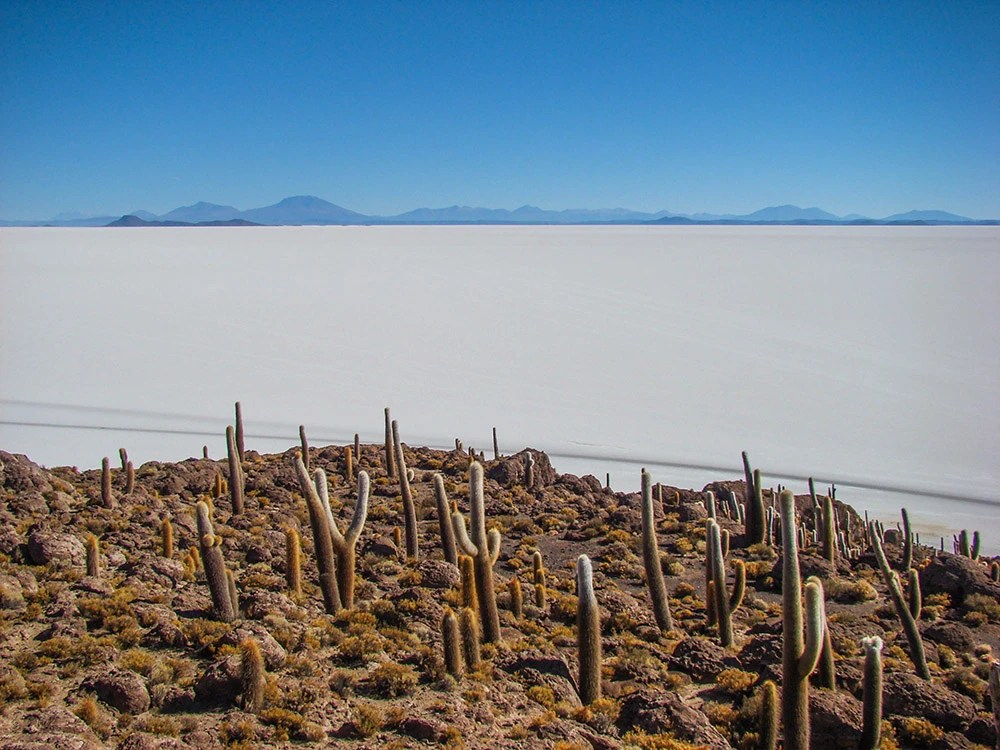
Incahuasi Island Visit
Details: Also known as the “Island of the Cactus,” Incahuasi Island is an ancient coral reef transformed into a hill, surrounded by a sea of salt. Rising from the salt flats, Incahuasi Island is a bizarre sight, dotted with giant cacti and offering panoramic views of the Salar. It’s a must-visit, both for the landscape and the unique ecosystem.
Flora and Fauna: This island is home to some of the world’s largest cacti, with some estimates suggesting they’re over 1,000 years old! Along with the cacti, you might also encounter native species like the viscacha (a type of rabbit-like rodent).
Viewpoint: There is a trail you can follow to explore a part of the island and its cacti. The hike to the island’s top is worth the effort as it provides panoramic vistas of the salt desert, especially enchanting during sunrise or sunset.
Entrance Fees: Note that there is usually a small fee to enter the island, which contributes to its maintenance.
Another Idea: If you are visiting Salar de Uyuni with a private driver and/or you happen to have some time to kill at Isla Incahuasi, I recommend going for a little hike all around the island. It takes around one hour, and you will have the immensity of the Salar all to yourself.

Venturing to Isla del Pescado
Details: Less frequented and less commercial than Incahuasi, Isla del Pescado offers similar breathtaking views but without the crowds. This island offers serene beauty and a sense of solitude, making it an ideal spot for those seeking tranquility.
Unique Landscape: Its distinctive fish-like shape can be appreciated when viewed from a distance or from an elevated position, which has earned it its name (‘Fish Island’ in Spanish).
Flora: Like Incahuasi, this island is populated with tall cacti and features unique rock formations, offering a mix of desert and oasis-like views.
Tips: Since it’s not on every tour itinerary, express your interest to your tour operator in advance or, as you’ve previously mentioned, hire a private driver to reach this hidden gem. That’s what I did, and it was amazing to scramble up the hill to the top of this pristine, wild island. Just be careful with the thorny bushes!
VIRTUAL TOUR – Salar de Uyuni
Hike on and around the famous Incahuasi Island, and discover the off-the-beaten-path Fish Island (3 panoramas).
The virtual tour opens in a lightbox. Use your mouse to move around the 360° panoramas.
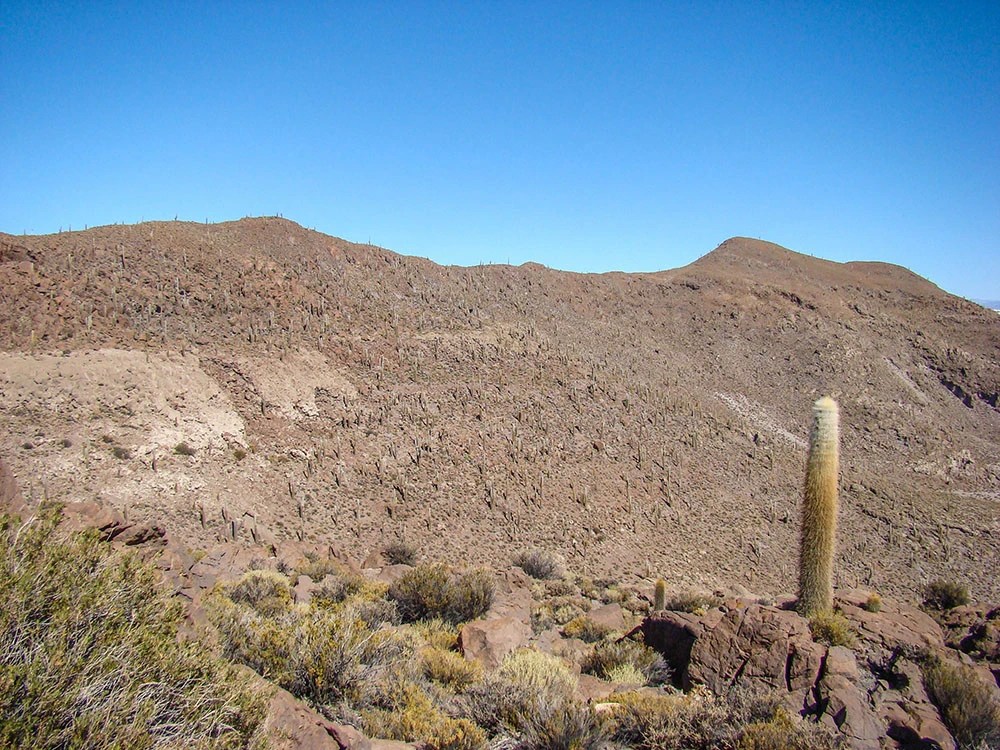
Visit the Palacio de Sal and the Flag Plaza
Details: The Palacio de Sal is the world’s first salt hotel, boasting walls, floors, ceilings, and even furniture made entirely from salt blocks harvested from Salar de Uyuni. It’s an architectural marvel and offers a unique accommodation experience, immersing visitors in the essence of the salt flats, and you can even check out salt sculptures.
Iconic Flag Plaza: Adjacent to the Salt Hotel is a spot where travelers from around the globe have planted their national flags, resulting in a colorful and vibrant display of international unity. It’s a testament to the universal appeal of the Salar de Uyuni and the shared journey of discovery.
Photography: The combination of the stark white salt hotel, the multi-colored flag plaza, and the vast salt flats horizon make for an excellent photography setting, capturing the essence of this unique travel destination.
Watch the Flamingos
Details: The salt flats near Coqueza are renowned for attracting several species of flamingos , including the Andean, James’s, and Chilean flamingos. These elegant birds flock to the region’s shallow waters, which are abundant in the microorganisms they feed on.
Best Viewing Spots: Apart from Coqueza and the Salar, lagoons such as Laguna Colorada and Laguna Hedionda (in the Eduardo Avaroa Reserve) are excellent habitats for these birds. The contrasting colors of these lagoons against the bright plumage of the flamingos make for spectacular photography.
Behavioral Observations: The flamingos’ unique feeding behavior, where they stir up the mud with their feet and filter-feed, can be observed here. Their graceful courtship dances during the mating season are also a highlight.
Tips: If bird-watching is a priority, consider hiring a local guide who knows the best spots and times to view these magnificent creatures. Also, visiting during the migratory season, from November to March, increases the chances of spotting large flocks.
Also read: Our Guide to Observing the Flamingos of Bolivia’s Salt Flats and Lagoons

Night Photography
Details: Salar de Uyuni, being far from major city lights, boasts incredibly clear skies. This, combined with the vast unobstructed horizon of the salt flats and the graphic shapes of the cacti, creates an unparalleled opportunity for astrophotography.
Milky Way Magic: The dense star clouds of the Milky Way, stretching across the sky, provide a stunning subject. With the salt flats beneath, photographers can play with reflections, creating mesmerizing compositions.
Meteor Showers and Celestial Events: Throughout the year, there are numerous meteor showers and other celestial events. Planning a visit around such occurrences can result in once-in-a-lifetime shots.
Tips: For optimal results, use a wide-angle lens with a large aperture (e.g., f/2.8 or wider) and a sturdy tripod. It’s essential to have a camera that performs well in low-light conditions. Shooting in RAW format allows for more flexibility during post-processing. Finally, familiarize yourself with the lunar calendar; a new moon phase ensures the darkest skies.

Wildlife of Salar de Uyuni
The salt flats might initially seem like an inhospitable environment, but a closer look reveals a surprising variety of life adapted to this unique ecosystem.
- James’s Flamingos: One of the rarer species of flamingos, these elegant birds can often be seen in the shallow waters of the Salar, especially during their breeding season.
- Vicuñas: These wild relatives of llamas and alpacas are known for their fine wool. They roam the areas surrounding the salt flats, grazing on the sparse vegetation.
- Andean fox: Also known as the culpeo, this fox can sometimes be spotted around the periphery of the salt flats, especially during the cooler parts of the day.
- Vizcachas: These rabbit-like rodents, belonging to the chinchilla family, are native to the Andes and can be seen around rocky outcrops near the salt flats.
Also read: 12 Incredible Wild Animals in Bolivia

- Giant Cacti: These cacti ( Echinopsis atacamensis subsp. pasacana ), native to Bolivia and Argentina, can grow up to 10-12 m / 32-39 ft tall. They bear rose-white flowers in spring and summer, and the fruits are edible. The pasacana subspecies is distinguished from the Chilean subspecies ( E. atacamensis subsp. atacamensis ) by the fact that is it usually branched. The Chilean subspecies is often unbranched and grows less tall. They are very slow-growing, only 1 cm / 0.4 inch per year on average.
- Quinoa: Not just a trendy health food, quinoa plants grow in the higher altitudes around Salar de Uyuni. The region is known for its many colored varieties of this crop.
- Llareta: These are dense, moss-like plants found in the high-altitude regions of the Andes. They grow extremely slowly and can be several thousands of years old. Their compact shape helps conserve moisture.
Salar de Uyuni Overnight Private Tour: Itinerary Suggestion
Here I will briefly describe what I have done for my own private tour to the Uyuni Salt Flats so you can gain some insight and ideas if you wish to do the same.
Day 1 – Uyuni Salt Flats: Uyuni → Colchani → Incahuasi Island → Fish Island → Coqueza
You will leave from the town of Uyuni and head to the salt flats. You can stop at the same places where tour groups go, but since you have your own driver, you can take the time to see these places more in-depth. For example, in Colchani, I could wander in the area where the locals harvest the salt.

Then, go to the Incahuasi Island. It is the most touristy spot on the Salar, but unmissable. You can follow the tourist trail that ventures inside the cactus forest to get a good idea of what the place looks like and amazing panoramic views of the salt flats;
While I was there, I decided to hike all around the island, it took me an hour. And for the first time, I was all alone in the immensity of the Salar de Uyuni, an amazing feeling! I would definitely recommend anyone to do the same!

After that, you can start going off the beaten track. My driver took me to the Isla del Pescado (the Fish Island), the largest island on the salt flat. This time, there was no hiking trail, no restaurant, and no one. Pure wilderness. I hiked up the island among thorny shrubs and another cactus forest to a high point, from where I could enjoy a fabulous panorama of the Salar and the nearby Tunupa Volcano.
It is at the foot of this volcano, in the village of Coqueza, that I spent the night, in a hotel built with bricks of salt. On the way, we stopped by other smaller “islands”. From Coqueza, a flock of flamingos was nearby as the sun was setting on the salt flats, a beautiful birdwatching and photography moment.

Day 2 – Coqueza & Tunupa Volcano → Crossing the Salar → Uyuni
On the morning of this second day, my driver and I climbed the slopes of the Tunupa Volcano stopping just before its colorful crater. After that, the climb becomes more technical and required gear that we didn’t have. But it doesn’t matter, the goal was to appreciate the sheer size of the Salar de Uyuni, from this high point. I could see all the islands I had visited, including the small Incahuasi Island, far away in the distance.

The way back to Uyuni was pretty cool as well, I asked my driver to stop when we were near the center of the salt flats, to experience its immensity. Your world is just divided into 2 parts. 360 degrees of pure white salt in the bottom half, and pure blue sky in the top half.
My driver left me in Uyuni to continue my journey in Bolivia. After having experienced this, I really wish to go back to Bolivia and do a much longer private tour around the salt flats and the Altiplano. The cost is not the same of course, but the feeling of exclusivity is priceless.

Practical Tips for Travelers
A trip to Salar de Uyuni is a journey like no other. To ensure you make the most of your visit, and to keep inconveniences to a minimum, here are some practical tips:
Altitude Acclimatization : Uyuni is located at an elevation of around 3,650 meters (almost 12,000 feet). Some travelers might experience altitude sickness. I recommend spending a day or two in a city like La Paz or Potosí before heading to the salt flats, to acclimatize. Drinking lots of water, avoiding alcohol, and consuming coca tea can also help alleviate symptoms.
Sun Protection : Given the vast, reflective nature of the salt flats, sun protection is essential. High SPF sunscreen, sunglasses with UV protection, and a wide-brimmed hat are must-haves.
Stay Hydrated : The arid climate can be dehydrating. Always carry a refillable water bottle, and drink frequently.
Footwear : Opt for comfortable, closed shoes. If visiting during the wet season, waterproof boots can be beneficial due to the water on the salt flats.
Cash and Supplies : Uyuni is a small town, and while it has basic amenities, it’s best to withdraw cash in a larger city beforehand. Additionally, stock up on any special supplies or snacks, as variety can be limited.

Where to Stay & Eat
Uyuni offers a range of accommodations, catering to various budgets and preferences.
Salt Hotels : Unique to this region are hotels made entirely of salt blocks. These provide a unique lodging experience, combining rustic charm with modern comforts. Some popular options include Palacio de Sal and Hotel de Sal Luna Salada.
Traditional Accommodations : Apart from salt hotels, there are several other lodgings available, from budget hostels to more upscale options. Hotel Jardines de Uyuni, for instance, offers comfortable rooms and a pleasant garden setting.
Eateries : Uyuni’s culinary scene, while not extensive, offers some delightful spots to savor local and international dishes. Places like Minuteman Revolutionary Pizza serve up hearty meals, perfect after a day of exploring.
For local flavors, the town’s central market is a hub of activity, with vendors serving Bolivian staples like salteñas (savory pastries) and llajwa (a spicy tomato salsa).
Whether you’re dining in a restaurant or enjoying street food, always remember to drink bottled water and ensure that any fruits or vegetables are properly washed or cooked.

Photographic Wonders and Tips
The vast expanse of Salar de Uyuni is a canvas for photographers, offering unparalleled opportunities to capture the beauty of nature and play with perspectives. Here are some phenomena and tips to make the most of your photo sessions:
- Mirror Effect : The wet season transforms the salt flats into the world’s largest mirror. Capture stunning reflections of the sky, especially during sunrise and sunset. A polarizing filter can help manage reflections and enhance colors.
- Perspective Shots : The uniformity of the landscape allows for creative forced perspective photos. Bring props or toys, and experiment with positioning to create fun, illusionary shots.
- Night Photography : With minimal light pollution, the salt flats are an astronomer’s dream. Capture the Milky Way, star trails, or even meteor showers. Use a tripod and a wide-angle lens with a wide aperture for best results.
- Landmarks : While the endless horizon is captivating, don’t miss out on photographing landmarks like the Dakar Rally monument, the Playa Blanca salt hotel, and the flags representing various nations near the entrance of the salt flats.
- Battery Backup : Cold conditions can drain batteries quickly. Bring extra batteries and keep them warm.
- Lens Protection : Salt can be corrosive. Ensure you have lens protection and clean your equipment after the visit.
- Golden Hours : As with most outdoor photography, early mornings and late afternoons offer the best light.

What To Pack For The Uyuni Salt Flats
Packing Checklist for Salar de Uyuni
Preparing for the salt flats requires a mix of essentials to deal with the unique climate and terrain. Here’s a suggested packing list:
- Layered Clothing : Temperatures can vary dramatically. Pack light layers for daytime and warm, insulated clothing for the chilly nights.
- Waterproof Boots : Especially if visiting during the wet season.
- Warm Hat and Gloves : Essential for nighttime and early morning excursions.
- Sunglasses and Sunblock : The reflective nature of the flats intensifies sunlight.
- Reusable Water Bottle : Stay hydrated in the dry climate.
- Camera Gear : Extra batteries, lens protection, tripod for night shots.
- Sleeping Bags: If you don’t trust the hygiene of blankets and sleeping bags provided by travel agencies and hotels, you can bring your own sleeping bag. (But I didn’t and it was fine). Again, make sure it can withstand low temperatures, if you go in June-August.
- Headlamps: It is always useful to have a good headlamp for evening and nighttime
- Snacks : While tours usually include meals, it’s good to have some personal snacks.
- Personal Medications : Including altitude sickness pills if you’re prone to it.
- Cash : Not all places accept credit cards, and ATMs might be scarce.
- Swimwear : Some tours include visits to hot springs.
- Biodegradable Wet Wipes : Useful for quick freshening up.
- Portable Charger : Ensure your devices are always powered up.
Frequently Asked Questions About Salar de Uyuni
Salar de Uyuni spans approximately 10,582 square kilometers (4,086 sq mi), making it the world’s largest salt flat.
No, while Salar de Uyuni is the largest and most famous, Bolivia is home to several other salt flats, including Salar de Coipasa.
During the rainy season, a thin layer of water covers the salt flats. This transforms the vast expanse into a giant mirror, reflecting the sky.
Yes, it is generally safe, but it’s vital to choose a reputable tour operator and be prepared for altitude changes. Always follow guidelines and respect the local environment and culture.
While it’s possible, it’s not recommended unless you’re with a guide or have experience navigating such terrains. The vast, featureless landscape can be disorienting, and vehicles can damage the salt crust.
The crust’s thickness varies, but it averages about 2 meters (6.6 ft) deep.
Yes, there are a few salt hotels made entirely of salt blocks, providing a unique lodging experience.
Apart from tourism, locals harvest salt and extract lithium from the Salar. Bolivia holds a significant portion of the world’s lithium reserves, essential for batteries.
Given the vast temperature variations, layering is key. Bring sun protection for the day and warm clothes for the chilly nights.
Julien is an exploration-minded, curiosity-driven traveler and blogger. On a mission to witness the planet's natural beauty and diversity, he shares his experiences on this website through articles, videos, and photography, including interactive virtual tours.
Fascinated by animals and plants since young, he is also fond of outdoor and so-called extreme sports, often discovered while traveling and practiced back at home where he focuses on improving his knowledge and skills - so he can explore further on the next trip!
More About Me
You May Also Like

Best Time to Visit Bolivia: A Comprehensive Guide

The Freezing Night I Was Saved by a Drunk Guy

Laguna Verde, Bolivia – Travel Guide To The Emerald Gem of The Altiplano

Bolivia’s Mountains: Overview & How to Experience Them

All About Bolivia’s National Flowers: The Kantuta And The Patujú

The Ultimate Guide to Isla del Sol, Bolivia
Leave a comment cancel reply.
Notify me of follow-up comments by email.
Notify me of new posts by email.
The Best Tours in Uyuni
The Bolivian Salt Flats have become Bolivia’s most popular attraction and a must-see for anyone traveling through South America. Their otherworldly nature and surreal beauty attracts tens of thousands of visitors every year. Read below to find everything you need to choose the perfect Salar de Uyuni tour!
Quick tips:
- If you have a bit more time, choose a 3 or 4 Day Tour to get to enjoy everything Salar de Uyuni has to offer!
- Unfortunately, there have been cases of tour operators scamming tourists who try to book a tour when they arrive to the salt flats. If possible, book in advance through a trusted operator.
- Findlocaltrips.com is a highly recommended website that finds and compares local tour operators. Check them out to find the best Salar de Uyuni tours.
Salar de Uyuni tour options
With the natural beauty of Salar de Uyuni and all its breathtaking surroundings, it’s no wonder the Bolivia Salt Flat is one of the world’s most popular tours. Luckily, theres an option for all travelers, whether short on time or traveling at a slower pace. Let’s take a look in more detail.
One-day tours are a great way for those who don’t have much time to see the salt flats. Due to the time restriction, you won’t get a chance to visit the incredible surrounding attractions. However, you will be far from disappointed when you leave as these tours still give you plenty of time to soak in the magic of Salar de Uyuni and capture jaw-dropping photos that you didn’t even know were possible.
One-day tours can only be taken from Uyuni. Buses arrive here very early in the morning to allow enough time for those on board to do take the tour the day they arrive. These tours start at around 10am and finish at around 5pm, allowing enough time for those on the tour to catch an overnight bus to their next destination.

The historical and intriguing train graveyard is the first stop on the one-day tours. This is followed by Colchani, the salt production site, where you will be taught the process of producing salt and visit one of the iconic salt hotels. A trip to Isla Incahuasi follows, where you’ll be able to discover giant cacti up to 10m high, incredible rock formations made of petrified coral and a enjoy a stunning 360-degree view of the tremendous salt flats.
Lunch is also served here as groups get their props at the ready for crazy, perspective photos set on the blinding white surface of the salt flats. The tour ends in magnificent fashion as you observe the sun magically set over the flats.
1 Day Tour include:
- The train graveyard
- A Salt hotel
- Isla Incahuasi

Recommended 1 Day Tour
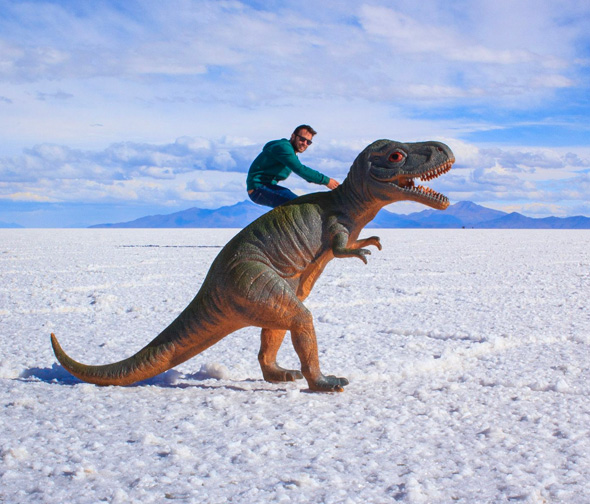
Uyuni Salt Flat Full Day Tour
Red Planet Expedition
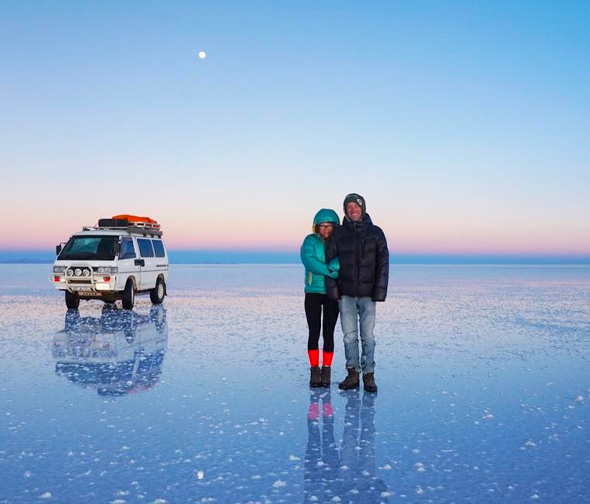
Perla de Bolivia
3/4 Day Tour
The most popular and recommended way to discover Salar de Uyuni is by taking a 3 or 4 day tour in a 4×4 jeep. Three day tours depart from either Uyuni or San Pedro de Atacama and finish in Uyuni. The three day tour starting in San Pedro de Atacama and ending in Uyuni is ideal for those looking to continue traveling north after their visit to Salar de Uyuni. Alternatively, you can do the 4 day tour which starts and finishes in San Pedro de Atacama. This tour visits the same places as the 3 day tours but requires an extra night in order to make the relatively long journey back to Chile.

Day one is the same as the one day tour – departing from Uyuni at the same time and visiting the same places. Following a long day of exploring, you will spend the first night in one of the iconic salt hotels or salt hostels. These remarkable designs are made up almost entirely of salt blocks, from the bed and toilet to the walls and ceilings. Get yourself an early night sleep here as days two and three begin at the crack of dawn, with breakfast at 7am and 5am respectively. Across the next two days you will see everything that Salar de Uyuni has to offer. Of course, you will also be given plenty of time to capture an abundance of photos of one of the picturesque places on Earth The second night is spent in very basic accommodation beside the Polques hot springs, where you will find yourself blown away by the magical stars of the Salar.
The itinerary for those who start their tour in San Pedro de Atacama is reversed as they visit the desert, lagoons, hot springs etc. at the beginning of the tour and the salt flat at the end. The third night of the 4 day tour is spent in a basic hostel in Villa Mar village. You will wake up at 4.30 am to continue your journey, finally arriving back to San Pedro de Atacama at around 2pm.
3/4 Day Tour include:
- The lagoons Polques hot springs
- Arbol de Piedra
- Valle de Rocas
- Sol de Mañana geyser
- Dali Desert
- San Cristobal de Lipez
- A salt hotel
- Chiguana desert
Recommended 3/4 Day Tour
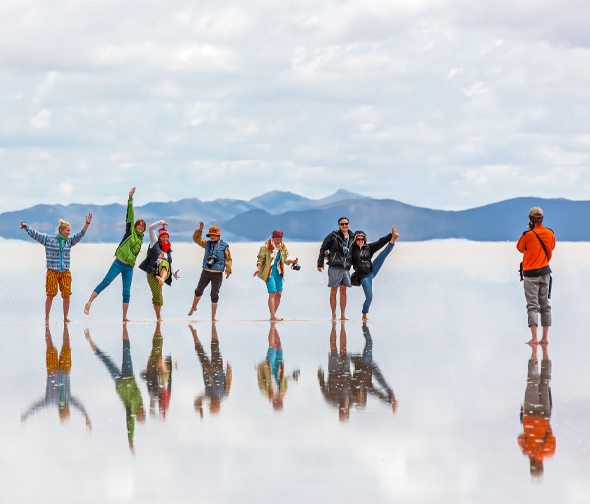
Uyuni Salt Flat Tour 3 Days / 2 Nights
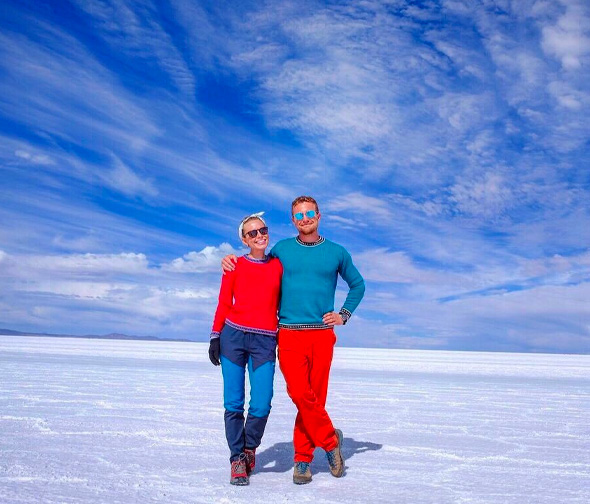
Visit the largest salt mine
in the world in 2021
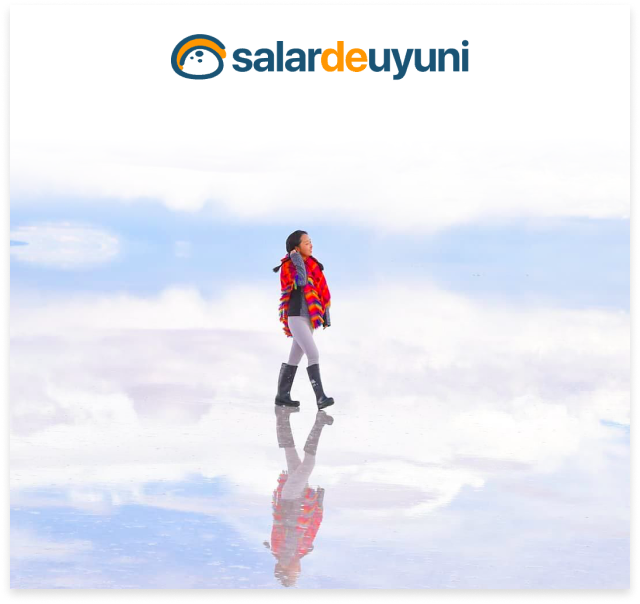

Salar de Uyuni – How to Visit The Bolivia Salt Flats
Written By: The Planet D
Updated On: June 21, 2023
The Salar de Uyuni is the biggest salt flat in the world and the most famous tourist draw in Bolivia, South America . In fact, for many travelers, the Bolivian Salt Flats is the sole reason they visit Bolivia. We do recommend that you visit more of Bolivia than just the salt flats, but if you want some epic pictures and an unforgettable experience you will want to put the Salar de Uyuni Salt Flats on your bucket list.
Ever since the Bolivia Salt Flats played host to the world-famous Dakar Rally in 2014, it has gained even more attention amongst travelers. “You will love it!” These were the words we had heard from other travelers every time we mentioned our plan to travel to the Bolivia Salt Flats. As you might imagine our expectations were sky-high and we couldn’t wait to see the white endless scenery.
Table of Contents
What is the Salar de Uyuni, Bolivia?
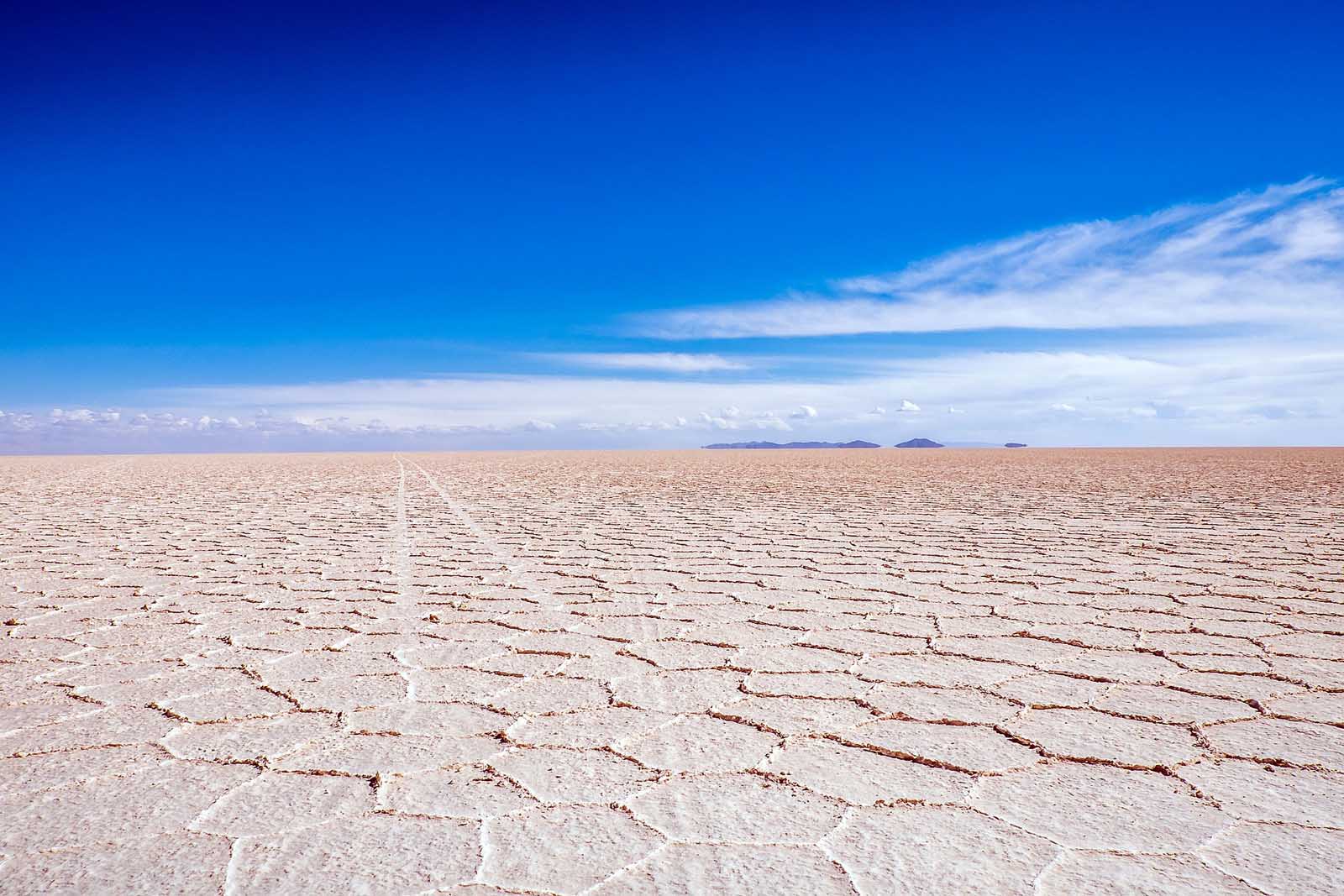
The Salar de Uyuni is one of the most spectacular adventure-travel destinations on Earth. Think 10 billion tons of salt sprawling across an endless desert. The Salar de Uyuni is a 10,582 square kilometer expanse of cracked white salt, left behind when an ancient salt lake named Coipasa dried up thousands of years ago.
Located in the Bolivian Altiplano, it is the world’s largest salt flat and is located at a high altitude of 3,656 meters (10,000 feet) above sea level.
Salar de Uyuni is made primarily of salt. It is a vast expanse of dried-up prehistoric lakes, and the salt flat itself is the result of the evaporation of water from these ancient lakes. Underneath the salt crust lies a thick layer of brine, which is a concentrated solution of salt and water.
The salt crust on the surface is composed mainly of sodium chloride (table salt) along with other minerals such as magnesium, potassium, and lithium. These minerals give the salt flat its unique colors and patterns. In fact, Salar de Uyuni is not just a salt flat but also contains significant lithium reserves, making it a valuable resource.
During the dry season, the salt crust hardens and forms a vast white landscape, creating a surreal and otherworldly appearance. However, in the rainy season, the flat transforms into a massive reflective surface, resembling a giant mirror due to a thin layer of water that covers the salt crust. This phenomenon creates stunning optical illusions and unique photo opportunities for visitors.
Uyuni Salt Flats Day Tours
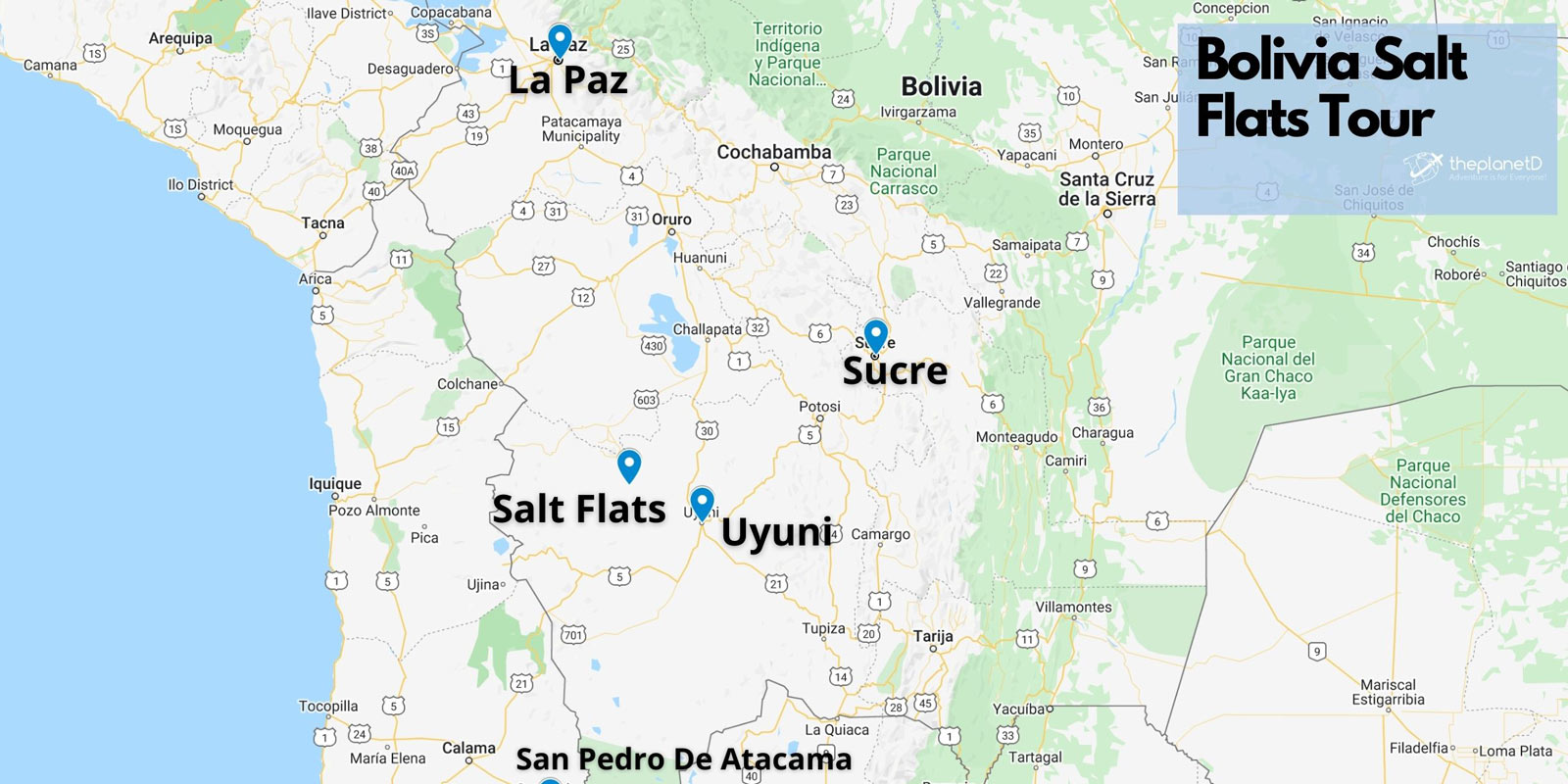
The beauty is that the tours are flexible. There are options for 1 day, 3 days, or 4 days, depending on what your schedule is and how much time you want to spend in the area itself. We recommend the 3 or 4-day option as it covers the most.
Most Salar de Uyuni, including ours, meant spending four days locked in a jeep with three other travelers and a cook while our amiable Bolivian driver took us through an increasingly unbelievable array of natural wonders. This is the best way to see the Uyuni salt flats in my opinion.
We have included a map below to give you an idea of where in Bolivia the slat flats are in relation to the rest of the country.
Where do Bolivia Salt Flats Tours Start From?
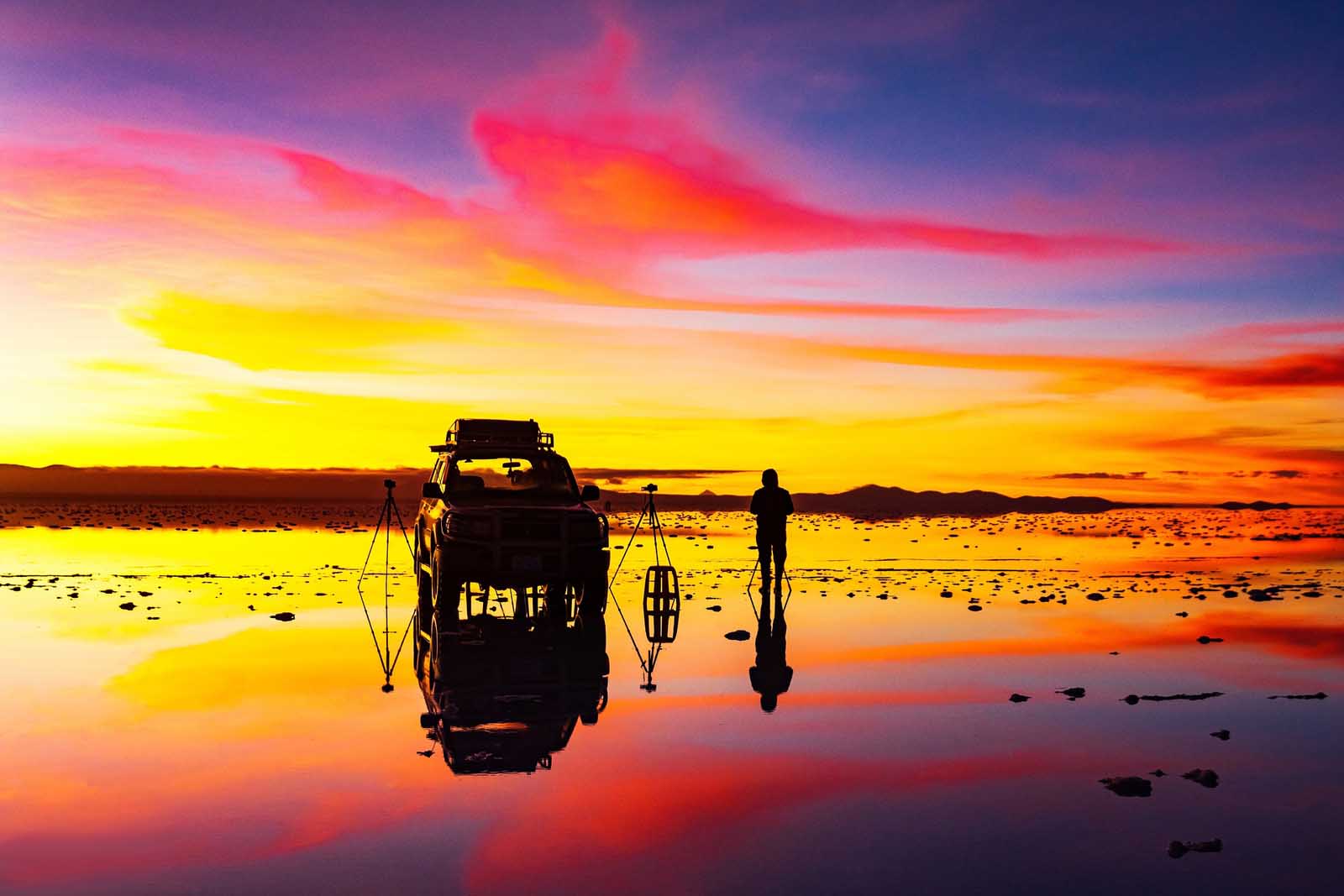
The beauty of the Salt Flats being so popular is that tours to the area start from a number of different places. For the most part, the length of your salt flats tour will determine where you start.
Start and End in Uyuni
Most tours of Salar de Uyuni leave from the town of Uyuni itself, a dry desert settlement located near the salt flats. It’s by far the cheapest place to pick up a tour, with trips on offer for as low as B$600 (about $80 USD). This is most likely the place you will start out if you are doing a 1 Day tour of the salt flats . We do recommend being cautious and doing your research as we found that quite a few of the tour agencies in Uyuni tout unreliable cars and dangerous drivers.
If you are planning a 3 or 4-day tour then there are a lot more options to choose from when it comes to a starting point and an ending point.
Start in Tupiza End in Uyulni
A more pleasant (if slightly pricier) experience can be had by taking the back road to the Salar, leaving from the south-Bolivian city of Tupiza. Home to a handful of tour agencies and a pleasant main plaza, Tupiza is a relaxing place to spend a couple of days while researching agency options. Tours from here usually last 4 days and at the end, you can return to Tupiza from Salar de Uyuni if you like.
Start in Uyuni End in San Pedro de Atacama in Chile
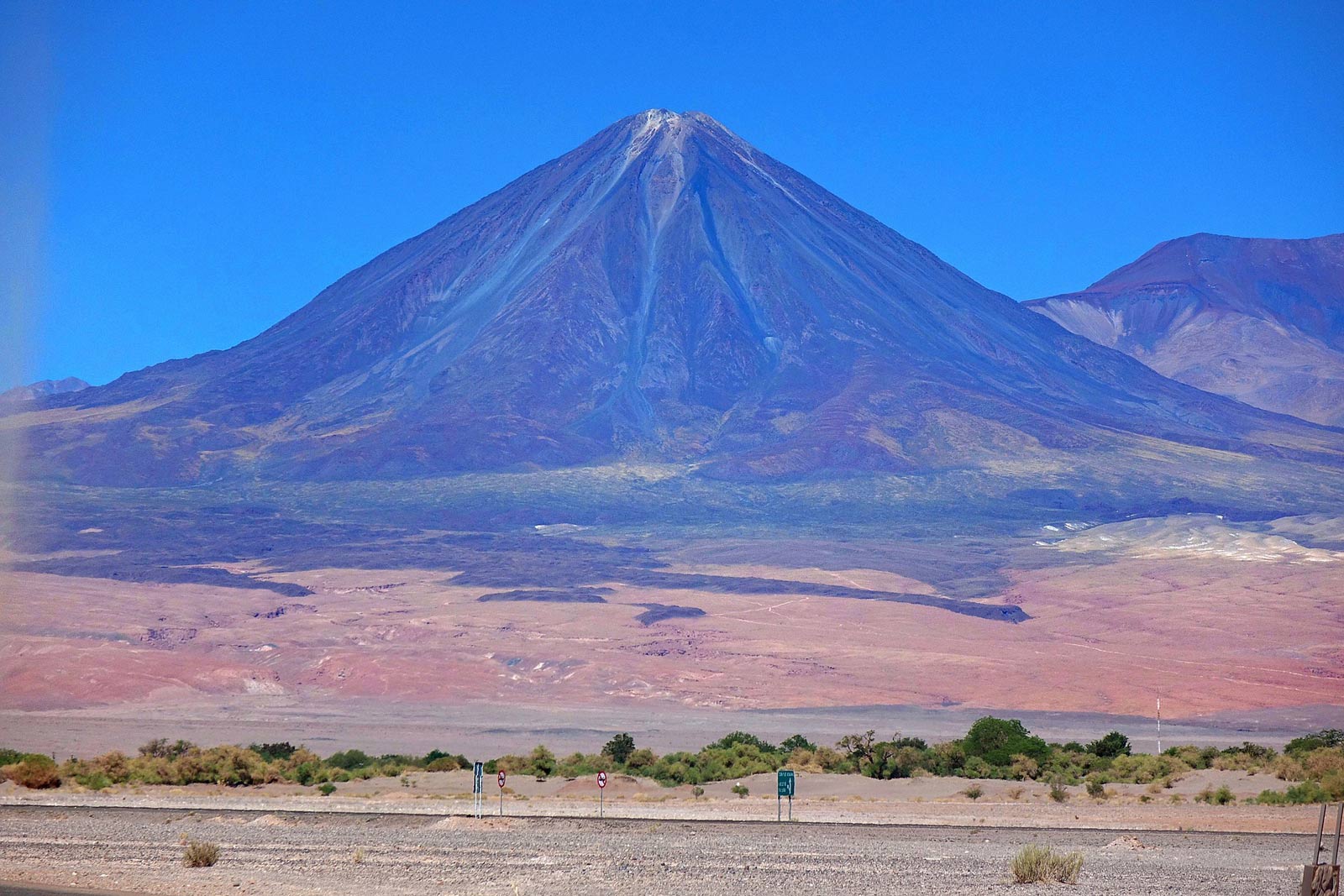
This is the most popular option, especially if you are looking at a multi-day tour. Alternatively, if you have money to burn, you could begin your tour from San Pedro de Atacama , a beautiful (if absurdly touristy) village in nearby Chile.
Located on Chile’s border with Bolivia, San Pedro de Atacama is surrounded by spectacular scenery of its own to explore–but it’s not for the faint of wallet. This is one of the reasons we recommend booking the tour that starts in Uyuni and ends in Chile at San Pedro de Atacama.
Altitude Sickness
If you do decide to start in San Pedro remember that you will be at a high altitude, so there is a risk of altitude sickness if you don’t take care to acclimate. Drink plenty of water and don’t over-exert.
At this high of elevation, there is a real threat of getting sick. Keep an eye out for altitude sickness symptoms which include headache, nausea, and vomiting when severe. We recommend visiting a travel clinic before visiting Salar de Uyuni. Your doctor may prescribe Diamox. Locals also recommend coca tea made from coca leaves.
La Paz or Sucre
If you are looking just for a quick day tour of the salt flats then you can easily jump on one in either La Paz or Sucre, if you are in those cities and you have a limited amount of time.
How Many Days in the Bolivia Salt Flats Do You Need?
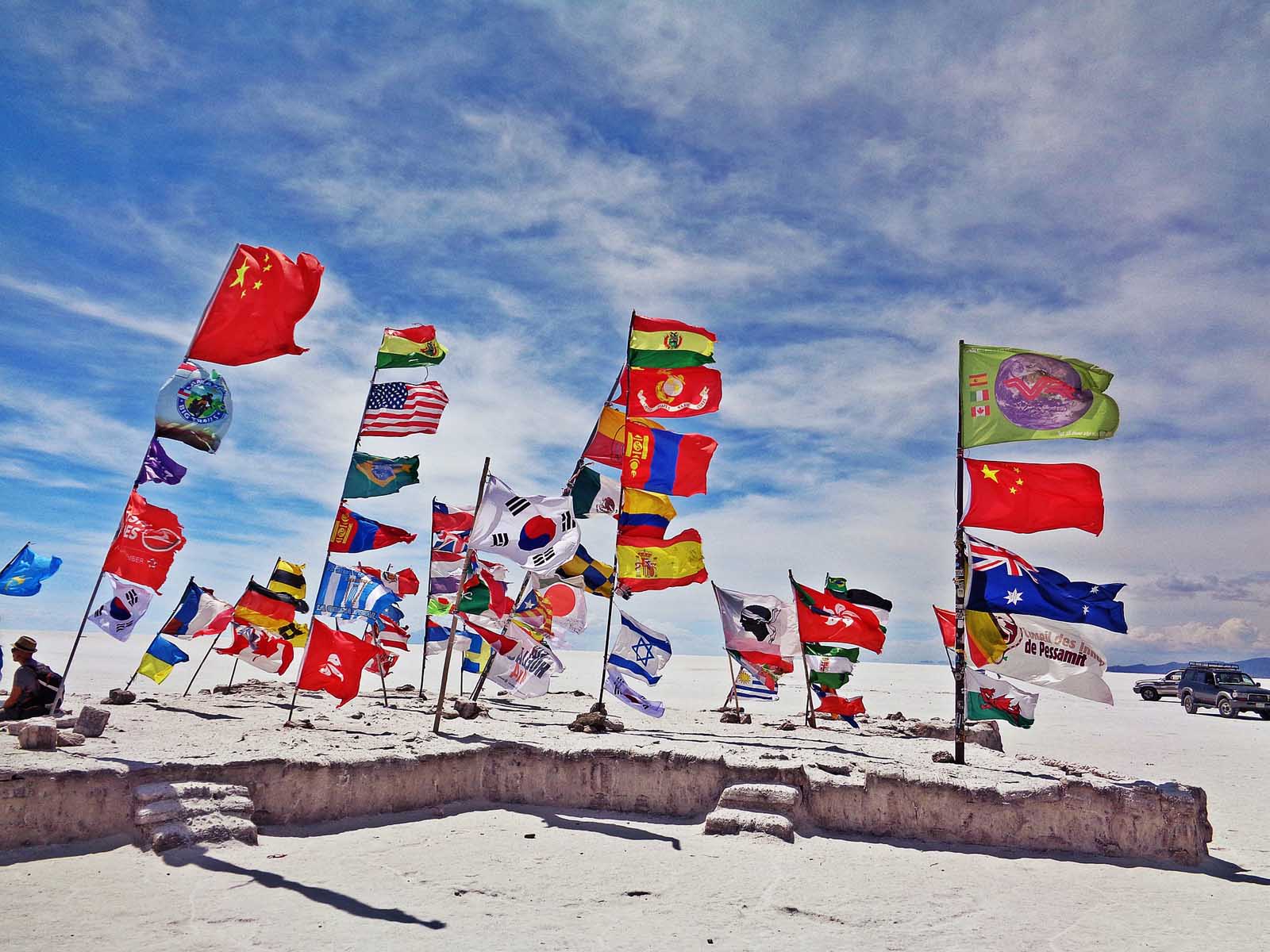
We recommend the 3 or 4-day tour of the Uyuni Salt Flats. Although you can do a 1-day tour of the salt flats themselves you really do miss out on the other attractions that are covered in the 3 and 4-day tour. The longer tours are more popular for this reason.
Of course, it will all depend on your budget and travel itinerary which length of trip you choose. Just be aware that on the 1-day tour you miss out on the hot springs, the volcano, and the flamingoes and you don’t get the chance to see this amazing sight at sunset. Being a photographer this is a must!
The 3-day tour of the Uyuni Salt Flats is the perfect amount of time to balance being at altitude and seeing it all.
How to Choose Your Bolivia Salt Flats Tour
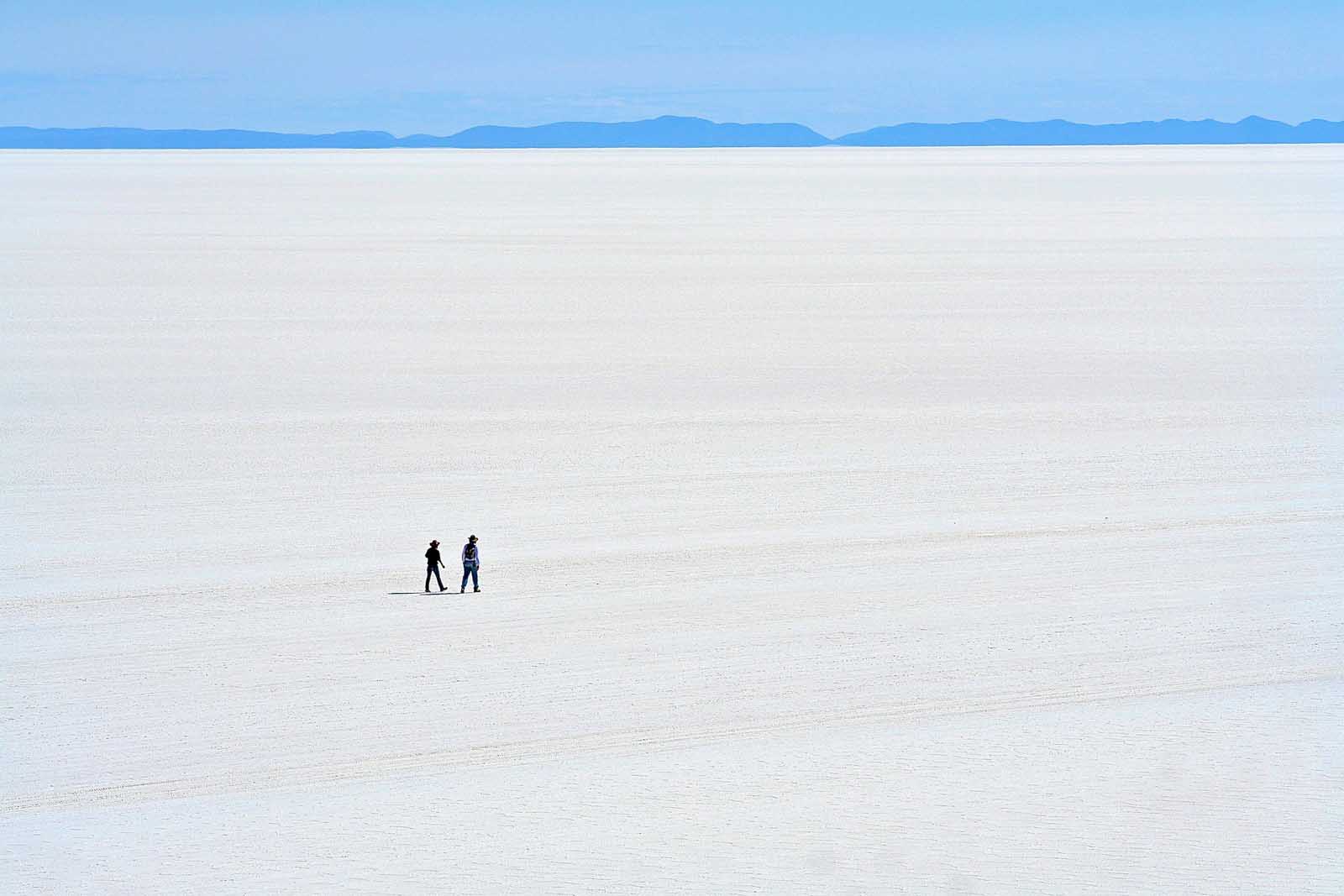
There are many tour agencies and many drivers offering tourists an Uyuni experience-but not all of them are reliable. Drunken drivers and sham agencies abound, so be sure to research your options carefully and meet your driver before putting down money. If things seem shady, don’t be afraid to back out.
Some tour operators are all too good at pressuring tourists to ignore their better instincts. The agency I chose was named Natural Adventure , an operator based out of the small Bolivian city of Tupiza.
I had a very good experience with them; though my driver didn’t speak much English, he made up for it with friendliness, verve, and expressive hand gestures.
The truth is that all the tours will cover the same things. It is pretty standard. They will try and upsell you and convince you that they have faster cars or better accommodation just to get more money out of you. If you ask the right questions you will definitely up your chances of getting a great tour.
Recommended Tours to Book Ahead of Time
Questions to Ask Before Booking a Tour to the Uyuni Salt Flats
- How Many People will be in my car? Obviously the smaller amount of people the better. But most tours try and get 6 people plus a driver in a vehicle.
- What type of accommodations are offered? Will you be staying in a salt hotel, sharing a room, or all in one big room?
- Does my driver speak English? Most drivers are also your guide and cook and don’t speak much english. It helps if you know some spanish or you are good at acting things out.
- Is the entrance to the National park included? The usual answer to this is no, but some do offer it. If it is not then be prepared to fork over an extra of 150 Bob ($22 USD). If you plan on visiting “Fish Island” within Uyuni salt lake that will cost you extra as well.
- Where does the tour end? Will you be coming back to Uyuni or doest t finish in another destination like San Pedro de Atacama in Chile. The coice is usually yours.
How Much Does it Cost to Visit the Bolivia Salt Flats?
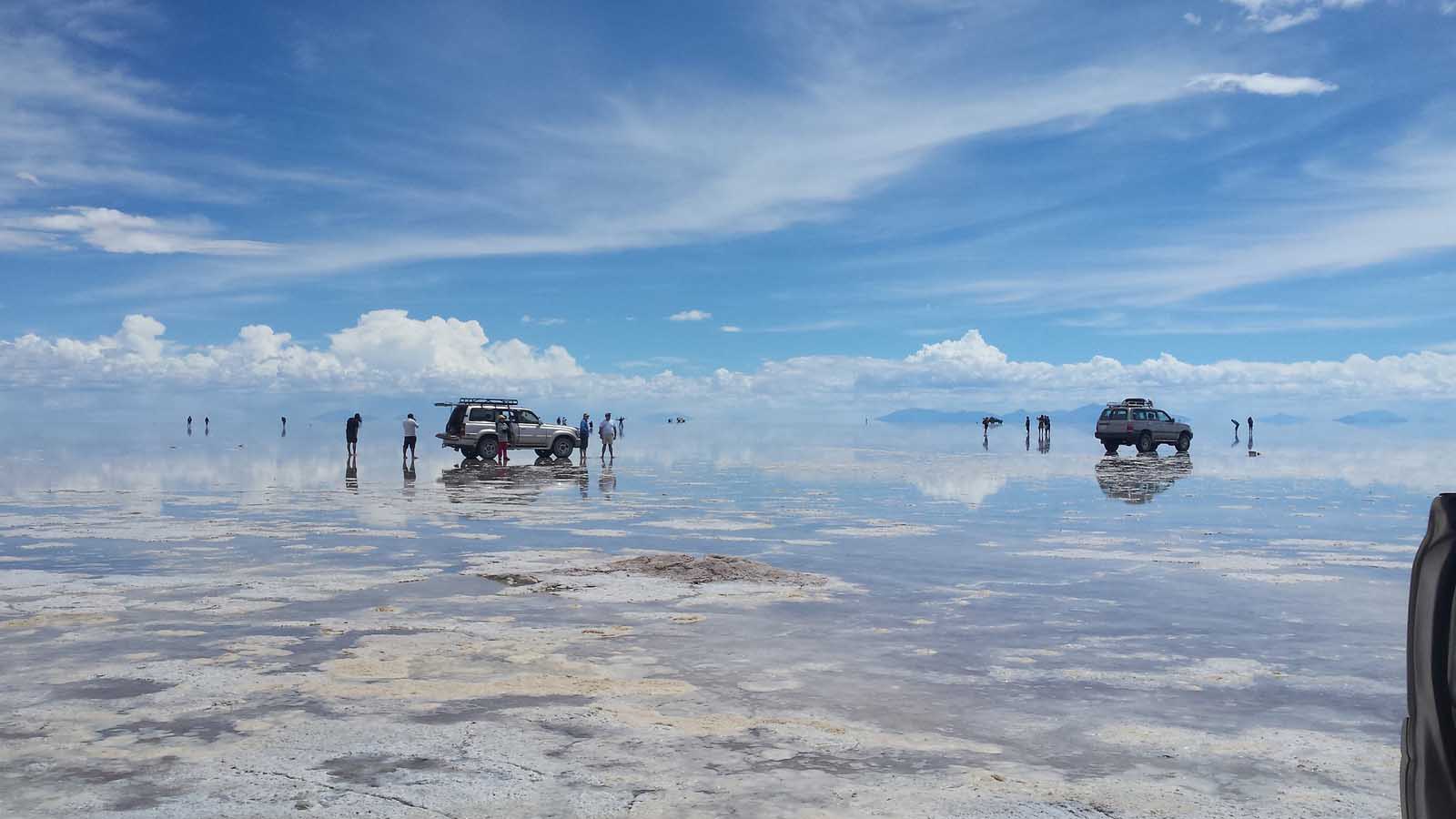
As we said above, all of the tours are the same and follow the same route. Do not be fooled by people trying to upsell you to a better tour. The car and the accommodation may change but the tours themselves are identical. That being said the price varies widely, so you are going to have to negotiate the best price.
You should not pay more than 850-1350 Bob for a 3-day tour ($125 – $195 USD) . This price is all-inclusive of food, transportation, accommodation, and a Spanish-speaking guide. If you want an English-speaking guide prepare to pay double. What it does not include is the $20 fee to get into the National Park, so make sure you have cash for that. If you are planning on going to San Pedro de Atacama then you will also need 50 Bob for the border crossing. It is always good to have some cash on you.
It is important to note that the prices above are if you book your tour on arrival or in Bolivia itself. If you book your tour online before you travel the cost can be almost double.
What are the Accommodation Options on the Salar de Uyuni Salt Flats Tours?
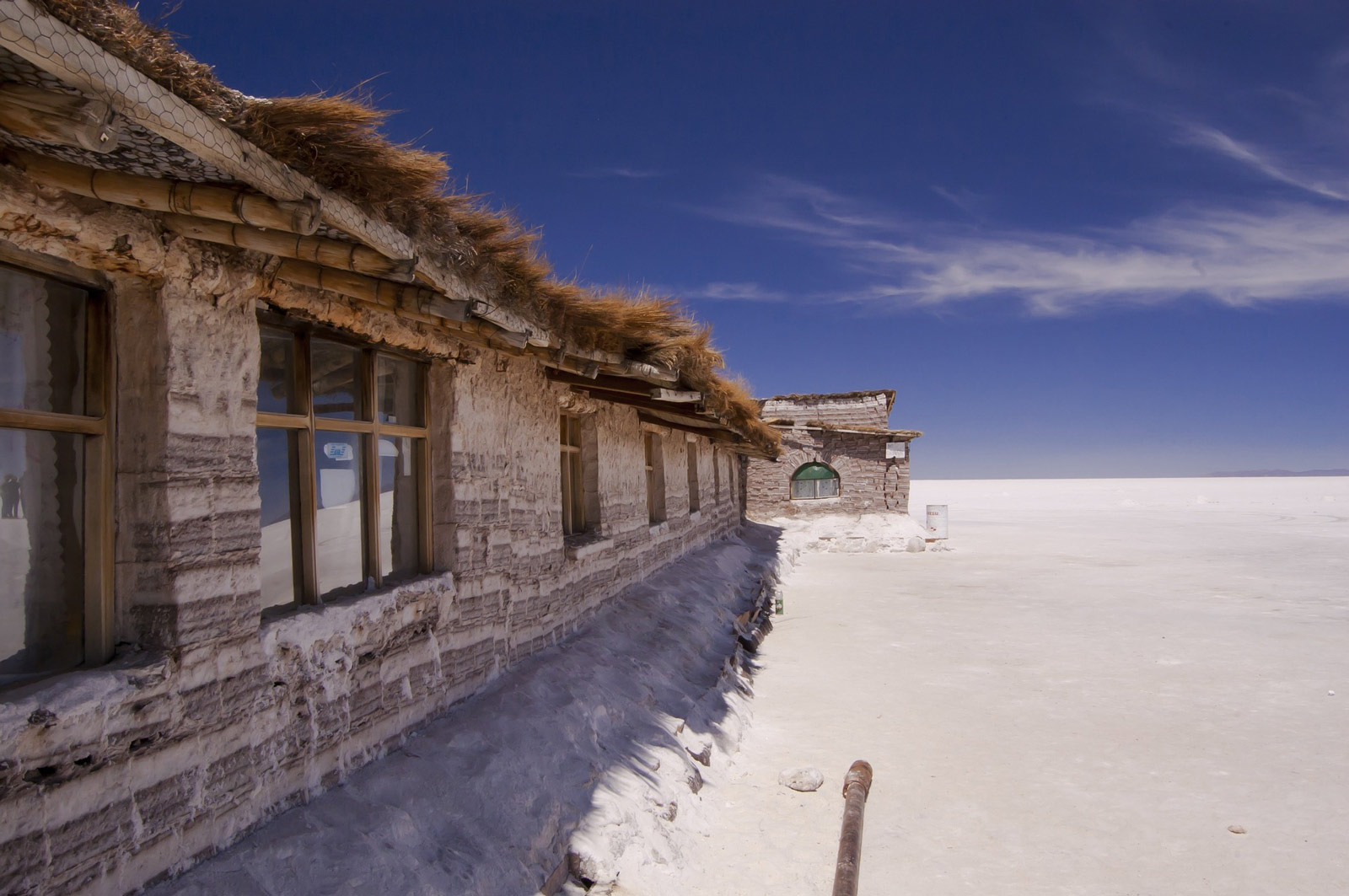
While tours themselves are markets as basic, I would say that we were pleasantly surprised. We have stayed in some basic places over the years but were fairly impressed when you consider the cost of the tour.
You will spend the first night of the tour in a salt hotel, which we loved. Now when I say a salt hotel, I mean everything is made of salt. The hotel exterior is made of salt blocks, the chairs, ground, and bed are also made of salt. We were happy to have private rooms on the first night to really enjoy it. There was also a shower which cost 10BS and had enough water for 2 people. Take advantage of it as there are no other showers on the tour.
The other nights we slept in dorm-type rooms, but you can pay an extra 150Bs for a private room, which we did. The buildings are clean and well taken care of so you never felt like you were on an ultra-budget tour.
There is no WIFI out here so you will be disconnected which we found a welcome reprieve from constantly checking phones each day.
The way the meals are set up is that breakfast and dinner are served at the accommodation and the lunch is always on the road. The food itself was not fine dining but it was tasty and there was always enough.
Where to Stay Near Salar de Uyuni
While there aren’t many accommodation options directly on the salt flats themselves, the nearby town of Uyuni offers various choices for visitors. Here are some suggestions on where to stay:
Uyuni town: This is the most convenient place to stay as it offers a range of hotels, hostels, and guesthouses catering to different budgets. You’ll find options ranging from basic accommodations to more luxurious hotels. Staying in Uyuni allows you to easily access Salar de Uyuni and other nearby attractions.
Colchani: Situated on the edge of Salar de Uyuni, Colchani is a small village known for its salt processing industry. It offers a few accommodations that provide a unique experience closer to the salt flats. Keep in mind that the options may be limited compared to Uyuni town.
Salt hotels: Some unique accommodations are built entirely from salt blocks, providing a distinctive experience for visitors. These hotels are typically located on the outskirts of Uyuni and offer a blend of comfort and the chance to immerse yourself in the salt flat surroundings.
Palacio de Sal is a luxury hotel and spa that was the first salt hotel. Located near the entrance of Salar de Uyuni near Colchani, this is a popular place to stay.
Salt flats camping : For an adventurous experience, you may consider camping on the salt flats. There are tour operators that offer overnight camping trips, providing tents, sleeping bags, and meals. This option allows you to witness the stunning sunsets and starry nights of the salt flats.
How to Dress for a Salar de Uyuni Tour
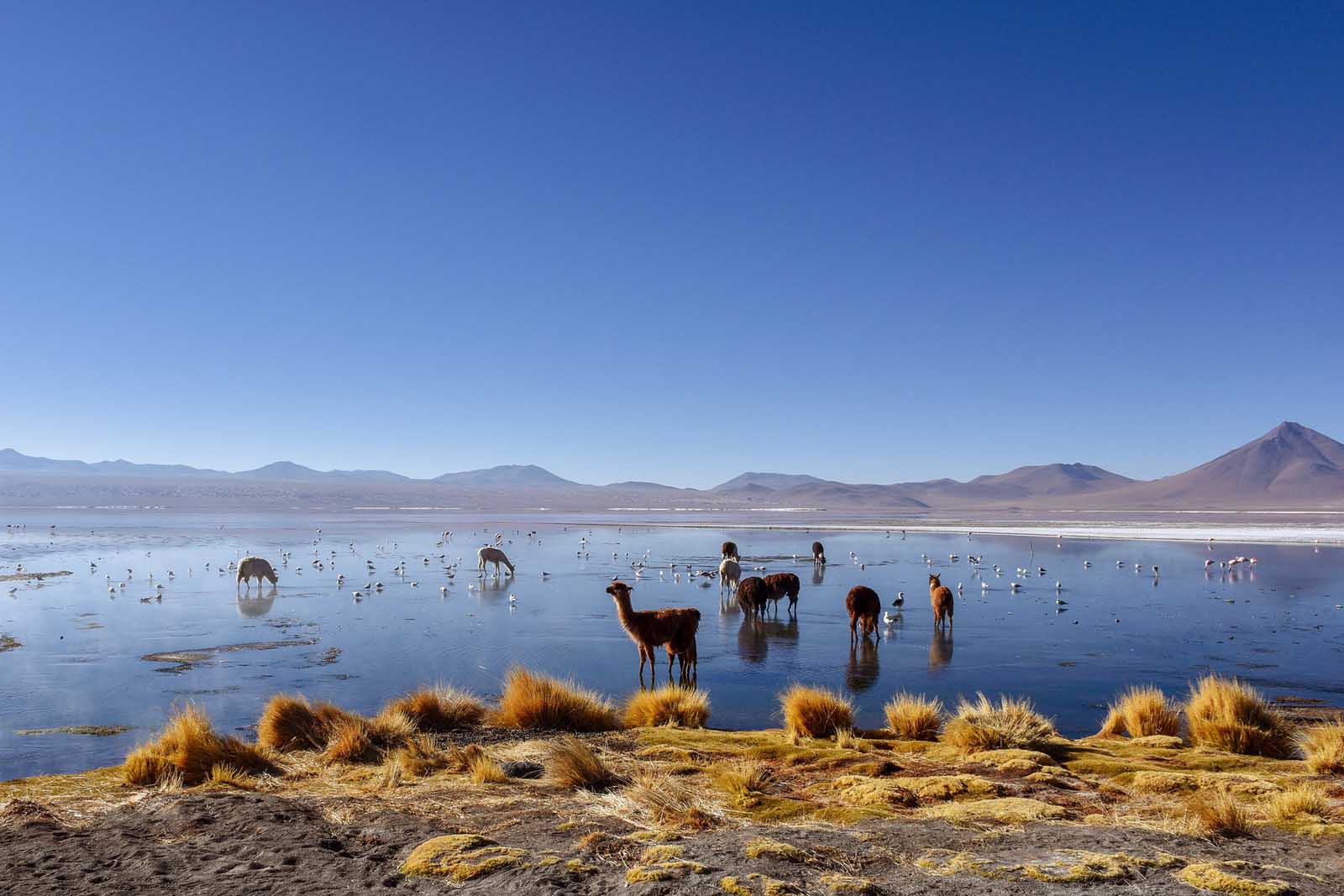
Travel through Bolivia’s southwest corner means splitting your time between extreme warmth, under the startlingly hot midday sun, and extreme cold, when the chilly high altitude nights creep in.
It’s a good idea to dress in layers–that way, you can layer up as the sun drops, then shed clothing again when it rises. During parts of the Uyuni tour, temperatures can drop as low as -15 degrees celsius, so it’s vital to make sure that you have some warm clothes packed. Read our layering tips for packing.
How to Get to Salar de Uyuni
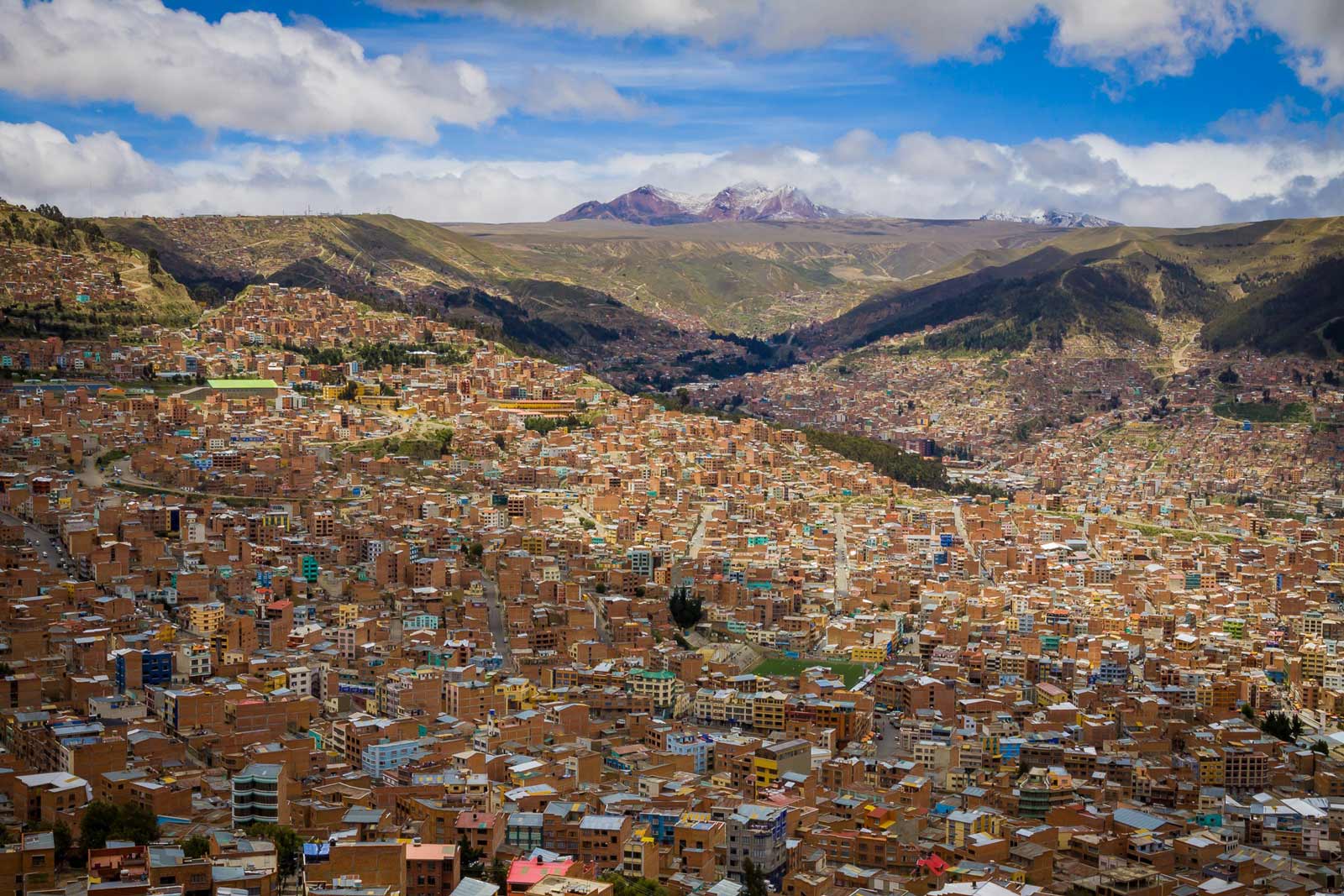
From La Paz to Uyuni
The buses from the de facto capital of La Paz to Uyuni are increasingly geared to tourist comfort, as the Salar de Uyuni becomes a more and more ubiquitous stop among backpackers in South America. The bus from La Paz takes 8 hours and gets you into Uyuni at about 6 am.
This is plenty of time as most tours do not start until 10 am. It is an overnight bus, so you will save on a night’s accommodation if you sleep. It will cost you about $25 USD for the overnight bus and you can check out tickets with https://www.ticketsbolivia.com/
It is recommended to stay a night in Uyuni to acclimate to the altitude.
If you have some extra cash or are limited on time then you can also fly to Uyuni from La Paz. It costs about $100 USD and is often included with private tours from La Paz.
From Sucre to Uyuni
If you are coming from the capital of Bolivia, Sucre, you can catch a direct bus to the Uyuni Salt Flats. The bus ride usually takes about 8 hours. It leaves from the bus terminal on Avenida Ostria Gutierrez in Sucre at 9:30 am and 8:00 pm. It will cost you approximately 11 USD. Make sure to check the times and cost on TicketsBolivia .
If you want, you can book an organized 1-day tour from La Paz to Uyuni salt flat . At the end of the tour, you will return to La Paz.
When is the Best Time to Visit the Bolivian Salt Flats?
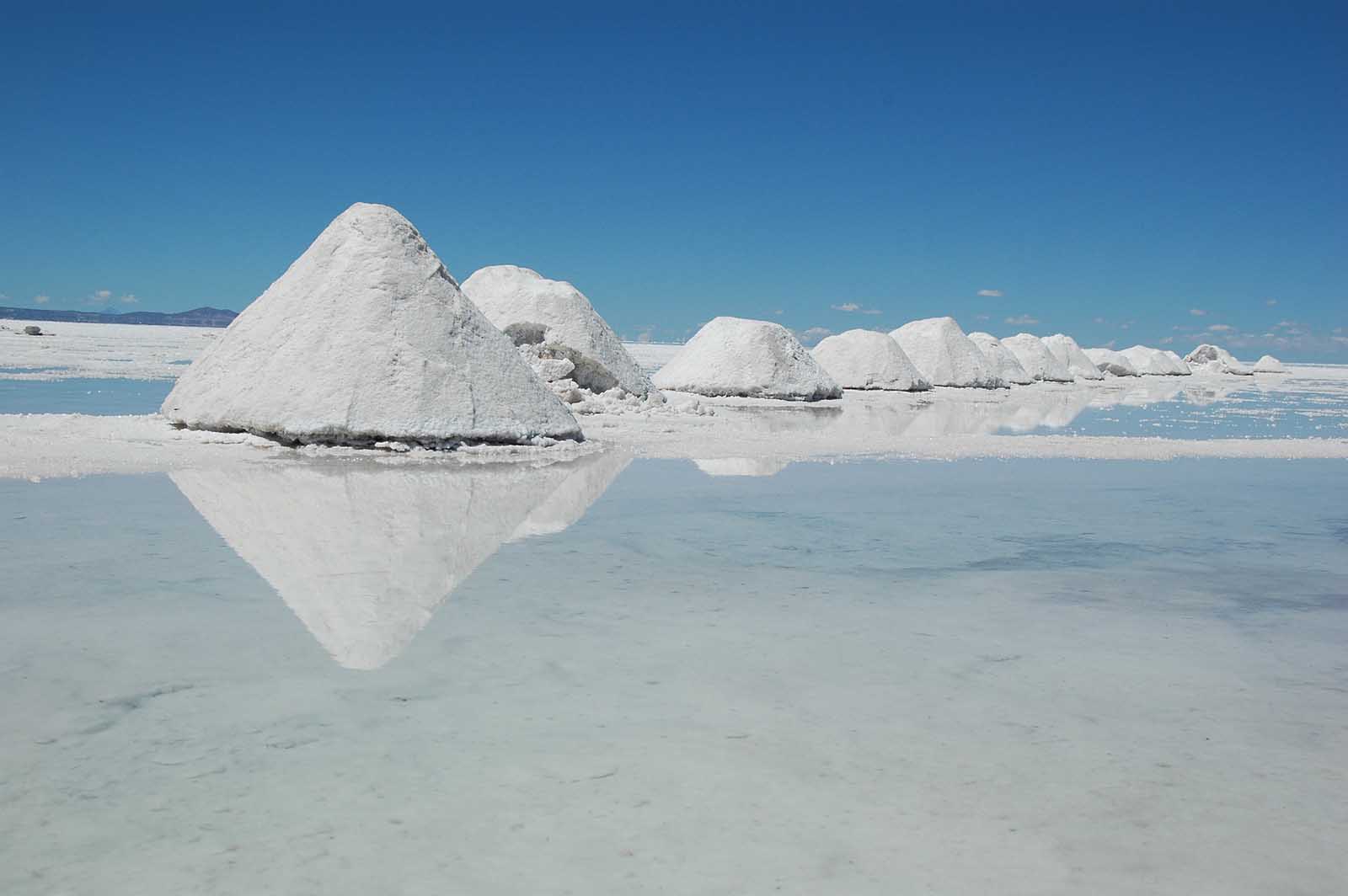
There is no bad time to visit the Bolivia Salt Flats. It really depends on the experience you are looking for.
Rainy season: If you want to see reflections of the salt lake, the rainy season is a good time to visit. The salt flats flood and transform into a massive mirror that reflects the sky and creates an other-worldly experience. During this time of the year there is little to no wind and usually clear skies. Perfect for a photographer. The rainy season in Bolivia is from December to April. Just be aware that during the rainy season a lot of the surrounding attractions are closed.
Dry Season: We visited during the dry season and it was spectacular as well. It is warmer during this time from May to November. Since we visited during the dry season, our SUV produced a giant cloud of dust when we crossed the stunning moon-like landscape of Bolivia’s Andean Plateau making for surreal images.
What you will See on a Bolvian Salt Flats Tour
Isla del pescado.
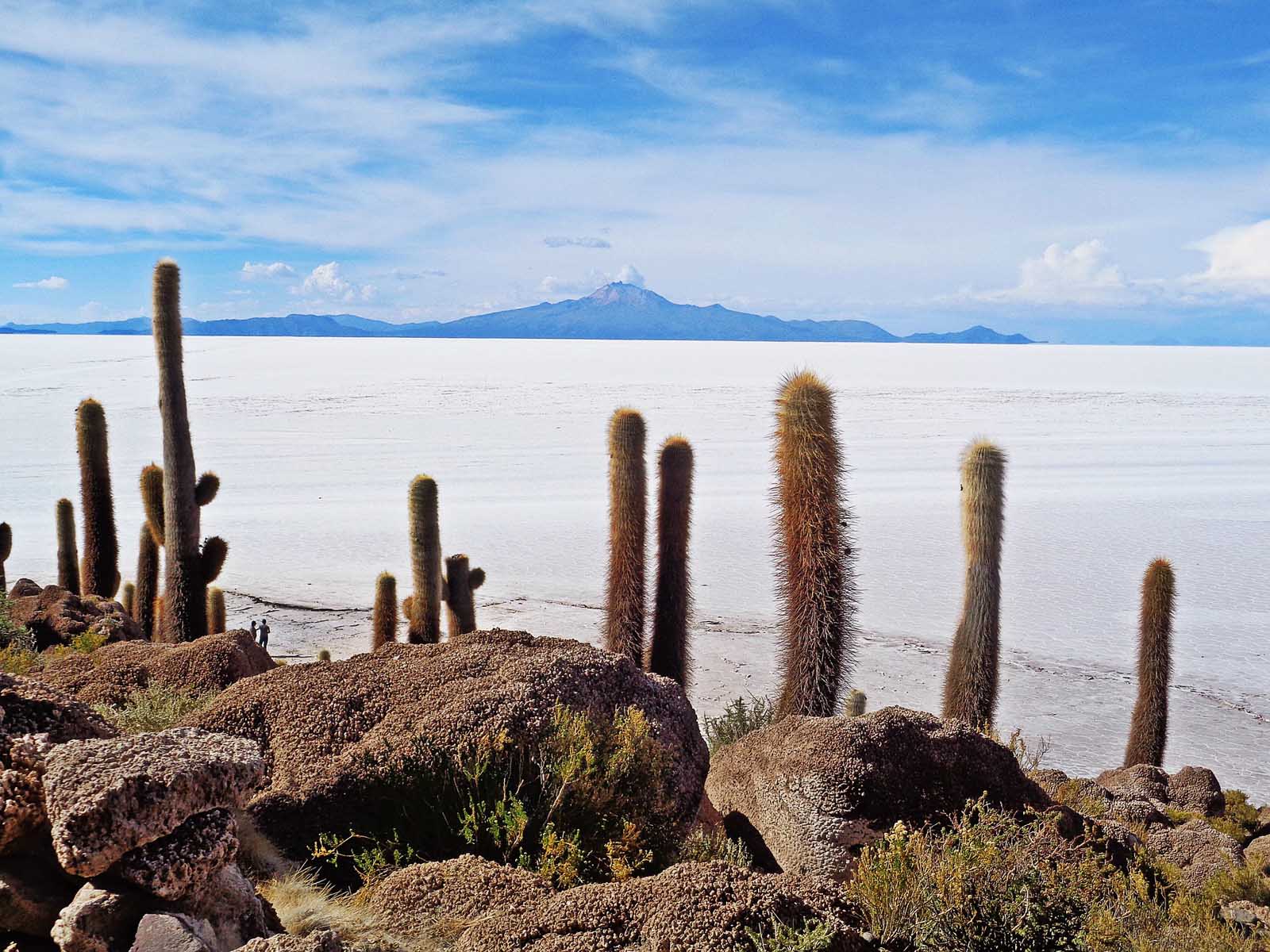
Have you ever seen an island that is NOT surrounded by water? Welcome to Isla del Pescado, the Fish Island! The Salar de Uyuni has a few islands and we enjoyed an awesome view from the top of this one. From up there, we got an impression of the true dimension of the salty landscape.
Steam Locomotives – Train Graveyard
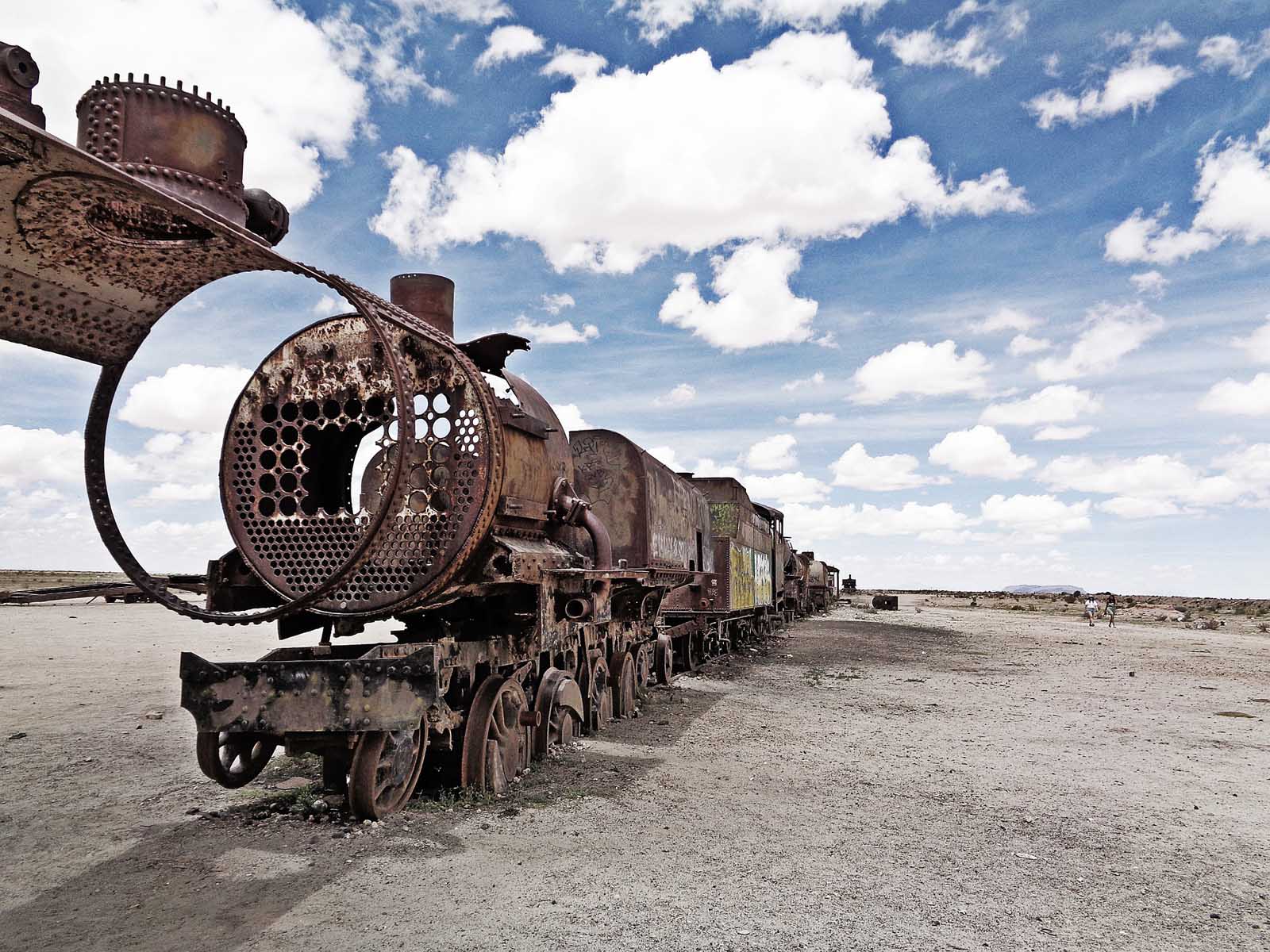
We arrived in Uyuni and jumped out of the SUV and climbed up the giant wrecked old steam locomotives. At that point, we did not know that the adult’s playground was just behind the corner, Uyuni’s train cemetery. The trains are leftover from a time when they carried minerals from the Salar de Uyuni to the Pacific Ocean.
Bolivia’s Andean Plateau
In the Andean Plateau, at an altitude of about 4,000 meters, not only the air is breathtaking. This is what real adventures look like. This is where the SUV feels at home.
The chain of volcanoes and mountains along the horizon gave us the feeling of being far away from any civilization. And for a second we thought we reached the “end of the world”.
The tracks might look like remains from centuries past but they are still in use and connect Bolivia with Chile. The moon-like landscape surrounded us as we drove on the red and brown sand when unexpectedly, behind a hill, a beautiful lagoon appeared.
Lunar Landscape
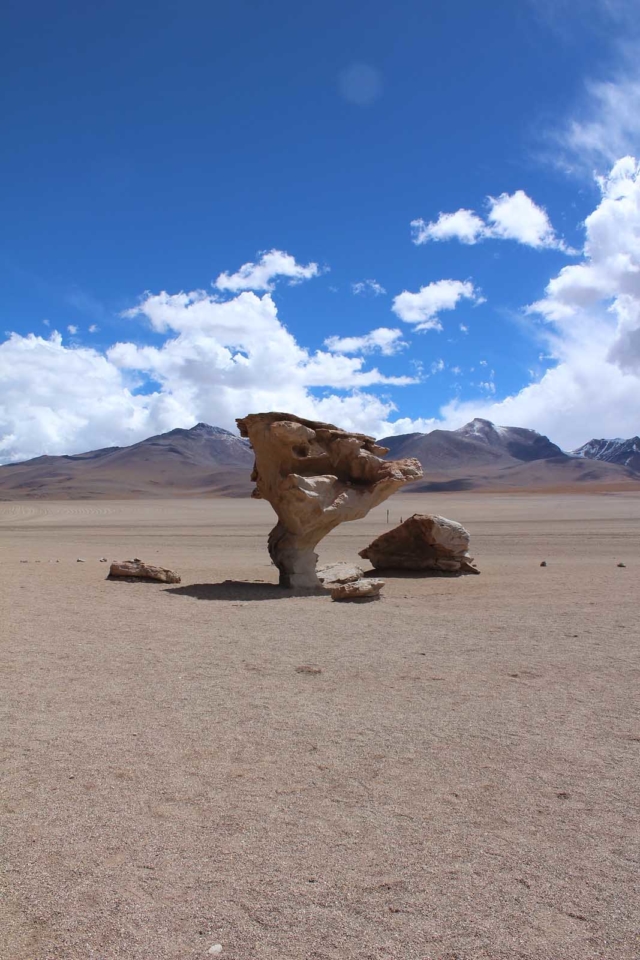
The Andean Plateau and its mysterious rock formations have been formed over millions of years through wind and sand. And sometimes nature is very creative and forms rocks like the Arbol de Piedra, the Stone Tree.
Our guide told us before that we would get to see a lagoon more beautiful than the one we had seen before. But we did not want to believe him as we could not imagine that it would be possible.
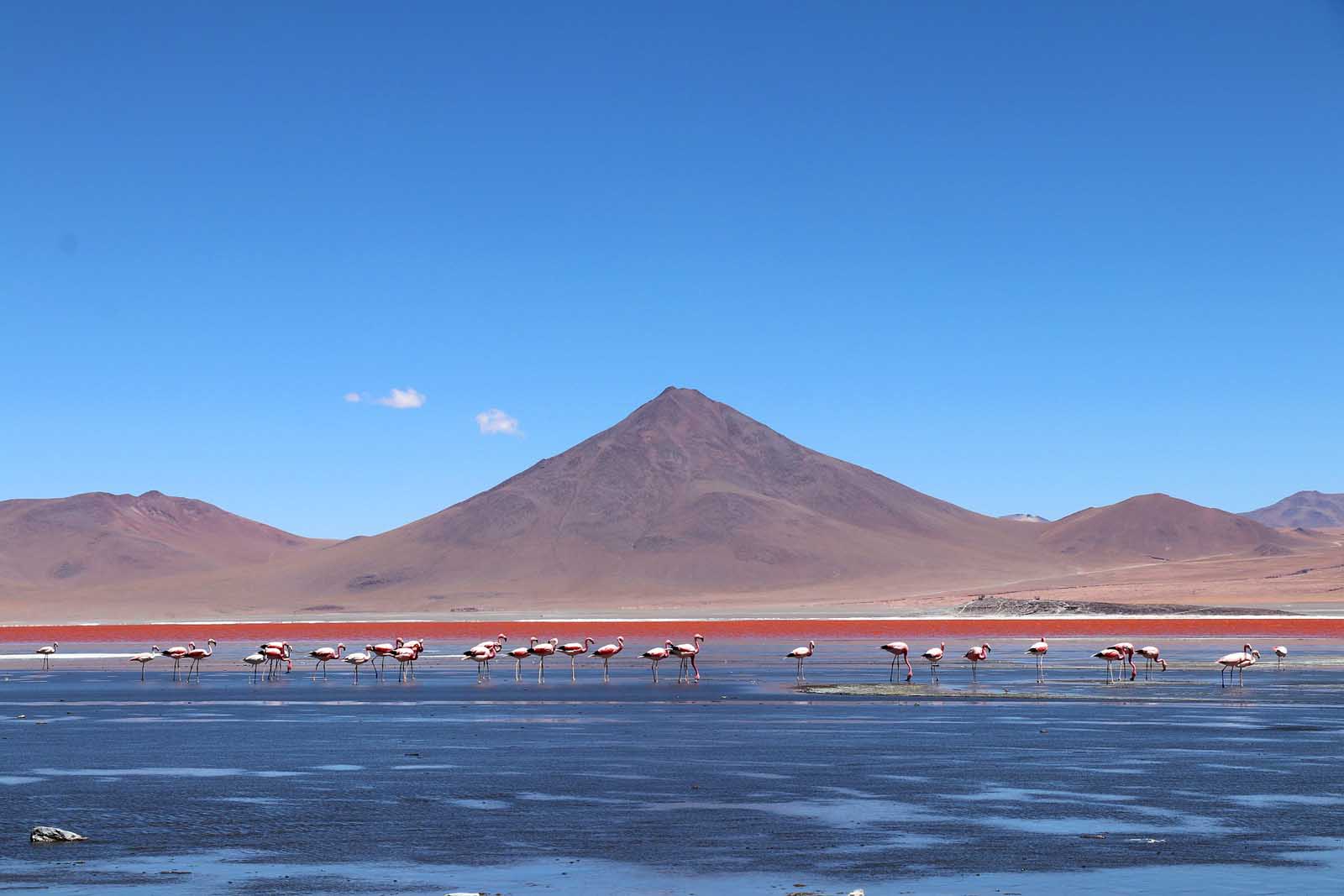
Hundreds, probably thousands of flamingos were wading through the shallow water in search of food. It was such a contradiction to see an oasis of life in the middle of the barren scenery.
Laguna Colorada
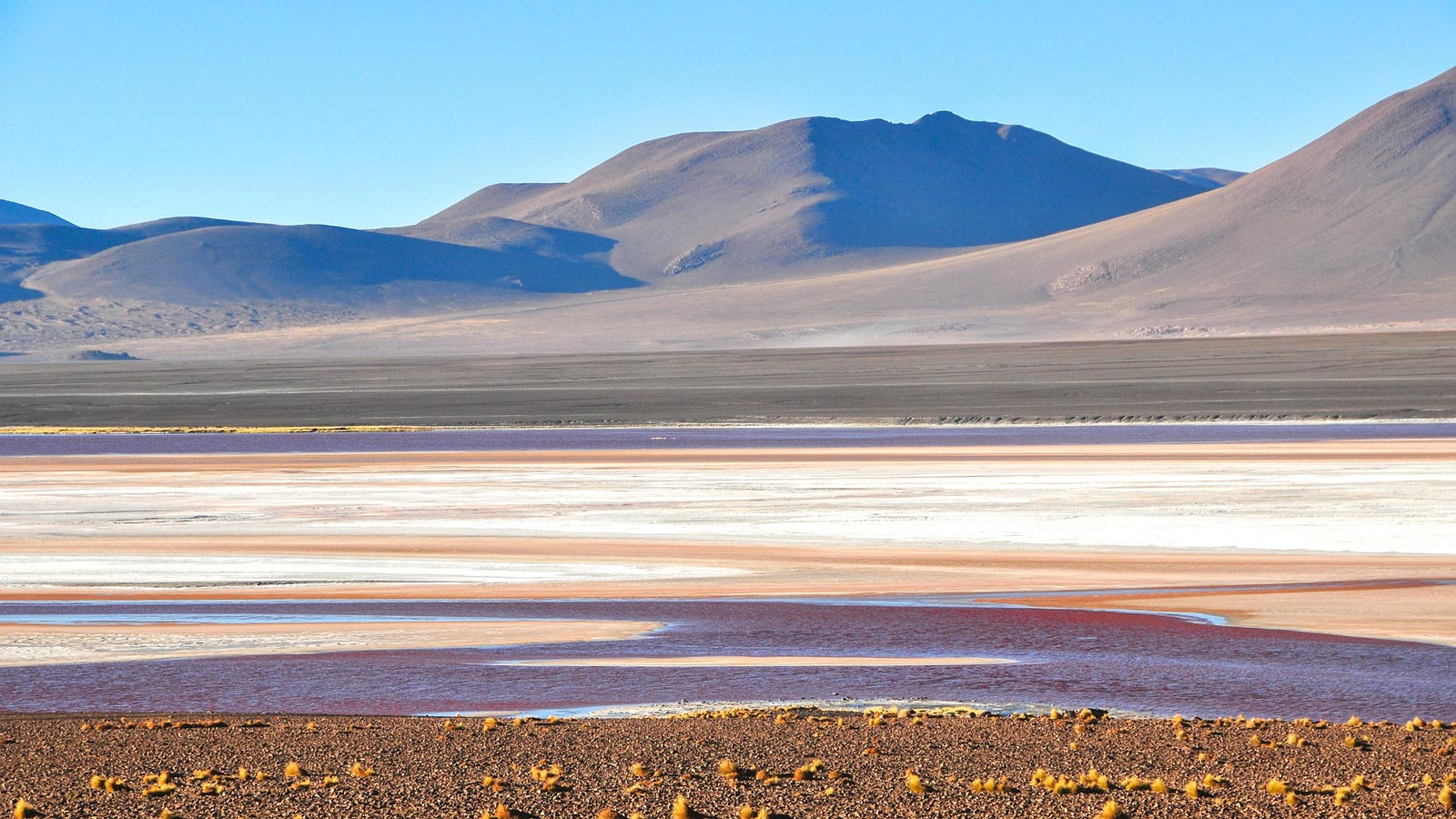
The silence was around us when we approached the Laguna Colorada, the Red Lagoon. Everything around us felt unreal. Do you know how it feels when you see something and cannot believe it is real? It was hard to believe that this lagoon, with its shades of yellow, black, white, red, brown, and the blue sky above it, was not a canvas.
Now and then we saw these little pink spots again, flamingos that enjoyed the delicious alga which makes the water appear red. It was almost sad to see that the last lagoon we visited, the beautiful Green Lagoon with the picturesque volcano in the background was void of flamingos.
As we learned this green type of algae was poisonous. Too bad, the water looked so inviting with those beautiful reflections on the surface.
Sulfur Geysers
Visiting a steaming geyser is a highlight of the Uyuni Salt Flats tour; I was so distracted taking pictures, I almost fell in! It was a very special place our driver took us to watch the sunrise in the early morning.
We were surrounded by geysers and holes in the ground filled with boiling mud. The cold air of the morning intensified the steam and the area looked like a mystic place. After leaving the salt flat we thought it could not get any better. But we were so wrong!
Photos of Salar de Uyuni
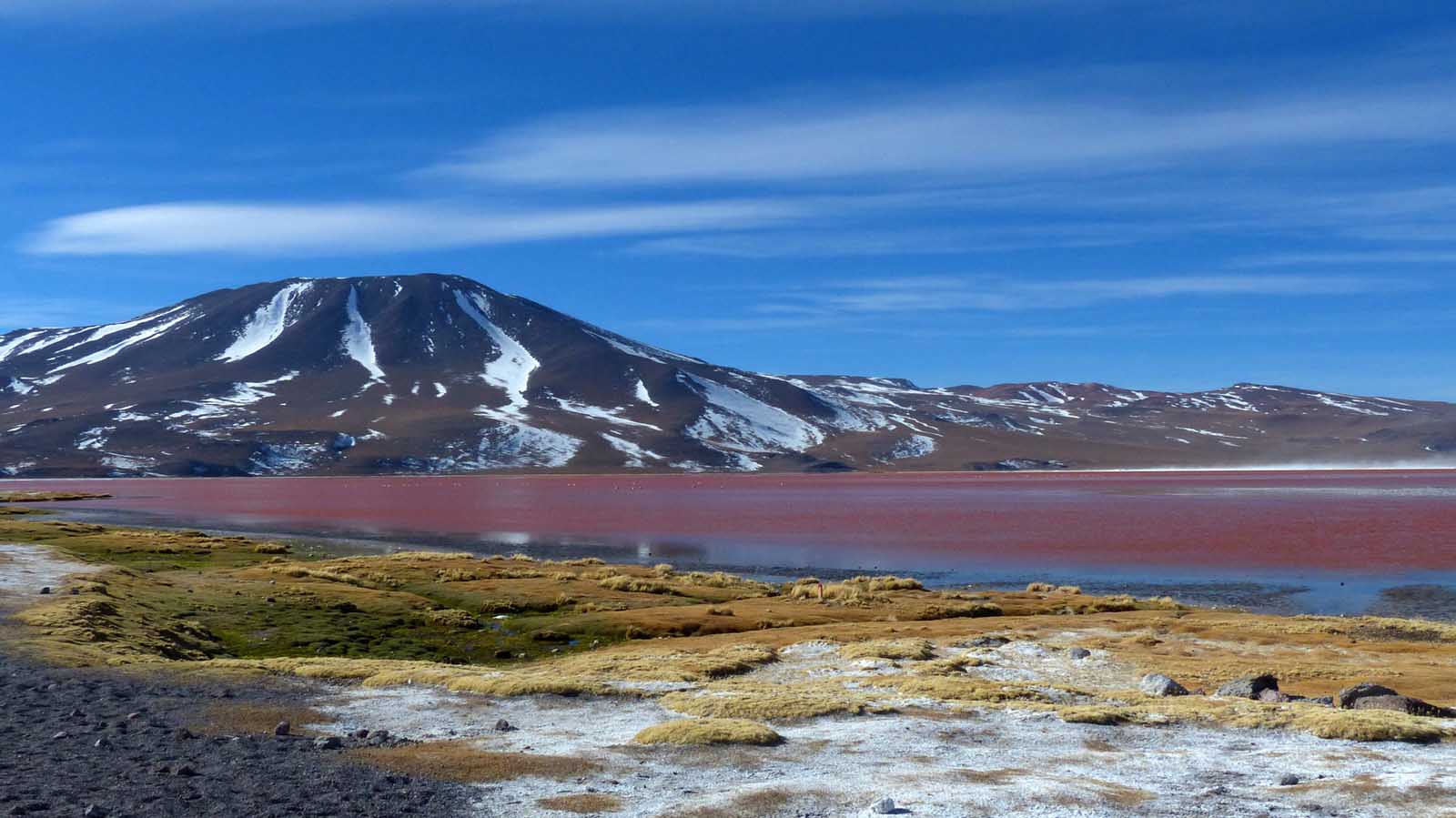
The Uyuni Salt Flats is THE photo spot to play with proportions and perspectives when taking photos. It’s a place where people sit on potato chips cans, toy dinosaurs come to life chasing travelers, and jumping over an SUV is a breeze.
On short photo stops, it can be hard to decide whether to take pictures of the scenery or simply take the scenery in. For those inclined to snap, it’s important to pace your photographic zeal. The landscape is so marvelous, it’s simply impossible to catch it all. In other words, it’s a road trip like no other, and absolutely worth doing.
Common Questions About Doing a Salar de Uyuni Salt Flats Tour
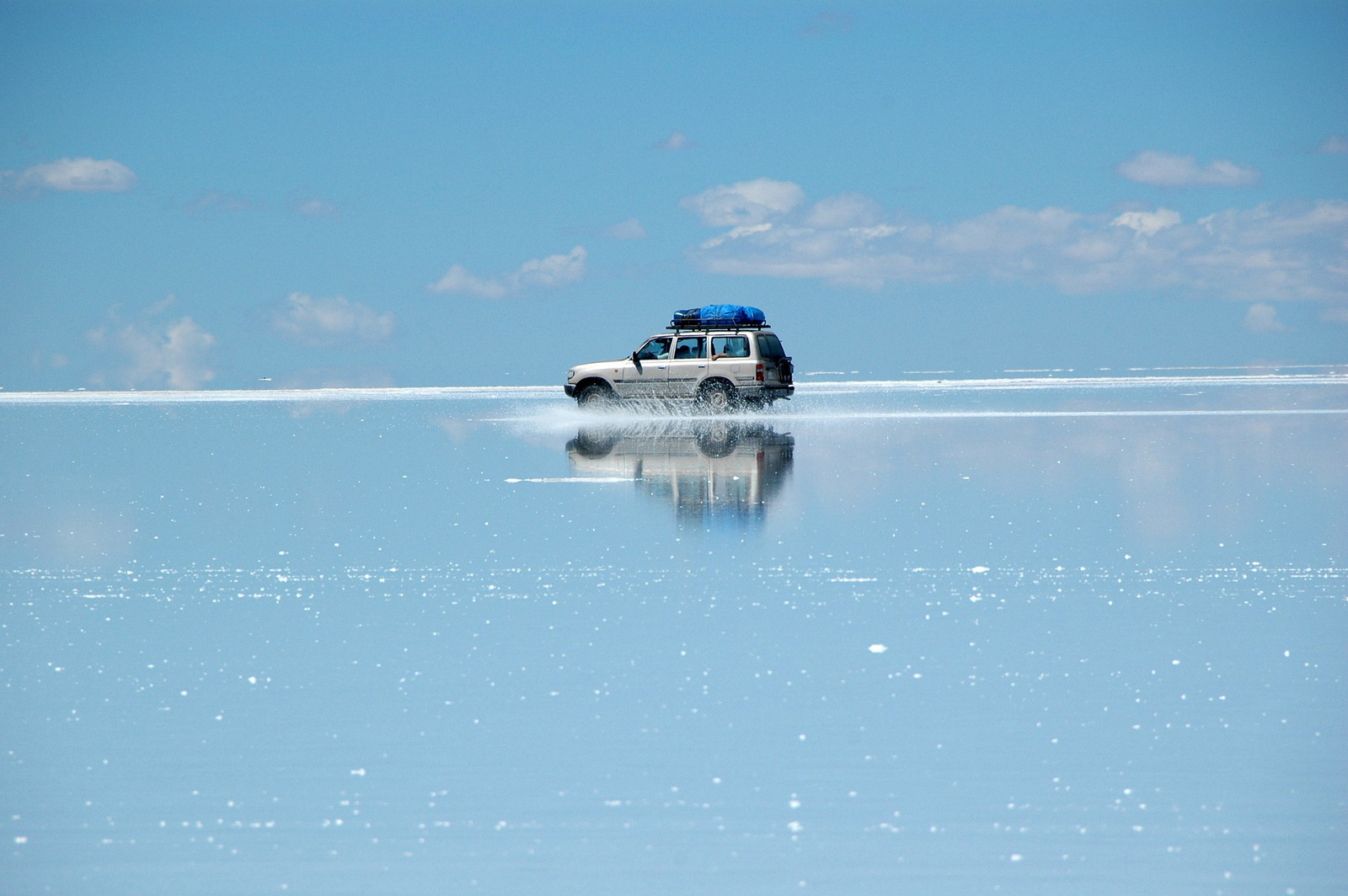
Do you need an English Speaking Guide?
The answer here is it depends. If you speak fairly fluent Spanish then you can definitely forego an English guide. If you do not speak Spanish at all then we recommend paying the extra money (it can be up to 500 Bs per person) and getting an English guide.
We like to understand our guide as they can provide a lot of background information on the area and there is the added advantage that if you pay extra for the English guide you will have only English speaking people in your car. When you are together for 3 or 4 days this was important to us.
That being said, if you want to save some money and you are on a tight budget, the Spanish-speaking guide is fine. You will be able to make out most of what he is saying anyways. It is important to note that if you opt for the English-speaking guide that there is usually one guide for every 2 or 3 cars from that tour company.
What altitude are you at in the Salar de Uyuni?
You are at altitude when you are in Uyuni, Bolivia. The town itself sits at more than 3500m or 12,000 feet and that is just where you start. During the tour, you will reach altitudes of up to 4800m or 15,000 feet at the Laguna Colorada, in the Eduardo Avaroa National Park. So be prepared.
We recommend spending at least one day in Uyuni before your tour to acclimatize to the altitude. Dring plenty of liquids and don’t exert too much effort physically. You will be out of breath a little on the first day but should get used to the lack of oxygen quickly.
Will it get cold?
The short answer is yes. Even though the weather during the day can be pleasant, you have to remember that you are at altitude so the nights can get quite cold. If you are someone who gets cold easily you might want to bring your own sleeping bag or ask to rent one from the tour operator.
Will I have phone or internet during the tour?
The fact is you will be in the middle of nowhere so there will be little to no internet or phone signal during the entire trip. It is a good time to relax and disconnect from the world and enjoy the nature that is all around you. If you are in desperate need of internet or a phone there is a place on the second day that offers paid internet access.
Cash or Credit Card? Which is Best?
Cash is king when you are on your trip to the salt flats in Bolivia. There are some ATMs in Uyuni but we suggest having local currency on hand before you arrive just in case. Make sure that you have local currency as that is required especially if you want to visit the following:
- National Park Entrance Fee: 150 Bs ($22 USD) per person
- Fish Island: 30 Bs ($5 USD)
- Hot Springs: 6 Bs ($1 USD)
What should I pack?
Packing for the salt flats is really dependent on where you are going to finish your tour. If you are carrying on to The Atacama Desert in Chile you will bring your full backpack. We do suggest putting the everyday items in a day pack so they are easily accessible as your pack will be on the top of the 4X4 each day.
If you are starting and ending in Uyuni then it is possible to leave some items in the hotel so you don’t have to bring everything. That being said, the shifts in temperature can be quite drastic so you want o to be prepared. Here is a list of things you should pack for your tour of the Salt Flats in Bolivia:
- Sunscreen with high SPF, sunglasses , hat and lip balm are a must.
- Layers of warm clothes. Temperature fluctates drastically between day and night.
- Hiking boots (Older ones if you are visiting during the wet season)
- Travel towel for the first night shower and the hot springs.
- Gold Bond: To keep yourself fresh.
- Camera and extra batteries fully charged.
- Water bottle and water. Even if it is provided it is good to have extra.
- Cash in local currency.
- Swimsuit if you pan on going in the hot springs.
- Flip flops or running shoes for at the hotel.
How Do you Describe the Salt Flats in Bolivia?
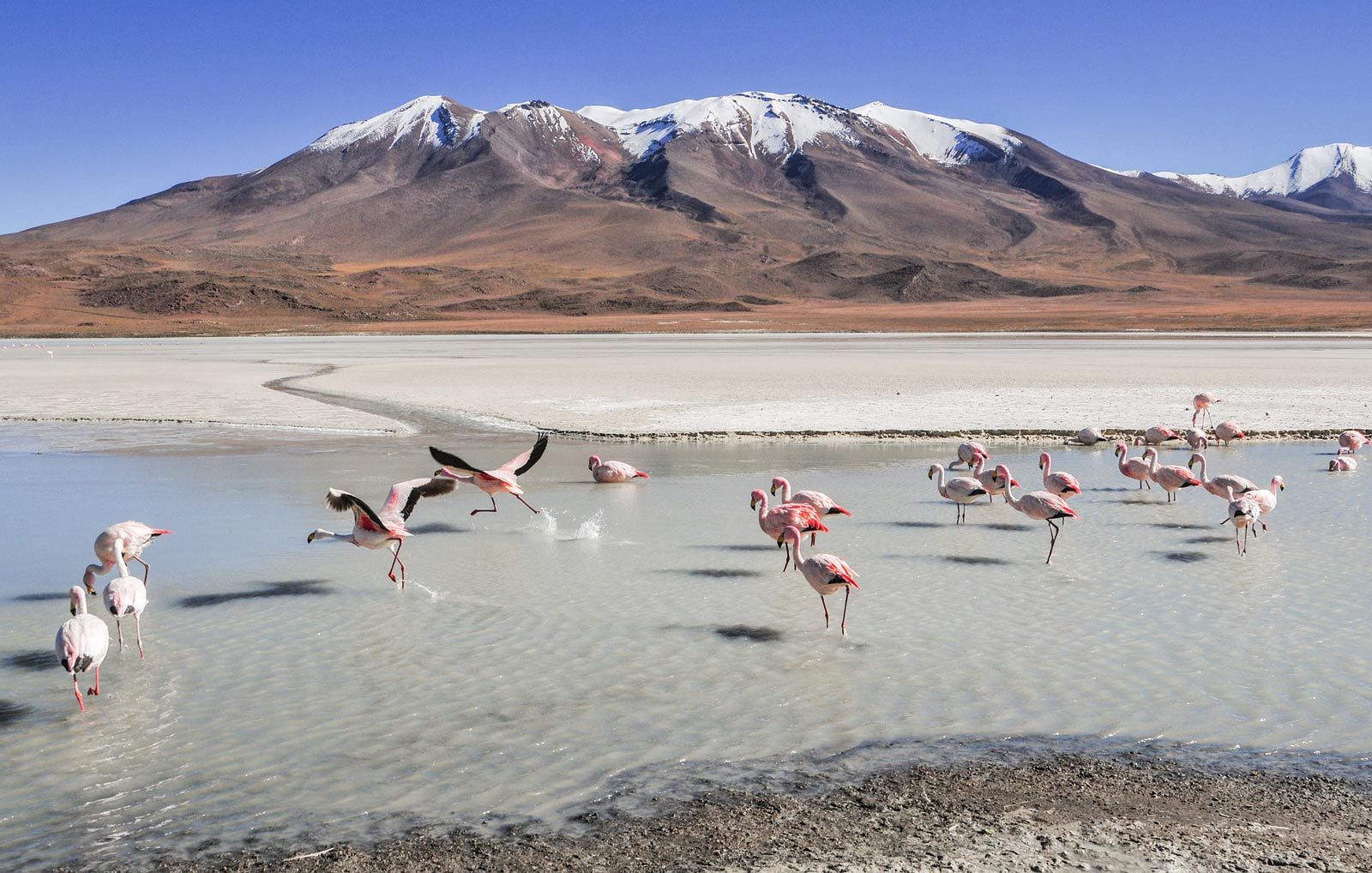
Salty, white, endless… these three words best describe the Salar de Uyuni. The sun burned from the sky and the reflections from the salt were so strong that it was impossible to open the eyes without sunglasses while looking over the massive salt desert. After a while, the awe can be a bit overwhelming. It’s as if nature is trying to beat you into submission with so many amazing things.
Most Salar de Uyuni tours can feel very start and stop, with the driver rendezvousing with other tourist jeeps at designated points for all-too-rapid photo opportunities. It’s a surreal sight, as the southwest roads of Bolivia appear entirely deserted but for the jeeps gathering in small groups to disgorge their tourist cargo.
Final Thoughts
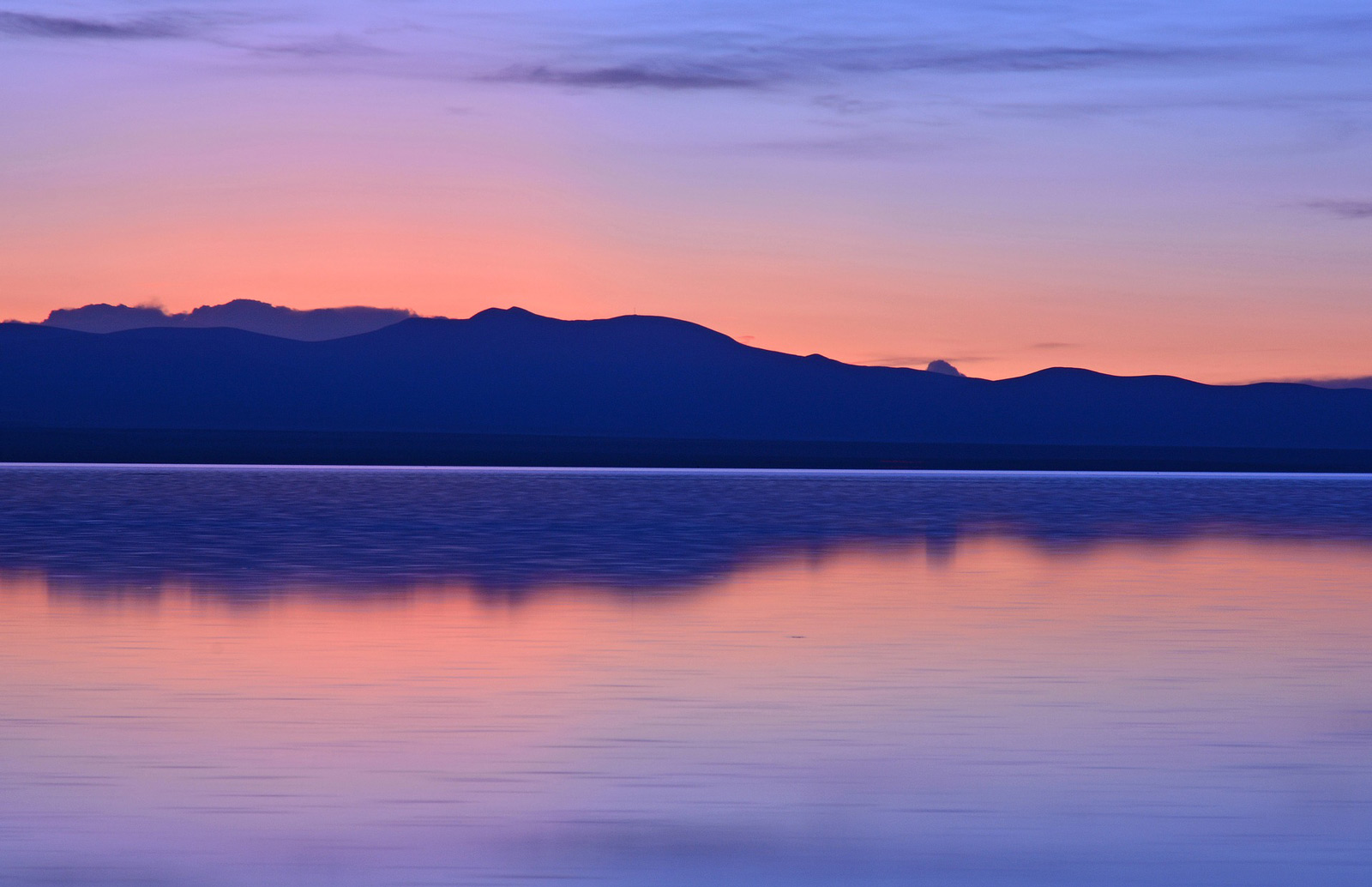
We drove across Bolivia’s scenic southwest corner, a staggeringly beautiful region bursting with mountains, lagoons, and inactive volcanoes. Equipped with many big containers of drinking water and thick sleeping bags our driver put the SUV into first gear and an amazing adventure through barren surroundings began.
It’s an experience that involves gorgeous vistas, extreme cold, and days without showering.
At the end of our 3-day trip, we were exhausted. Exhausted because of all the incredible things we had seen.
It started with an endless white salt flat, continued with moon-like sandy and dry landscapes of volcanoes and mountains, and ended with the most colorful lagoons we had ever seen. Every one of us needed some time to digest the past days.
There are many amazing places on our blue planet but the Salar de Uyuni and everything around it truly belongs to one of its most beautiful places! The Salar de Uyuni remains one of the world’s most fantastic locations–and since it’s in Bolivia, one of the most affordable, too.
Bolivia’s frontier feel means the trip sometimes seems akin to stepping out of the charted territory, onto a succession of different planets.
Sticking Around Bolivia
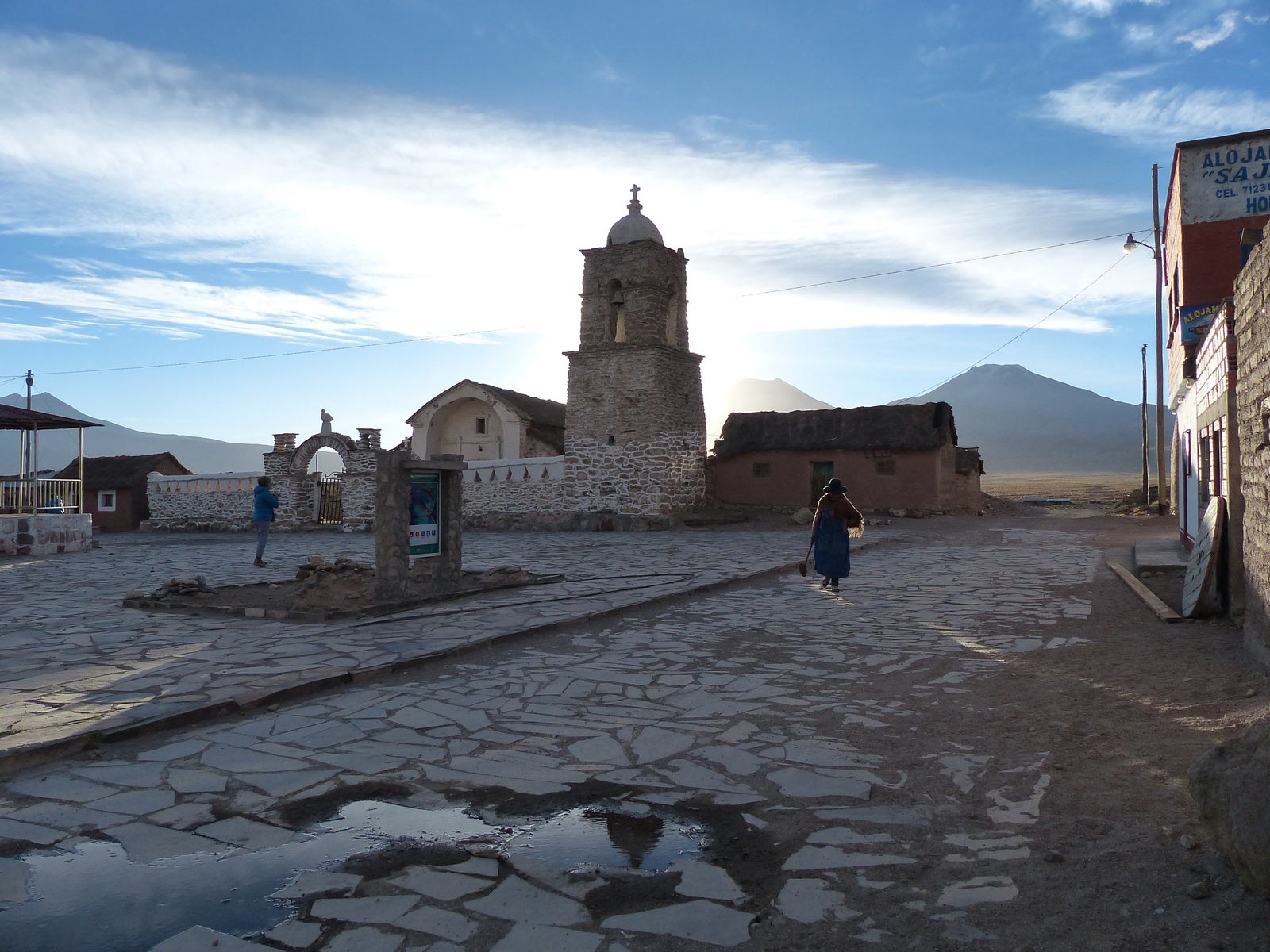
But while the Salar is undoubtedly a highlight, the rough remainder of Bolivia should not be ignored. From the grungy mining city of Potosi to the gothic streets of La Paz to the verdant j ungle reaches of the Amazon, Bolivia is filled with breathtaking and bizarre sights. Once you’ve seen the Salar (or even before), consider sticking around to take a few extra destinations in.
If you’re looking to venture along the edge of the world or race across some of nature’s most striking vistas, there is no better destination. So strap in, buckle up, and don’t forget to bring shades. There’s a white desert waiting, made of salt and blinding sunlight.
Have you been to the Bolivia Salt Flats? What do you think? Is Bolivia’s Andean Plateau one of the most beautiful places in the world?
This article was originally written by Liane and Lars of bobaroundtheworld.com who have since stopped blogging, but we have kept it on ThePlanetD as it is a destination that is worth visiting.
Plan Your Next Trip to south America with These Resources
- All You Need to know about the Top 10 Best Hikes in South America
10 Reasons You Should Travel To Bolivia
- Everything You Need to Know About Visiting the Bolivian Amazon
- 5 Things to do in Bolivia
- Chile Travel Guide
Travel Planning Resources
Looking to book your next trip? Why not use these resources that are tried and tested by yours truly.
Flights: Start planning your trip by finding the best flight deals on Skyscanner
Book your Hotel: Find the best prices on hotels with these two providers. If you are located in Europe use Booking.com and if you are anywhere else use TripAdvisor
Find Apartment Rentals: You will find the cheapest prices on apartment rentals with VRBO .
Travel Insurance: Don't leave home without it. Here is what we recommend:
- Allianz - Occasional Travelers.
- Medjet - Global air medical transport and travel security.
Need more help planning your trip? Make sure to check out our Resources Page where we highlight all the great companies that we trust when we are traveling.
You May Also Like
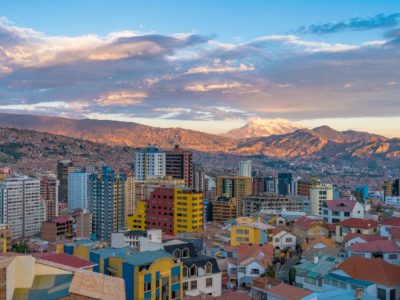
24 Fascinating Facts About Bolivia You Should Know In 2024
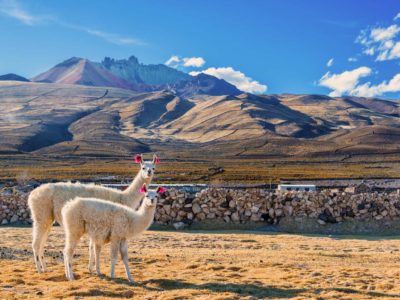
20 Best Things To Do In Bolivia In 2024
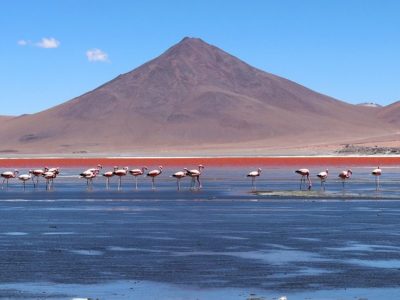
About The Planet D
Dave Bouskill and Debra Corbeil are the owners and founders of The Planet D. After traveling to 115 countries, on all 7 continents over the past 13 years they have become one of the foremost experts in travel. Being recognized as top travel bloggers and influencers by the likes of Forbes Magazine , the Society of American Travel Writers and USA Today has allowed them to become leaders in their field.
Join thousands of others who get our monthly updates!
Leave a comment cancel reply.
Save my name, email, and website in this browser for the next time I comment.
11 thoughts on “Salar de Uyuni – How to Visit The Bolivia Salt Flats”
Chile is a very nice place to visit.
This is relay amazing picture. i am from country of world hugest peak Mt Everest 8848 m and light of Asia. Nepal is on of the best destination for hiking and sightseeing, so traveler get lots of opportunity to take unlimited amazing capture during the adventure and the tour. where the incredible scenery attract to the traveler as well as photographer to explore them on unique feature. which may motive to the traveler.
What a great photo and article, this is really awesome!! thanks for sharing with us and keep posting such a great pics
Me from Everest Country Nepal, As a traveler all pics are so amazing and thanks for sharing such a great pics and articles. We have the big mountains like Everest 8848m. but we don’t have such awesome places.You are a really wonderful photographer.
wow, this are the most beautiful pictures, I rally love it, thanks for sharing
Incredible adventure. Hope that you have enjoyed a lot on this trip.
Appreciate for your great effort to share your travel experience.
Great Adventure. There is a quietness and bareness of these lands that makes you feel like you are at the end of the world. The flamingos in the salt/soda lakes are similar to what we have in Kenya and Tanzania lakes nakuru, bogoria and lake manyara. Awesome.
Wow, what an incredible place! I’ve seen tonnes of photos of the flats but never of the surrounding regions/sites/wonders. Great insight into somewhere I’d absolutely love to visit! Thank you.
Wow, incredible journey. It seems like you have enjoyed your trip. Awesome photographs. Your blog is very informative to all those travelers who pursue adventure. Appreciate it for sharing your travel experience.
Incredible pictures! you shared awesome place to visit and great detail.. Really want to go there, Thank you so much for sharing a nice experiences.. keep posting!
Awesome photos guys. What company did you go with and did you like going with them?
- Netherlands
- Travel Tips
Salar de Uyuni, Bolivia – Ultimate 3 Day Itinerary
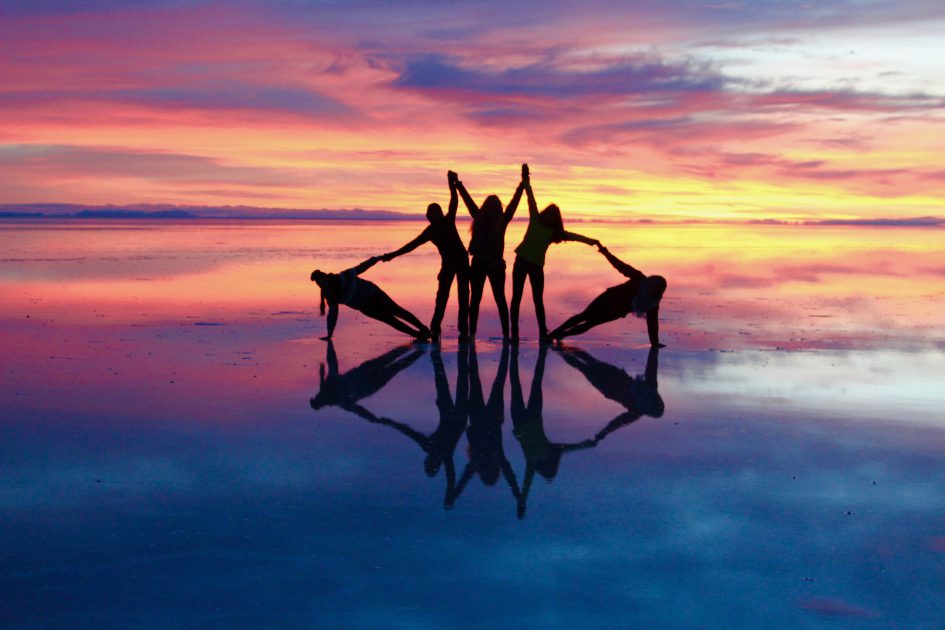
The Salar de Uyuni (engl.: Salt Flats of Uyuni) in Bolivia is the world’s largest salt flat and has a surface of 10,582 square kilometres. It’s located in southwest Bolivia at an elevation of 3,656 meters above sea level.
But what is a salt flat? A salt flat is basically an area of flat land covered with salt and other minerals. They form by evaporation of a lake or a pond.
When I was doing an exchange semester in Chile it had always been my dream to visit the Salar de Uyuni. Friends who had been there told me that it was the absolute must-see in South America . At the end of my stay in Chile I had finally managed to travel to Bolivia and I was more than excited for it!
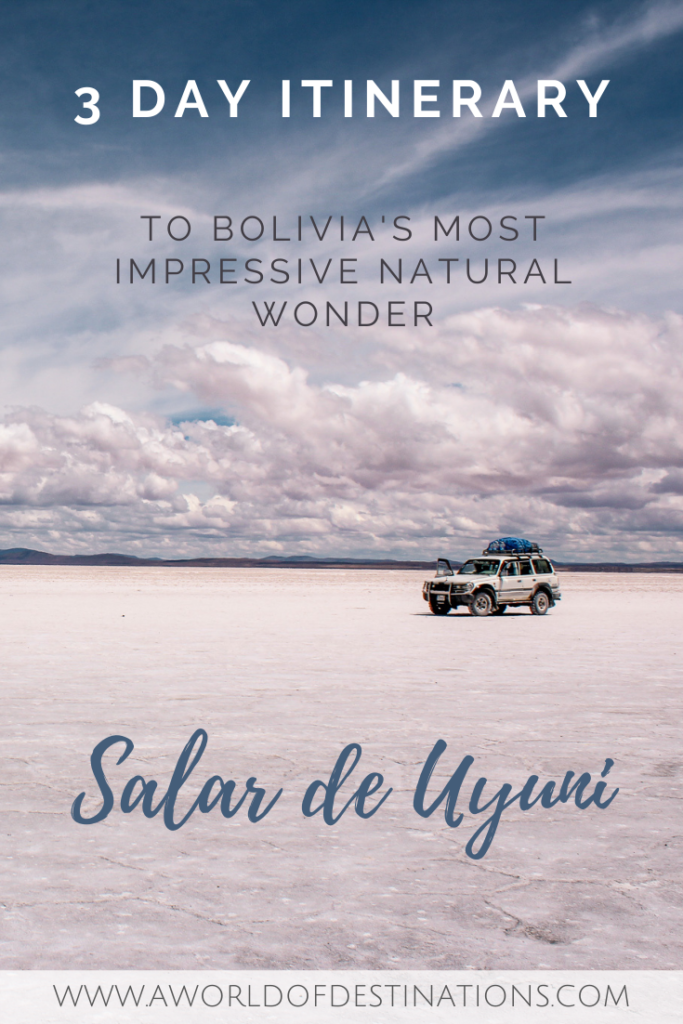
Table of Contents
Best time to visit the Salar de Uyuni
This depends on what you want to experience. If you want to see the mirror effect (which I highly recommend) you should go between December and April as this is the rainy season . For the optimal climate, however, the best time would be during dry season between July and October.
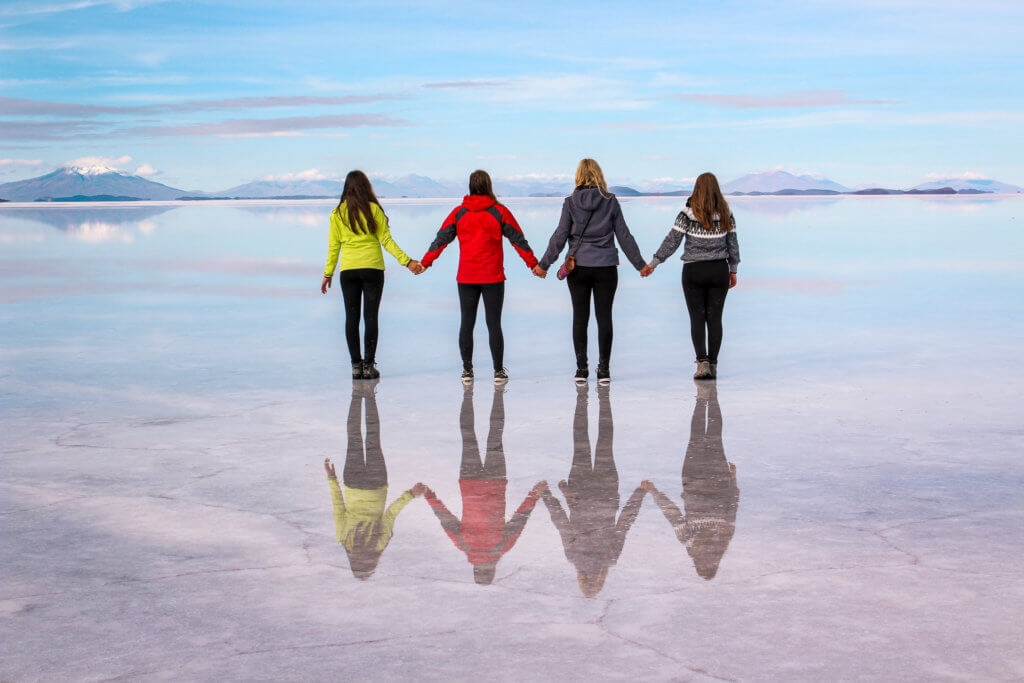
How to get to the Salar de Uyuni
Most tours to the salt flats originate from the small town Uyuni. Getting to Uyuni can be a bit of a hassle. These are the most popular options:
- From San Pedro de Atacama: 3-4 day tour in a 4×4
- From Ororo: 7-8 hours by train or bus
- From La Paz: 12-15 hours by bus or flying to the airport of Uyuni
- From Potosi: 6-7 hours by bus
How you get to Uyuni obviously depends on where you’re travelling before. However, if it fits your plan I highly recommend doing the 3-4 day tour from San Pedro de Atacama , Chile .
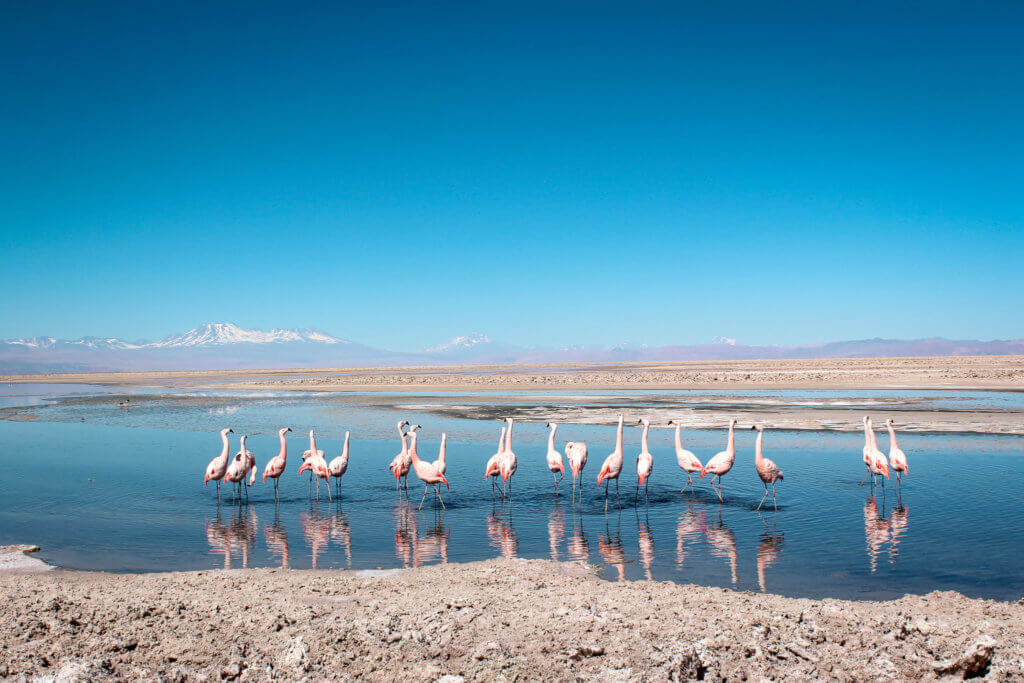
3 Days 2 Nights Tour
I decided to do the 3 day adventure and I was more than happy with my decision. If you’re a nature lover , this tour is a must and should be very high up on your bucket list. On the way to Uyuni you explore numerous impressive places making the way to get there an amazing journey. With this tour you have several options:
- Start and end in San Pedro de Atacama
- Start in San Pedro de Atacama, end in Uyuni
- Start in Uyuni, end in San Pedro de Atacama
- Start and end in Uyuni
No matter if you start the tour in San Pedro or in Uyuni, you’ll find many agencies offering the same itinerary. These tours are standardised but there are minor differences in meals and accommodations. Usually they consist of a group of 6 people plus the driver, who is also the guide.
Cost : 150 € Includes : Transportation, meals (breakfast, lunch, dinner), accommodation Does not include: Entrance fee to natural reserves (approx. 20 €), snacks
I was highly satisfied with the service on this tour. The transportation was safe, the guide was friendly and experienced and the meals were tasty.
Things to know before you go
- The guides only speak Spanish . It would be an advantage to understand basic Spanish or at least have one person in the group who speaks Spanish.
- If you want to have an English speaking guide you need to book a private tour . These are more expensive but they are customised to the wishes of the client.
- Ask your agency to watch either the SUNRISE or the SUNSET in the Salar de Uyuni. If they don’t offer it, book with a different agency. This is the absolute highlight of the tour.
- The price for the same tour will vary depending if you book it in Uyuni, Bolivia or in San Pedro de Atacama, Chile. As Bolivia is generally cheaper than Chile you pay around 100€ in Bolivia and around 150€ if you book the same tour in Chile.
- Bargain! The tour operators certainly give you a discount if you ask for it – even more if you’re a group.
- You won’t have phone signal or wifi for 3 days.
- There are no restaurants or shops . So think carefully about what to take with you. If you forget your toothbrush you won’t be able to brush your teeth for 3 days.
What to pack on a trip to the Salar de Uyuni
- Warm clothes – it gets really cold in the mornings and at night (in winter the temperatures can drop below 0).
- Light clothes – it can get really hot during the day. Layering is the key.
- Waterproof shoes or flip flops – You’ll walk through water in case the salt flats are covered in a layer of water.
- Sun screen, sun glasses & hat to protect you from the sun.
- Towel – the accommodations are very basic and don’t provide towels.
- External battery for your phone and camera: Power outlets in the accommodations are not always enough for everyone to charge all their devices. And you’ll take lots of photos, believe me.
- Props for creative photos – here’s an inspiration for creative photos on the slat flats.
- Lip balm & face cream – the strong winds dry out the skin and especially the lips.
- Snacks, water, toilet paper for 3 days – ask your tour operator if water is included or if you have to bring it.
- Cash in local currency (Boliviano) for the shower, toilets and maybe souvenirs.
Day 1 – Lagunas Altiplánicas
It was still dark outside when my alarm rang me out of my sleep at 6:30 am. A little later, a bus came to pick me up from my accommodation and the other tour participants were already on the bus as well. After a 30 minutes drive we stopped a bit outside of San Pedro de Atacama where our group had breakfast together and we got to know each other.

Half an hour later we started driving towards the Bolivian border. On the way we could enjoy the impressive desert views. Reddish and orangey mountains led the way and the landscape seemed like from a different planet.
We spotted some llamas on the side of the road and we asked our driver if we could stop to take some photos. Having stopped the bus on the side of the road, one of the llamas started crossing the road. It was fun to watch them as they seemed completely careless about what’s happening around them, as long as they could eat their food ( they reminded me a bit of me ).
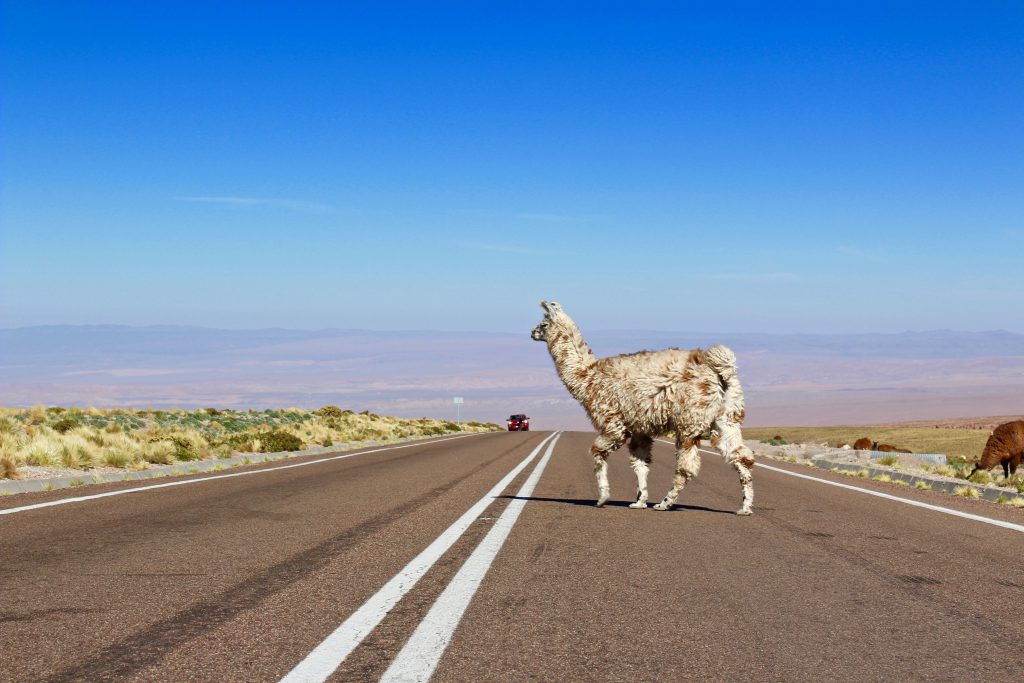
When we arrived to the Bolivian border we had to queue for around half an hour to get the stamp into our passport that allowed us to enter the country.
After crossing the boarder our Bolivian tour guide picked us up in a jeep. He welcomed us with a big smile and explained that we’d spend the next three days together.
The busses that bring tourists to the border are not allowed to cross it, which is why we got a new guide who drove us from then on.

From this point on, the adventure was going to start. We drove on bumpy dirt roads through the desert until we stopped next to a lake with crystal clear water: Laguna Blanca (engl.: White Lake). The lake reflected the surrounding mountains and the sky. We were left in awe admiring the landscape of this magical place. It was completely calm and there were no other people.
I love places where you feel like you connect to nature , even more when there’s nothing man-made around for miles – and this was one of those places.
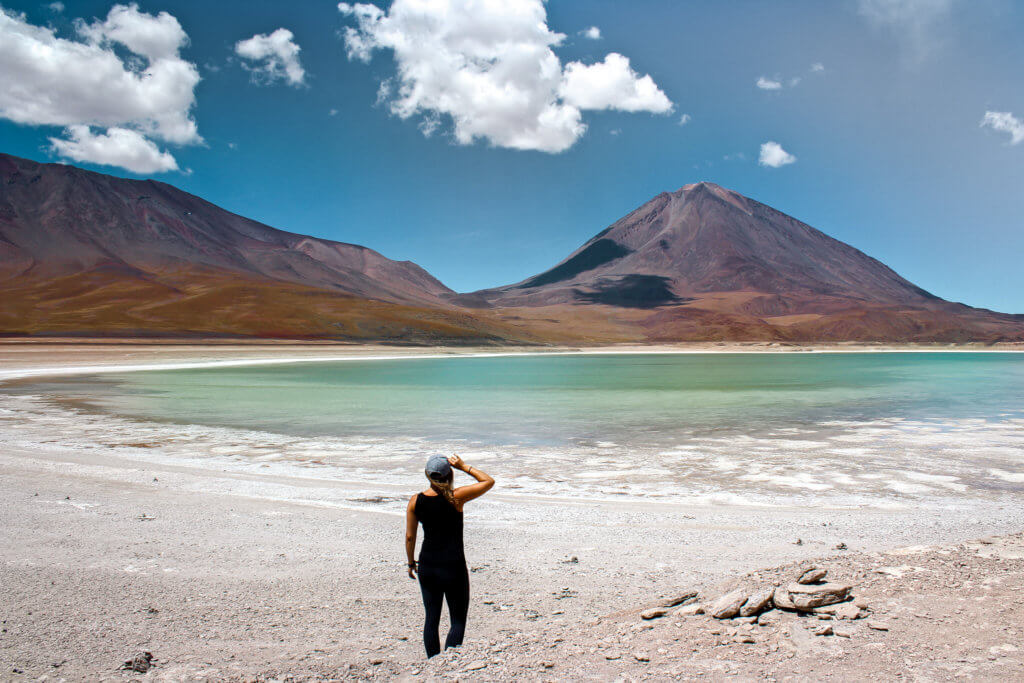
After a 10 minutes stop to take in the beauty of nature and shoot some photos we continued the journey to another stunning lake: Laguna Verde (engl.: Green Lake). The lake is surrounded by white pebble stones and lies on the foot of the volcano Licancabur, which you can see on the photo. While the wind was blowing fast and the air was fresh due to the altitude, the sun was strong enough to make it feel warm.

We continued driving and suddenly our driver stopped on the side of the road to hop out of the jeep and check the tires. It turned out that we had a flat tire . This got us all a little worried at the beginning – after all we were in the middle of nowhere without cell reception. But our driver told us not to worry and he fixed it within a few minutes.
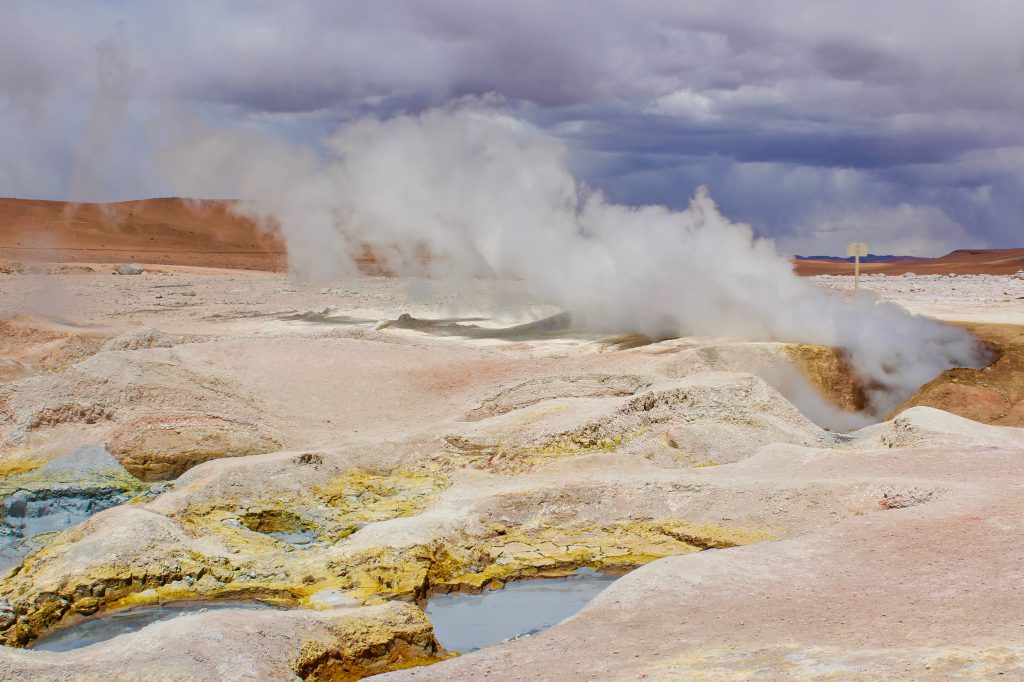
Our next stop was the geyser Sol de Mañana . This area is characterised by intense volcanic activity and the grey mud of the geysers was boiling. Yet another landscape that was not from this world.
We walked around for a bit to explore the area but our guide immediately warned us to watch our steps carefully – if we’d fall into one of the craters we’d die. Given his warning we took a step back and watched the show of smoke and bubbles from a distance.
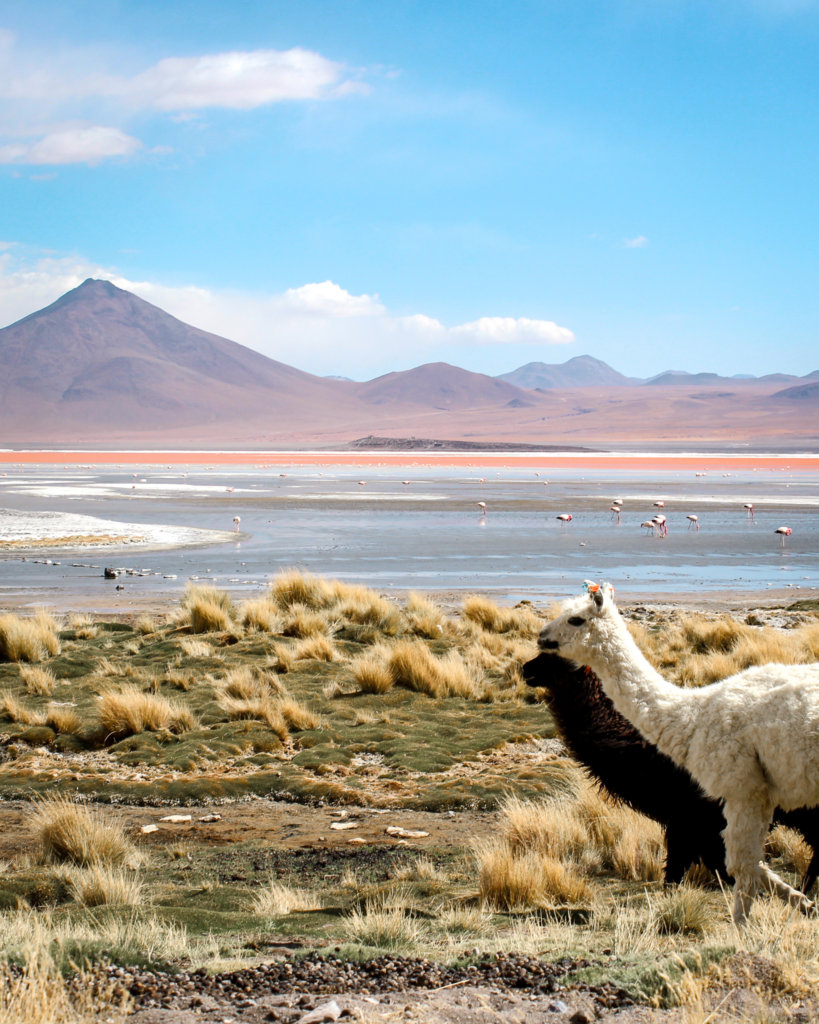
Then we visited the colourful salt lake Laguna Colorada . Besides a completely surreal looking lake we also encountered flamingos and wild llamas roaming freely around. It was extremely windy and it felt like the wind would blow me away anytime. The view was stunning though. A lake that is pink, white, yellow and blue with flamingos, llamas and surrounded by mountains – am I dreaming or is this real ?

The geysers Sol de Mañana and Laguna Colorada are both located at an altitude of of 4.800 m above sea level . Walking and even talking would make me feel exhausted immediately. At such a high altitude it’s important to do everything at a low pace . As our brain has less oxygen supply we feel dizzy and exhausted easily.
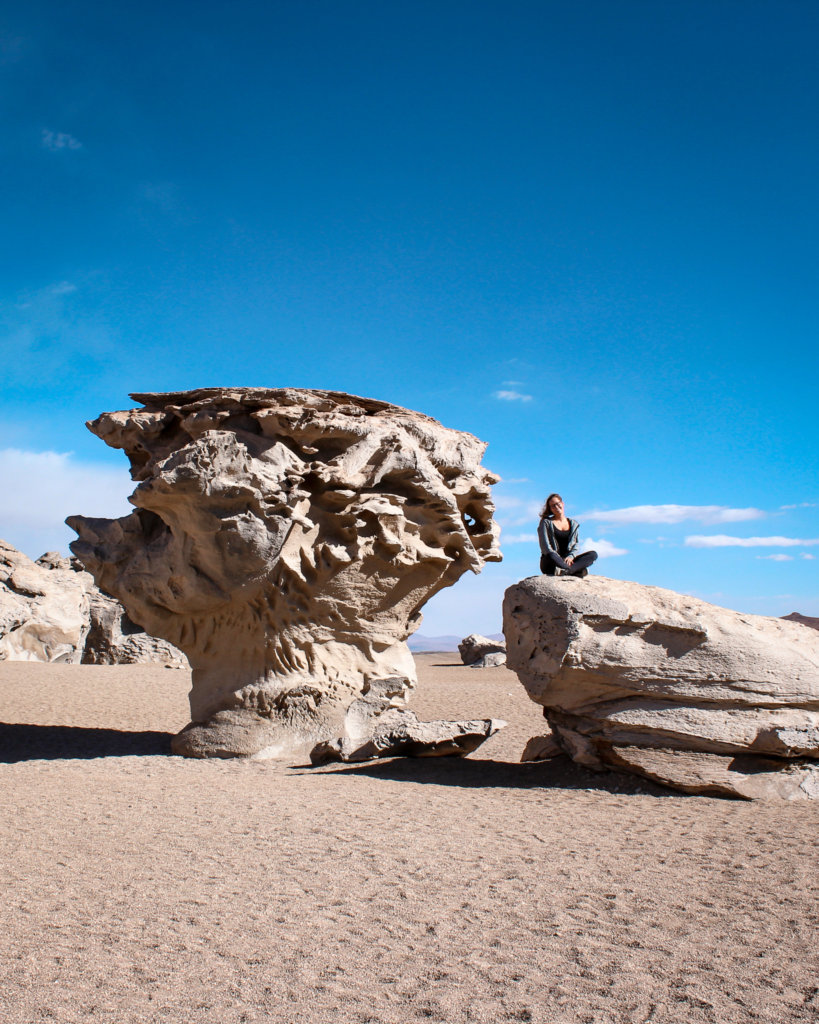
Before heading to our accommodation of the night we made a last stop at the Arbol de Piedra (engl.: stone tree). This is a 7 m high rock formation which has its structure due to strong winds blowing sand onto it.
For the first night we stayed with a Bolivian family in Villa Mar (4.000 m above sea level) in rather basic housing. We stayed in a dorm room for 6 persons – so our whole group stayed in a room together.
Even tough I was extremely tired I had problems sleeping. Being at 4.000 m above sea level is not something I was used to. Altitude sickness is a common problem at such high altitudes. This can cause dizziness, headache, stomach sickness or even palpitation or panic attacks.
I was lucky not to feel worse considering the stories I had heard from fellow travellers. Some even said that this was the worst night of their lives as they felt like they couldn’t breath anymore due to the lack of oxygen. Being in a desert with no cell phone reception, hours away from civilisation doesn’t make this better.
But I don’t want to scare anyone – most of the people are doing fine. And if it affects you it’s usually just a bit of dizziness or a headache.
Day 2 – Rock Formations and Salt Hotel
After a few hours of sleeping we got up early in the morning to have breakfast – pancakes and coffee or tea – and hopped on the jeep to continue our journey.

Our first stop of the day was a place with huge rocks in the middle of the desert. We asked our guide if we could climb one of them and he simply advised us to be careful. From the top we had a stunning view of the surrounding rocks and the mountains in the far distance.
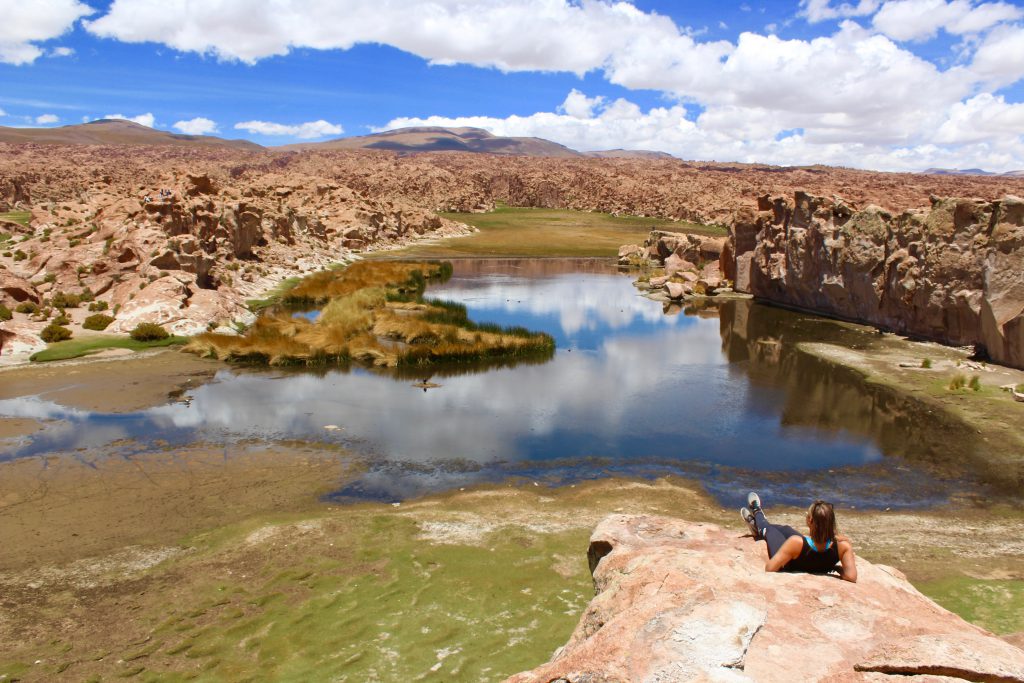
Then we drove to Laguna Negra (engl.: Black Lake). This lake is surrounded by weird-looking rock formations. In contrast to the scenery we had seen so far, the landscape around Laguna Negra featured green grass and flowers.
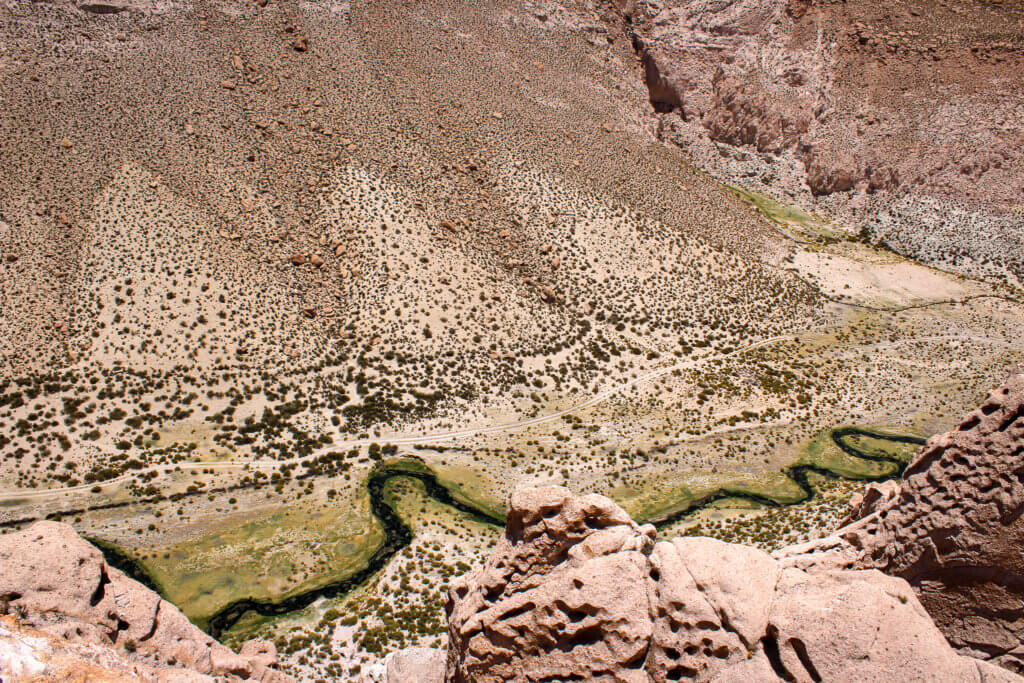
Another stunning natural wonder we visited was the Anaconda Canyon . It’s a huge canyon which has its name due to the shape of the river. Then we had lunch and made our way to the accommodation. By that point we were not far from the salt flats anymore.

In the afternoon we arrived to our accommodation for this night, a salt hotel . Never had I seen anything like this before. As the salt flats of Uyuni provide tons of salt, the people use it as material to build houses, tables, beds, chairs and so on. This hotel was built entirely out of salt and it’s not the only one. Around the salt flats there are numerous houses made of salt. It’s a great way of saving money for construction as the salt is not expensive.
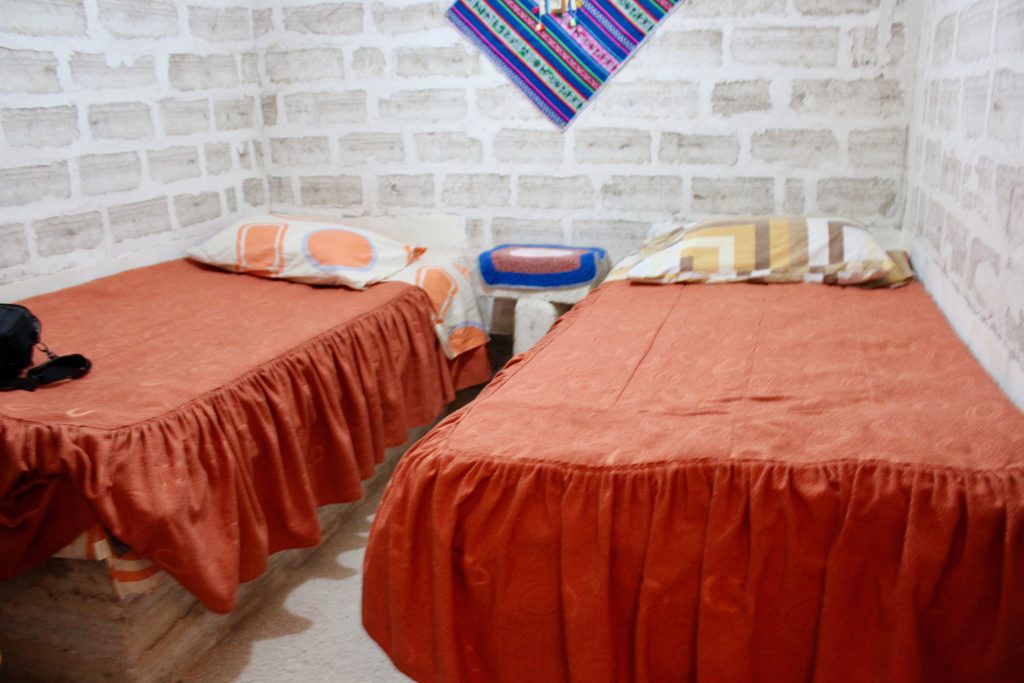
It was raining outside and our guide told us that we were extremely lucky . When it rains at night the surface of the salt flats is covered in a thin film of water the next morning. This would make them act like a mirror and show the reflection of the sky.
Day 3 – Salar de Uyuni
Finally, the day had come where we got to see the attraction why we all had booked this tour – the Salar de Uyuni . The alarm rang at 4:00 am and quite sleepy we started driving towards the salt flats for about one hour.
I was almost falling asleep in the car when I suddenly noticed an orange light at the horizon . As we kept driving the reddish-orange light got bigger and more beautiful. We stopped to get out of the car and I couldn’t believe my eyes. The sunrise in the Salar de Uyuni was the most impressive natural wonder I had ever seen.
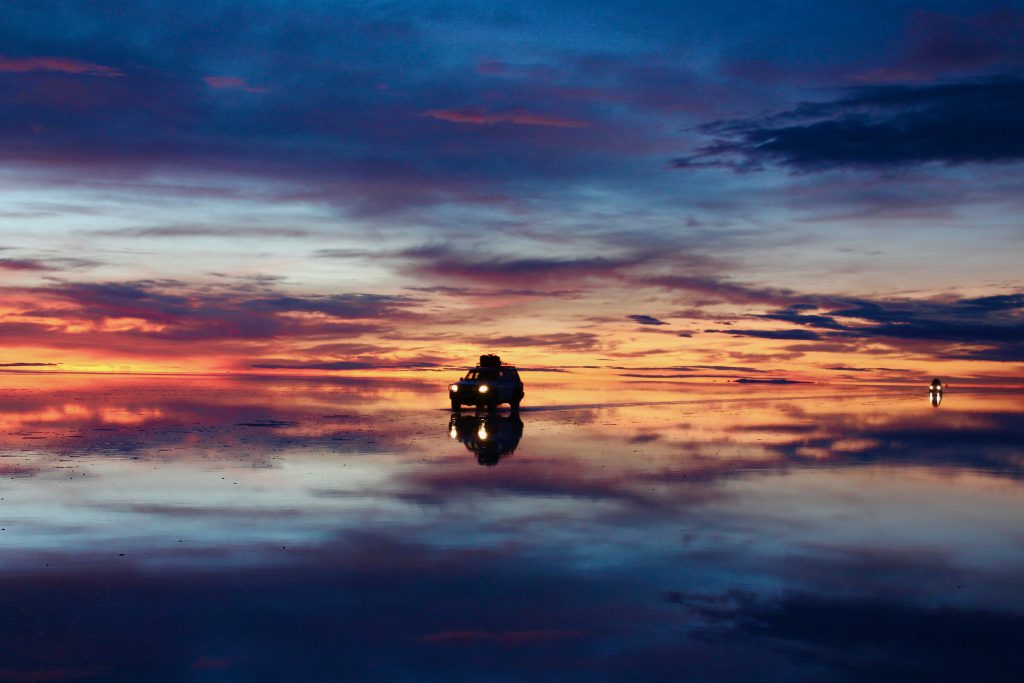
As it had rained the night before, the whole salt desert acted as a mirror and reflected the sunrise.
No, this is not photoshopped .
Standing in this seemingly endless mirror , surrounded by the colours of the sunrise in the middle of nowhere was so magical I can’t even put it into words.
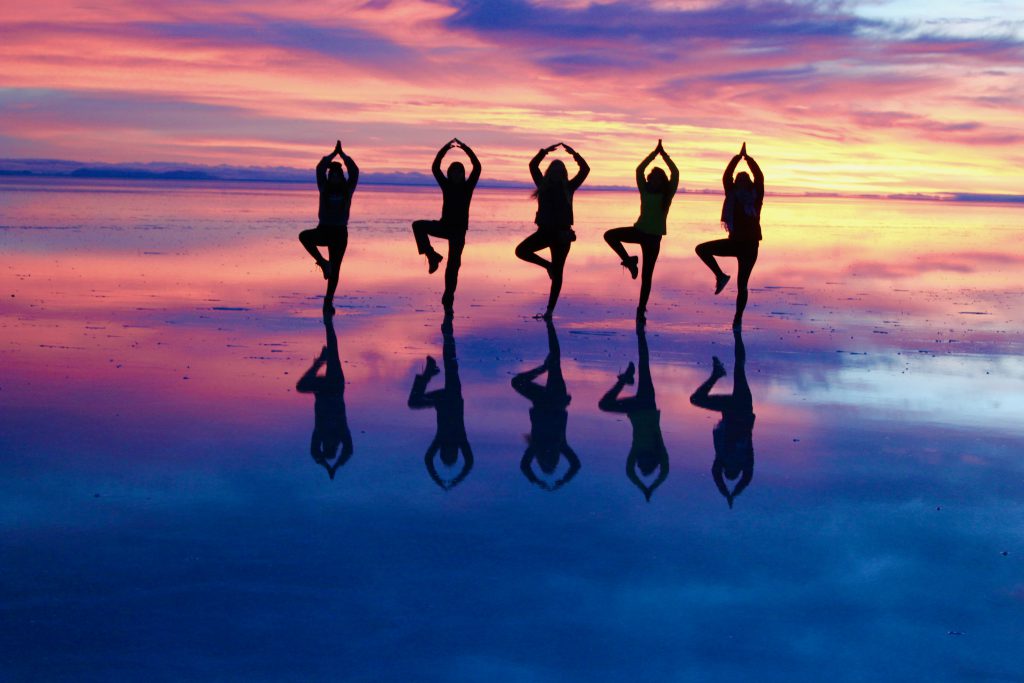
This explains why the Salar de Uyuni is sometimes described as “ the place where heaven meets earth “.
After watching the breathtaking sunrise we drove to a little “island” on the Salar de Uyuni called Isla Incahuasi . The island is little hill full of cactus. It felt like we were in a fantasy world because no-one of us had ever seen something like this before.
Imagine being surrounded by 2 m high cacti on an island in a salt desert that looks like an infinite mirror .
Can you imagine that? If not, don’t worry – it felt so surreal even for me. Even though I was right there. It was so otherworldly I couldn’t believe it.
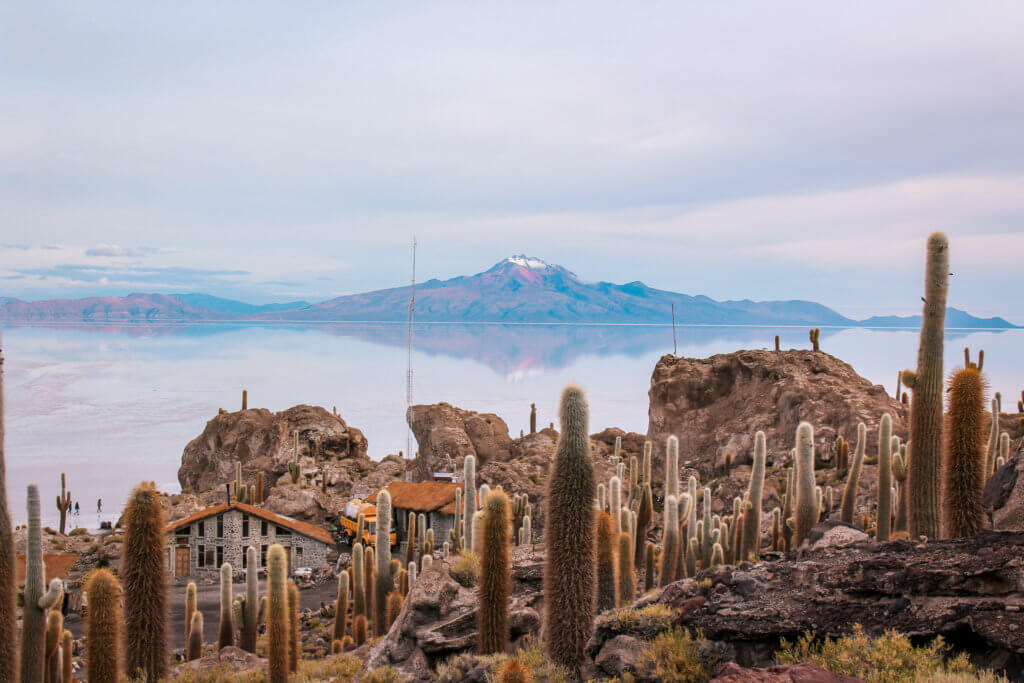
The photo above shows a bus driving though the salt desert. This picture once again portrays how huge the Salar de Uyuni is.
After exploring the island and enjoying the the seemingly infinite views we sat down on a chair made of salt and ate breakfast on a table made of salt.
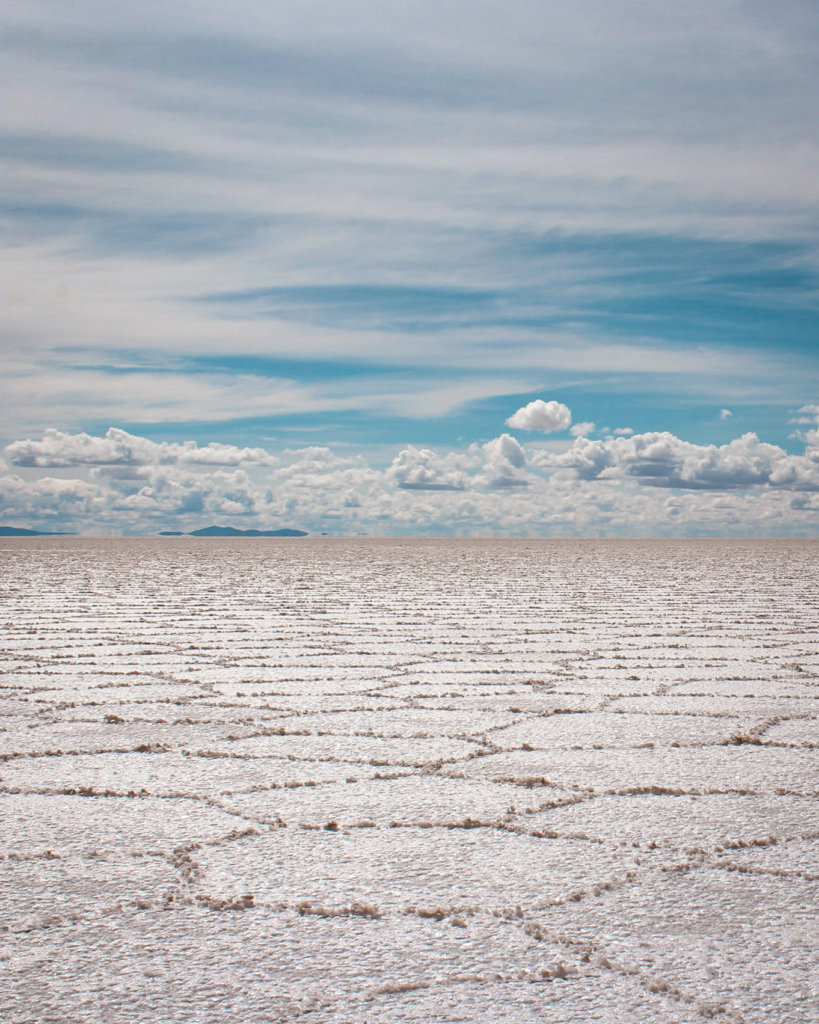
Then we drove to an area of the salt flats that wasn’t covered in water. That’s where travellers do the creative photography and play with the perspective of the photos. Our experienced guide had several photo ideas and helped us to get the right shot.

We left the salt flats and drove to the Cemetery of Trains . This was the end of our itinerary. Our guide then brought us to the village Uyuni where we had our last lunch. In Uyuni we had to wait a few hours for our transport back to the Chilean border. We were picked up by a mini van and brought back to San Pedro de Atacama, Chile.
So if you’re considering doing this 3 day tour to the Salar the Uyuni, the answer is YES, definitely!
I still can’t believe how epic this trip was and I highly recommend it to everyone. It was one of the best adventures of my life and certainly the most impressive natural wonder I had ever seen.
How to avoid altitude sickness
The issue with altitude sickness is that you don’t really know before if you’ll get it or not. Here are some tips to avoid it:
Adjust to the altitude
Before heading to your highest peak stay at a moderate elevation for a few days (e.g. San Pedro de Atacama, Uyuni, Cusco). This gives your body time to get used to the lower levels of oxygen before you go up higher.
Buy coca leaves
Coca leaves are legal in Chile, Peru and Bolivia and they are a traditional medicine against altitude sickness. You can either chew them or prepare tea. You should find them in any shop in touristic areas like San Pedro de Atacama, Uyuni or Cusco.
Drink water & avoid alcohol
In high altitudes it’s even more important to stay hydrated. Always bring a bottle of water with you and make sure to drink enough. Alcohol, however, has a negative effect on altitude sickness and can even worsen the symptoms. So stay away from your glass of wine or beer in high altitudes.
Sleep at a lower altitude
If you head to high altitudes during the day, try to spend the night at a lower elevation. The higher you are, the more likely you will get altitude sickness. Especially at night the symptoms of altitude sickness can get worse.
For the tour to the Salar the Uyuni it’s important to book the tour with a company where the accommodation is not higher than 4.000 m above sea level (e.g. Villa Mar). Some agencies work with accommodations that are elevated up to 4.800 m above sea level. So make sure to ask your agency where you spend the night.
Coffee is the fuel that keeps me running. I put a lot of time and effort into creating blog posts to make travel planning easier for you. If you benefited from my blog, I would appreciate a cup of coffee! 🙂
Buy Me a Coffee
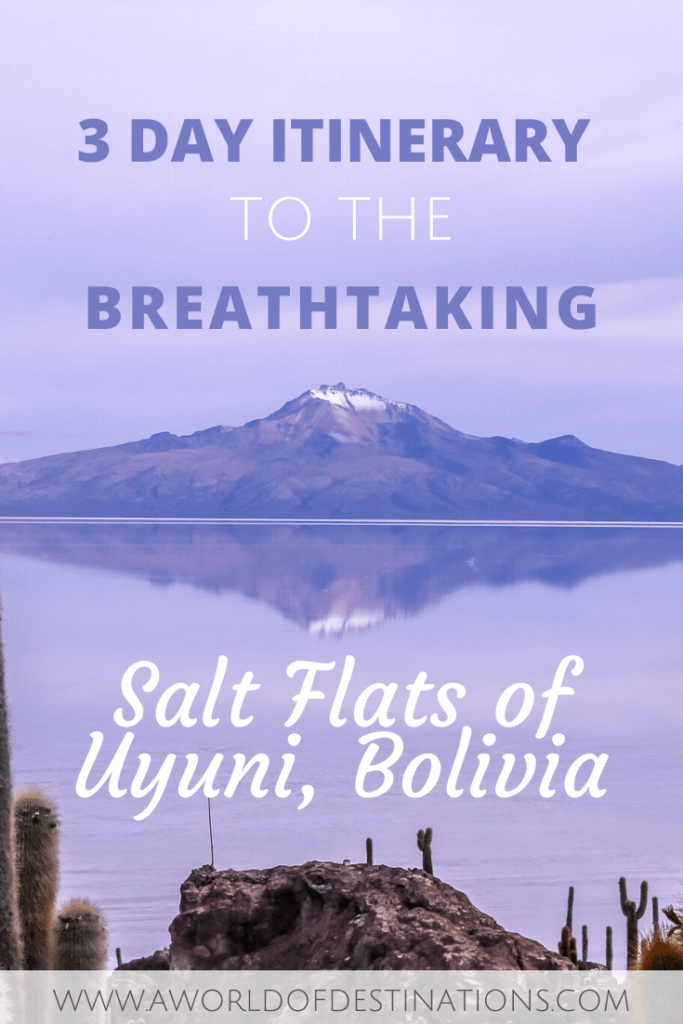
The Salar de Uyuni in Bolivia is the most otherworldly place I’ve ever seen in my life. It absolutely lived up to my high expectations and even exceeded them – so definitely include it in your trip if you have the chance!
- Tour to the Humantay Lake, Peru
- Trek to Rainbow Mountain Vinicunca, Peru
- 3 Day Guide to San Pedro de Atacama, Chile
Sharing is caring!
a world of destinations
April 5, 2020
Allgemein , Bolivia , South America
atacama , atacama desert , Bolivia , Chile , salar de uyuni , travel blog , uyuni , wanderlust
23 Comments
January 29, 2019 at 5:11 pm
Absolut fantastisch! Vor allem die Salar de Uyuni!! 🙂 Bin noch am Überlegen, ob ich Peru mit Bolivien als Reise kombiniere. Diese großartigen Bilder machen echt Lust darauf. Muss mich mal über Trekkingtouren von Peru bzw. La Paz informieren…
Liebe Grüße Iris von Ich Reise Immer So http://www.ichreiseimmerso.de
January 30, 2019 at 3:24 am
Ja das war wirklich unglaublich schön, sowas habe ich zuvor noch nie gesehen. 🙂 Ist bestimmt eine gute Idee die beiden Länder zu kombinieren wenn du dir länger Zeit nehmen kannst. Für den Salar de Uyuni würde ich dir empfehlen, dass du in der Regenzeit (Dezember-März) hinreist. Da ist dann die Wahrscheinlichkeit größer, dass Wasser auf der Oberfläche ist und du den Salar als Spiegel siehst.
April 6, 2020 at 4:43 am
WOW! You definitely sold me on going to Bolivia in the near future. This place looks incredible! Also, all of your photos are so beautiful. 🙂
April 6, 2020 at 5:55 pm
This is truly a magical place, I’m sure you’d love it. Thanks Taylor!
April 6, 2020 at 1:21 pm
This place is amazing! I had never heard of The Salar de Uyuni, but after reading your post I want to go there 🙂 Also, your pictures are perfect.
April 6, 2020 at 5:56 pm
Thank you Cristina! It was an unforgettable adventure 🙂
April 7, 2020 at 5:21 pm
I’ve seen so many pictures of this place already and I’m dying to go there! Beautiful photos 🙂
April 7, 2020 at 7:16 pm
It’s an unforgettable experience. I hope you get to go there!
October 17, 2020 at 8:26 am
I’ve been here also! Such am amazing place! This is a well informed guide too! 😀
October 17, 2020 at 1:22 pm
It really is an amazing place!
October 17, 2020 at 9:13 am
I saw Salar de Uyuni on a TV travel show recently and was wondering how I could make the journey there. Thankfully this post is very comprehensive and shows how do-able it is. Thanks for sharing.
Thanks Hazel, I hope it will help you to plan a future trip!
October 23, 2020 at 11:12 am
I’m glad you find my blog post helpful!
October 17, 2020 at 3:13 pm
So many happy memories seeing your photos. The 3 days trip I took a few years ago just blew me away! Although I was there in April we didn’t have any water on the salt flats so no reflections. A shame as your photos look amazing! Very thorough post – thanks for sharing.
November 12, 2020 at 11:51 am
I feel the same Sue, this trip was one of the most amazing experiences of my life!!
October 17, 2020 at 7:03 pm
These salt flats look insanely beautiful and omg your sunset photos are out of this world! I hope I will be able to visit this place in person one day too, looks so unreal!
October 23, 2020 at 11:01 am
I totally agree! Hope you get the chance to visit!
October 17, 2020 at 7:30 pm
You’re right – it’s an absolute MUST SEE in South America. One of my most unforgettable trips to date 🙂 thank you for sharing this awesome article!
Absolutely! You’re welcome, I’m glad you like it!
January 2, 2022 at 9:16 pm
I am planning a trip here in the summer. I was wondering what tour operator you used for this tour as it looks good.
January 3, 2022 at 2:34 am
I booked the tour with Janaj Pacha, but I’m not sure if they are still a decent agency. I did my trip 5 years ago and it seems like this tour agency has gotten some bad reviews lately.
June 17, 2022 at 4:46 am
Trip looks stunning. Your photos are spectacular. Thanks for sharing.
June 20, 2022 at 7:18 pm
Thank you, happy to hear that!
- Ultimate Guide to things to do in LA PAZ Bolivia - Moyer Memoirs
Leave a Reply Cancel reply
Your email address will not be published. Required fields are marked *
This site uses Akismet to reduce spam. Learn how your comment data is processed .

Hi! I’m Maria, an outdoor-active traveler who seeks to go off the beaten track to discover hidden gems. Most of the time you’ll find me exploring small beach towns or untouched places in the mountains to connect with nature. My goal is to inspire others to go out of their comfort zone and explore this beautiful planet. During the creation of this blog, uncountable cups of coffee were consumed. If my blog is an inspiration for you in any way, I would appreciate your support by buying me a cup of coffee. Happy traveling!
Privacy Policy
© 2024 a world of destinations — Powered by WordPress
Theme by Anders Noren — Up ↑
Itineraries
Full day tours, uyuni salt flat, biking and sunset, uyuni salt flat full day tour, uyuni salt flat and stargazing, 2 days 1 night tours, uyuni salt flat and the thunupa volcano, the uyuni salt flat and minor lagoons, 3 days 2 nights tours, san pedro de atacama - uyuni expedition, uyuni -calama, uyuni - lagoons - la paz, by plane, salar de uyuni and eduardo avaroa national park tour, uyuni - san pedro de atacama, 4 days 3 nights tours, tupiza - lagoons - uyuni, villazon - lagoons - uyuni, san pedro de atacama - lagoons - uyuni - san pedro de atacama, 5 days 4 nights tours, salt flat and volcanoes - thunupa, uruputuncu, uturuncu, licancabur, san pedro de atacama - uyuni - lagoons - sucre - volcan maragua, 7 days 6 nights tours, san pedro de atacama - lagoons - uyuni - la paz - tiwanaku - puno, puno - sun island - la paz - uyuni - lagunas - san pedro de atacama.

Tour details
- What to bring
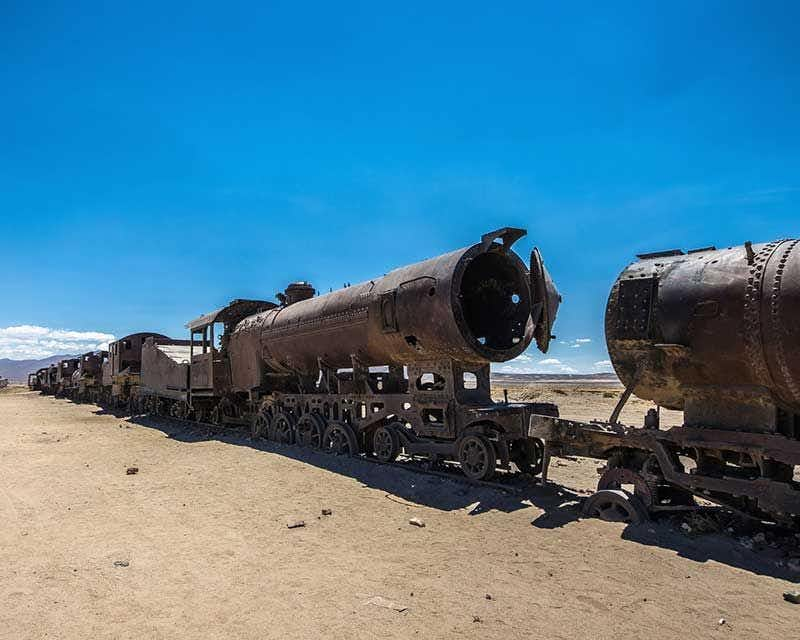
2 Day Uyuni Tour
Group tour to the Uyuni Salt Flat for 2 days with accommodation in Uyuni
Get to know the Salar de Uyuni staying in Uyuni
With the 2-Day Uyuni Tour, you will visit the largest salt desert in the world with an expert driver in the area. You will visit the Train Cemetery, the town of Colchani, the Incahuasi Island or the altiplanic lagoons among other attractions and you will get lost in a magical sunset in the Salar de Uyuni. You will spend the night in an accommodation in the city of Uyuni and the next day you will visit the cultural part of the tour.
Enjoy a 2-day guided tour in 4x4, and cross the Salar de Uyuni in the safest way. Do you want to know all the details of this adventure? Below we tell you how your trip will be 🙂:
- Transportation 4X4 (Toyota Land Cruiser or Nissan Armada)
- Expert driver in the area
- Lodging in Uyuni (shared or private room)
Not included
- Entrance fee to Incahuasi Island (30 Bolivian pesos per person)
- Entrance fee to museum (10 Bolivian pesos)
- Entrance fee to hot springs (10 Bolivian pesos)
Important information
This tour includes accommodation in the city of Uyuni. In case you want to stay in the Salar de Uyuni, we recommend you to book the 3-day tour .
It is very important to make a good acclimatization to the altitude before starting the tour, as the tour goes through high altitude areas.
🌧️Durante the rainy season (December to March) the itinerary may be modified, as the salt flat is flooded and some areas such as Incahuasi Island or some accommodations may not be accessible. The flooded areas are constantly changing, so depending on the situation at that time the driver will offer the best alternative to enjoy the tour.
🚗 The tour is conducted in 7-seater 4x4 vehicles.
Cancellation policy
Free cancellation! If you cancel at least 48 hours before the tour starts, you will receive 100% of the amount paid. After this time, or in case of no-show, no refunds will be given.
Tour itinerary
Day 1 uyuni - train cemetery - colchani - incahuasi island - sunset on the uyuni salt flat - return to uyuni.
Lodging in private or shared room in the city of Uyuni
Meeting point
The 2 days and 1 night tour to the Salar de Uyuni will start in the center of Uyuni at 10 am. With the whole group assembled, you will depart in the 7-seater 4x4 to the first stop: the train cemetery of the Salar de Uyuni.
Train cemetery
A landscape formed by the remains of what was once a symbol of Bolivian development. Remember that a maximum of 6 passengers plus the driver will travel in the 4x4. If you prefer, you can also select the private tour mode and enjoy this adventure without sharing the vehicle with other travelers.
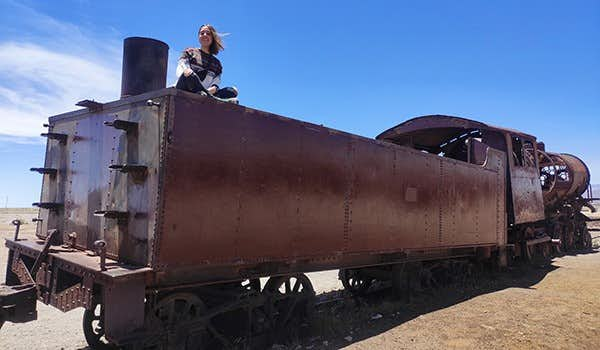
Colchani - Salt refinery
You will continue the trip to the next stop: Colchani. A small Andean village where you will observe the manual process of salt in its refinery and visit the salt museum. Take advantage of this stop and discover the local handicrafts in the small stores run by the local villagers.
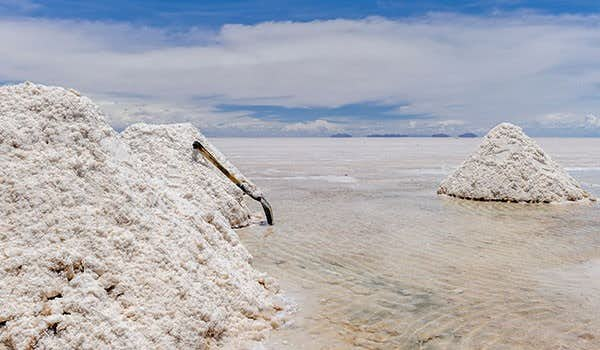
Ojos del Salar
Just a few meters away from the Colchani salt refinery you will see the piles of salt that are formed. And you will also see the well-known Ojos del Salar just a few meters away from you, small water eruptions that spring up under the salt flat. Did you know that these eyes have healing properties? If, like us, you are curious, don't hesitate to ask your guide all the questions during the trip, he knows all the answers!
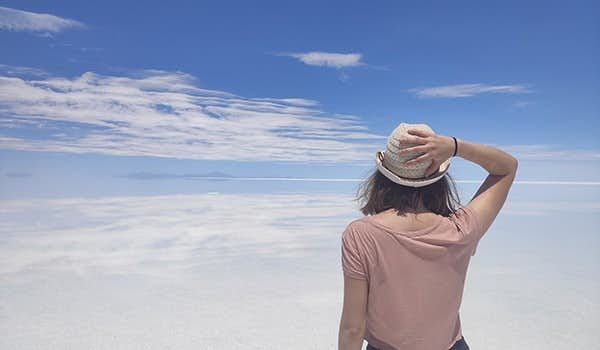
Dakar Monument - Island of the Flags
The last stops inside the salt flat will be to visit the Dakar sculpture and the famous Isla de las Banderas.
Incahuasi Island
You will advance through the Salar until you reach Incahuasi Island. Access to Incahuasi Island costs 30 Bolivian pesos for foreign travelers and 15 Bolivian pesos for national travelers.
Incahuasi Island is the heart of the Salar, where giant cactus will be waiting to surprise you even more of the magic of this place. Also, as it is the highest point of the Salar de Uyuni, you will have the best perspective to appreciate the immensity of the Salar. In order not to miss a single detail, you will take a short walk of about 30-40 minutes in the company of your guide. After this short walk, you will return to the vehicle and head to our next destination. It's time for lunch!
Remember to carry some cash with you during the trip, as the entrance fee to Incahuasi Island is not included in the tour.
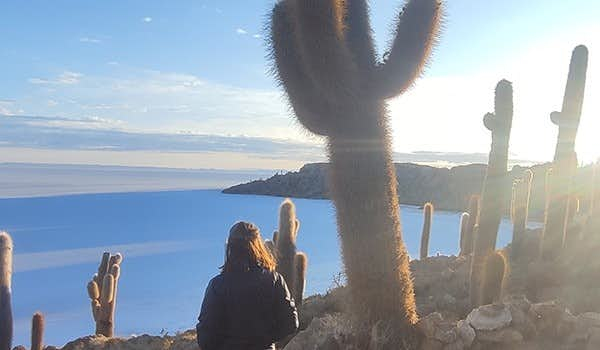
Lunch at the Uyuni Salt Flat
After the visit to Incahuasi Island, you will leave for lunch with the rest of the group in the middle of the Salar de Uyuni. The guide will prepare the table and chairs and cook for us to enjoy the meal with one of the best possible views of the Salar de Uyuni.
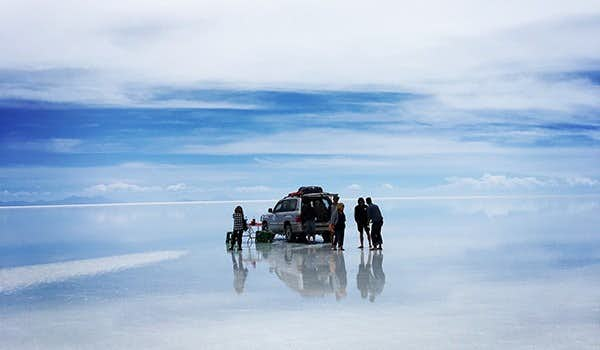
Sunset at the Uyuni Salt Flat
After lunch, you will continue touring the Salar de Uyuni. The best moment is about to arrive, had you forgotten, today you will see the sunset in the Salar de Uyuni!
Return to Uyuni
After admiring the magical sunset on the Uyuni Salt Flat, you will head back to the city of Uyuni, where you will spend the night.
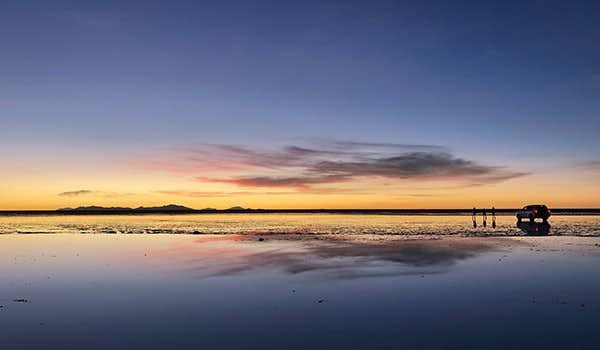
DAY 2 Uyuni - Pulacayo Village - Hot Springs - Tomave Church - Uyuni
Pulacayo Village
The day will start with a 9:30 a.m. pick up from your accommodation in Uyuni. You will head to the town of Pulacayo, home to a silver mining center that became the second largest in Bolivia.
Pulacayo locomotives
Next, you will visit the old steam locomotives that were the first to enter Bolivia at the end of the 19th century and transported the ore extracted by the Huanchaca mining company.
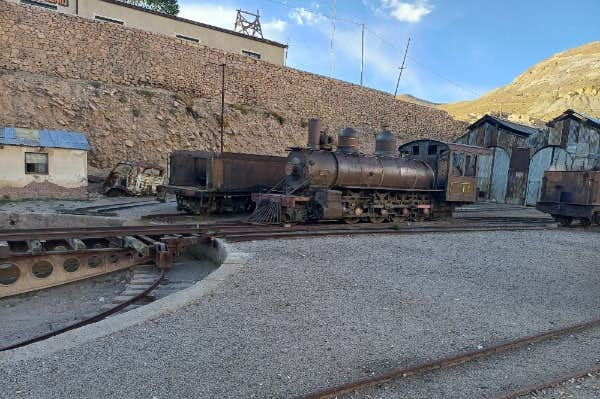
Hot Springs
After going through a winding road, you will arrive to a rustic place where the hot springs are located. Get ready for a relaxing bath in its mineral waters! These are natural medicinal waters that reach up to 35 degrees of heat.
Warmi Lagoon - Green Lagoon
Later, you will visit the altiplanic lagoons Warmi and Verde where you will see authentic flora and fauna of the area and it will be time for lunch.
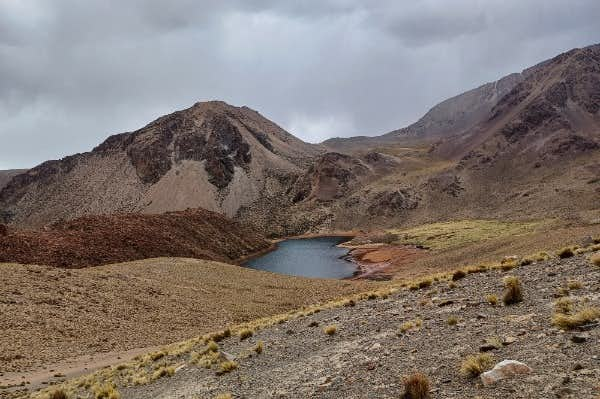
Colonial church of Tomave
The last stop of the tour will be a visit to the colonial church of Tomave, declared a heritage site. Later, you will return to the city of Uyuni to end the 2-day tour to the Salar de Uyuni.
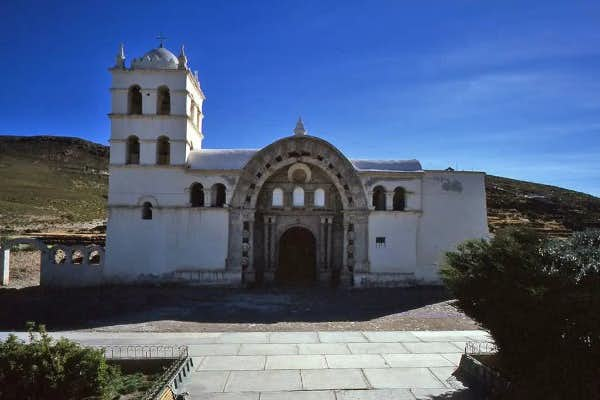
What to bring to 2 Day Uyuni Tour
Warm clothing
Waterproof jacket
Comfortable shoes
Sunscreen and lipstick
Cash and bolivianos
Bathing suit
Where does the tour 2 Day Uyuni Tour start
If you are planning to arrive from La Paz you can fly directly to Uyuni. If you plan to travel to Uyuni by land you should take a bus. We recommend taking the night bus which departs from La Paz at 8 p.m. with the company Bus Titicaca or Bus Cisne. Upon arrival, you will have time for breakfast before starting the tour.
*If you arrive in Uyuni on the same day as the tour starts, we offer you a free transfer from the bus station or airport to Uyuni. If you arrive in Uyuni before the day the tour starts, your pickup point will be your accommodation in Uyuni.
Questions & Answers
Can i do this tour as a private tour, just for my group, 2 day uyuni tour tour reviews with howlanders, other tours that might interest you from bolivia.
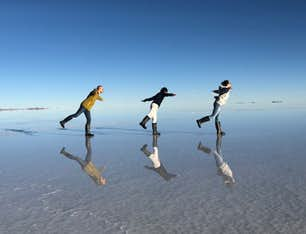
Uyuni Salt Flats Tour 1 Day
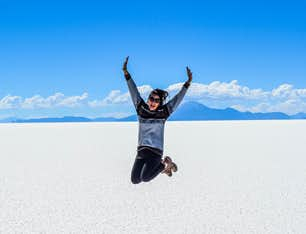
Uyuni Salt Flats Tour
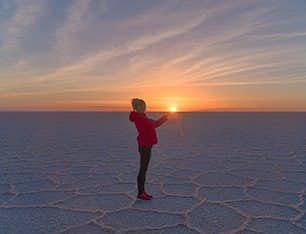
Uyuni Salt Flats Sunrise Tour
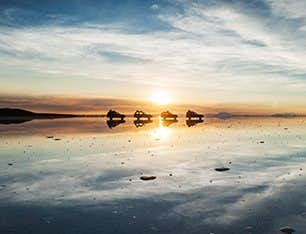
Uyuni Sunset Tour
Other travelers also booked.
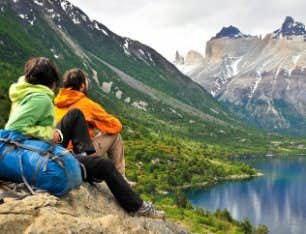
W trek circuit in Torres del Paine (short version)
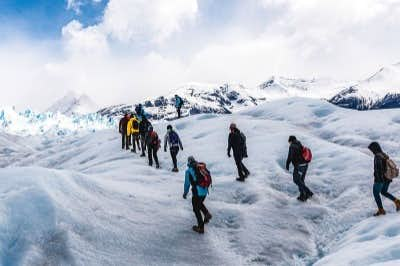
Minitrekking Perito Moreno
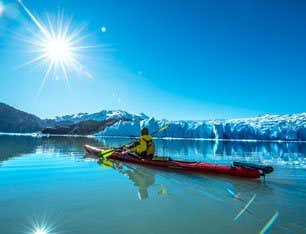
Glacier Grey Kayak
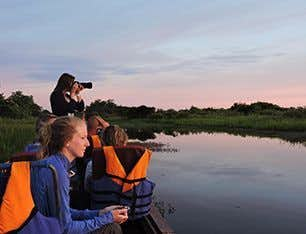
Rurrenabaque Bolivia Amazon Tour
Travel By Carla Vianna
Travel and Adventure Inspiration
Salar de Uyuni Tour From San Pedro de Atacama
April 14, 2019 · In: Bolivia , Travel Guides
If you’ve come across the surreal photos taken on the endless white horizon that is Bolivia’s Salar de Uyuni , then the Uyuni Salt Flat is probably on your bucket list.
That’s how it appeared on mine.
Salar de Uyuni is the world’s largest salt flat, 11,000 square kilometers of glistening white salt. The otherworldly landscape is like nothing I’ve ever seen before; a colorless horizon that appears to have no ending or beginning.

I knew I couldn’t I miss this destination while backpacking through South America . In January 2018, I embarked on a three-day Salar de Uyuni tour from San Pedro de Atacama in Chile, and it was one of the most unforgettable travel experiences I’ve ever had.
Below, find my comprehensive guide to the Salar de Uyuni in Bolivia based on my own experience, including how to get there, the best time to go and what to bring. This is everything you can expect from the Salar de Uyuni tour from San Pedro de Atacama.
| READ MORE: The Ultimate Guide to Backpacking in South America
How To Get To Salar de Uyuni
The Uyuni Salt Flat sits near the Bolivian city of Uyuni, from which several agencies offer one- to three-day tours. My boyfriend Guil and I knew from the get-go that we wanted to do a three-day tour to experience more of Bolivia’s countryside in addition of the salt flat.
These tours typically leave from Uyuni or Tupiza in Bolivia, as well as San Pedro de Atacama in northern Chile. Our original plan was to hop on a tour in Uyuni, but a canceled flight changed our travel plans and we ended up in Chile instead.
We began our journey in San Pedro de Atacama.
Starting The Salar de Uyuni Tour From San Pedro de Atacama, Chile
Several agencies offer the same tour across all three cities, so it’s not difficult to find one that fits your schedule. There’s really no need to book it ahead of time; you can book the tour after shopping around for the best agency once you’ve arrived at your starting point.
I actually ended up in San Pedro de Atacama “by accident” after a spur-of-the-moment change of plans, but I’m so glad I did. The small, sand-colored village sits in the middle of the Chilean desert, is teeming with adventure-seeking backpackers and has a real laidback vibe. San Pedro offers a number of outdoor activities that kept me busy before leaving on the salt flat tour, such as watching the sunrise from active geysers, visiting local mountain villages and hiking the area’s moon-like landscape.
The most popular tour offered in San Pedro de Atacama is the Uyuni Salt Falt tour. A variety of agencies offer the same tour, making it difficult to choose one. I thoroughly researched each tour company before settling on the one I felt most comfortable with. Considering we’d be spending the next three days completely off the grid in the middle of the Bolivian desert, I wanted to make sure we were in good hands.

Why Start in San Pedro de Atacama?
If you begin your tour in San Pedro like us, you’ll cross the Chile-Bolivia border with your tour group. I’ve heard this is one of the main reasons people choose to start their tour in Chile rather than Bolivia, as the border-crossing process is seamless and quite informal when you’re with the larger group. For us, there was an initial passport screening before we left San Pedro and an official crossing at the border 40 minutes later.
*Make sure to hold onto the immigration form you were given when you first entered Chile.
The other options are to start your tour from Uyuni or Tupiza. While I didn’t visited Tupiza, my tour did end in Uyuni, and the town is pretty rundown. I’d say it’s probably not worth much of your time, and I wouldn’t recommend spending more than a night there.
How To Choose The Best Salar de Uyuni Tour Operator?
I was extra careful when choosing a tour company because I had spent hours reading awful reviews online about drunk tour guides and starving passengers — which made the Salar de Uyuni tour sound more like a horror movie than a grand adventure.
Guil and I probably sat with about five different agencies in San Pedro, and they all basically told us the same thing. All companies offer similar itineraries, transportation and accommodation. The tour prices are also all about the same.

I did learn, however, that only Bolivian companies are certified to operate the tour. This means that if you booked a tour with a Chilean agency in San Pedro, that agency will hand you over to a third-party Bolivian company once you cross the border to Bolivia.
I wasn’t comfortable with this idea because I wanted to see and get to know the tour operator I would actually be traveling with.
Also, I learned that sometimes the miscommunication between the Chilean agency and their Bolivian partner can lead to chaos, like drivers simply not showing up and leaving passengers stranded. Because of this, I decided to book directly with a Bolivian company. (For those starting the tour in Bolivia, you obviously won’t run into this issue.)
After reading a few great Trip Advisor reviews about a particular driver named Christopher with White & Green International Travel , we decided to book with them. Guil and I realized that the quality of our driver would basically determine the quality of our tour, so we requested Christopher before sealing the deal.
I made sure to ask the company owner if he had ever had problems with drunk drivers, and he seemed to have answered honestly, saying he’s had to fire drivers in the past but never due to alcohol. That helped me feel more at ease.

How Much Does The Salar de Uyuni Tour Cost?
There were two tour options to choose from: A three-day trip that ended in Uyuni or a four-day tour that brought us back to San Pedro. I chose to end the tour in Uyuni so I could continue on to La Paz from there.
A three-day, two-night tour starting in San Pedro de Atacama and ending in Uyuni cost me 110,000 Chilean pesos, or $180, a bit less than the four-day option. I paid in cash to avoid the credit card fees that most companies were charging.
The tour price was actually 10,000 Chilean pesos above the average price at the time, but I was OK with that considering the positive reviews I had read about the company.
The tour operator did ask us to bring an extra 150 Bolivianos ($22) on the trip to cover entrance fees as well as any other supplies we may need along the way.
Best Time To Visit Salar de Uyuni
The best time to visit Salar de Uyuni depends on what kind of experience you’re looking for.
Bolivia’s rainy season runs from December to April, and that’s when you have the best chance of seeing the salt flat’s so-called “mirror effect.” The rain leaves a thin film of water across the salt flat, creating an awing mirror effect with the sky reflecting off the white ground.
I experienced everything from rain to sunshine to snow during the three-day trip. It was January, summer time in South America, yet one night I experienced sub-zero temperatures and even witnessed flurries of snow falling while driving through the mountains.

During the day, the climate was warm and sunny, with a thirst-inducing dry desert heat, but since the tour takes place at such high altitudes, cooler air rolled in at night. We were told it actually snows along the route during winter, so prepare accordingly.
While the salt flat was wet when we were there, we unfortunately did not witness the mirror effect.
What to Pack for the Uyuni Salt Flat
Here are a few wardrobe tips for the Uyuni Salt Flat tour: Dress in layers, wear hiking shoes or comfortable walking shoes that you don’t mind getting extremely dirty, and always have a rain jacket or wind breaker with you.

Your backpack will be strapped onto the top of the car all day, so bring whatever you need with you in the car. You’ll only be able to access your bag in the evenings when you arrive at the hostel.
I kept the following essentials in my day pack at all times:
- Roll of toilet paper
- Hand sanitizer
- Hand lotion
- Paracetamol/Tylenol for headaches brought on by altitude sickness
- Rain jacket
- Comfortable shoes
- Laptop (I wanted to have it near me at all times for safety reasons.)
- Extra water
Most companies recommend you bring 6 gallons of water each. Guil and I brought 6 gallons for the both of us and purchased more water on the last day of the tour.
Salar de Uyuni Altitude
The tour takes place at an altitude ranging from 3,500 to nearly 5,000 meters (11,400 to 16,400 feet). That’s pretty high for someone like me, who was used to living below sea level in Miami.

Guil and I spent a few days in San Pedro at 2,400 meters (7,900 feet) to allow our bodies to acclimatize to the higher altitude. We were advised to drink coca tea, eat small meals, avoid red meat and liquor, and drink plenty of water. I also took a few paracetamols during the tour to ward off bad headaches.
Overall, neither of us suffered any severe side effects from the altitude change, but I felt a lot more comfortable taking the precautions I did.
Salar de Uyuni Tour Itinerary
The itinerary of each Salar de Uyuni tour depends on your starting point. I began mine in San Pedro, and this is what my three days in the desert looked like.
I was picked up at my hostel at 7 a.m., and we were off to the Bolivian border. There we had breakfast, got our passports stamped and were transferred to the 4×4 vehicle we’d be spending the next few days in, with four other people. In total, there were seven of us, including the driver.
The first stop on our tour was the Laguna Blanca followed by the Laguna Verde ; two beautiful lagoons surrounded by mountains.

Then we stopped at the Salvador Dalí Desert , also known as Dalí Valley , where we had more time to take photos. The landscape here looked like a painting.
After that we drove to a thermal bath in the middle of the desert, at which point we encountered other tour groups for the first time. Everyone changed into their bathing suits to take a dip in the warm natural pools.
We had lunch at a restaurant on site; each tour group is responsible for its own food, meaning our driver either carries the food in our Jeep or buys it along the way, and then our meals are cooked by locals at the small villages we stop at.
After a plentiful lunch, we headed to the Geiser Sol de la Manana , an area marked by intense volcanic activity. Here we walked among craters bubbling with boiling-hot mud, a landscape that is said to be similar to Mars.

This was the highest altitude we reached on the tour, close to 5,000 meters or 16,400 feet. We then drove over to our final stop of the day, the Laguna Colorada , a pink-colored lagoon home to hundreds of flamingos.
That night our group slept in a shared room in a hostel located within a small, seemingly abandoned village.
We woke up bright and early to breakfast at the hostel before heading to the nearby Valley of the Rocks , where several rock formations mirrored real-life objects like a World Cup trophy, a camel and a city made of hardened magma.
Then we headed to the breathtakingly beautiful Laguna Negra ; take a look at it below.

After we drove to a viewpoint of a deep canyon that is said to be reminiscent of the Grand Canyon.
Next was lunch, this time in another small village located within a picturesque field home to dozens of grazing llamas. After lunch, we drove through a few more villages, learning about their culture and customs.
While we weren’t supposed to enter the salt flat until day three, our driver took us there to watch the sunset. That night we slept in a pretty shoddy hostel next to the salt flat. Normally, the second night would be spent in a salt hotel — a building made of pure salt from the salt flat — but due to heavy rain, the hotel was inaccessible.

Our wake-up call was at 4:30 a.m. on the third day, early enough to catch the sunrise from the middle of the Uyuni Salt Flat.
We spent the entire morning taking photos and simply hanging out at one of the most unique places on earth. Breakfast was served in a large domed building in the middle of the salar, and several other tour groups joined.
On this day, tour groups traditionally visit an island in the middle of the salt flat, but due to it being rainy season, we couldn’t access the island.
Hours of photos later, we returned to Uyuni for one last meal: llama and quinoa.
For me, the tour ended here. The rest of our group however would spend another night in the desert before returning to San Pedro de Atacama, as they opted for the four-day round-trip tour. But for Guil and I, it was time to head off to our next adventure in La Paz.

LIKE THIS POST? PIN IT FOR LATER!

You’ll Also Love

Leave a Reply Cancel reply
Your email address will not be published. Required fields are marked *
Notify me of follow-up comments by email.
Notify me of new posts by email.

How to Visit Machu Picchu on a Budget
Follow Along On Instagram

Let’s Work Together
- Collaborations
- Freelance Services
Top Posts & Pages
- 25 Must-Do Hikes in Upstate New York
- 2 Weeks In Bali: Magical Two-Week Itinerary For First-Timers
- The Best Thailand Backpacking Routes for 2 to 4 Weeks
- RTW Trip Planning
- Blogging Tips
- Disclosures & Privacy Policy
Copyright © 2024 Travel By Carla Vianna · Theme by 17th Avenue
- Tours >
- Destinations >
- South America Tours >
- Bolivia Tours >
- Uyuni Tours
Filter by Style
Filter by price.
Or select specific range
Filter by Duration
Or select range of days
Filter by Savings
- Cancel anytime
- Get a full refund
Travel anywhere when it’s right for you. The new flexible way to travel given today’s reality. Access independent adventures, group tours, and private trips from 20+ top tour operators. Redeem or cancel for a refund by 2023.
Filter by COVID Safety
Filter by flexibility, filter by traveler's age, filter by accommodation, filter by physical level, filter by theme, filter by cities & attractions, filter by activities, filter by trip pace, filter by price per day (per person), filter by flights & transport, filter by solo friendly, filter by brands, filter by countries, filter by continents & regions, filter by rivers & seas, filter by travelstride gives back, filter by dates.

JavaScript seems to be disabled in your browser. You must have JavaScript enabled in your browser to utilize the functionality of this website.
- Top Uyuni Tours
- Uyuni Attraction Guide
- Suggested Uyuni Itineraries
- Uyuni Landmarks
Top Uyuni Travel Companies
Uyuni in a week.

Highlights of Bolivia
Flights & transport:, itinerary focus:.
- Sit down for a sunset picnic on the stark and surreal salar de uyuni
- Visit the small community of coquesa and have lunch on incahuasi island in a remote patch of the bolivian desert
- Enjoy an interactive culinary experience in la paz featuring a fusion of traditional and modern cuisine
- Experience life at a traditional hacienda firsthand

Bolivia in 7 days - Sensational Cities & Salt Flats - Charm
- Salar de Uyuni
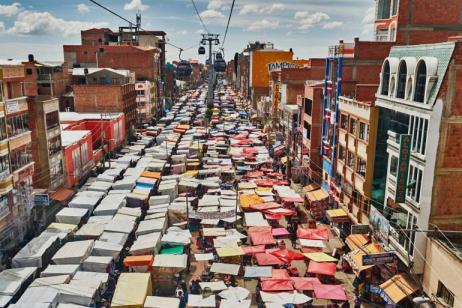
Bolivia in 7 days - Sensational Cities & Salt Flats - Superior
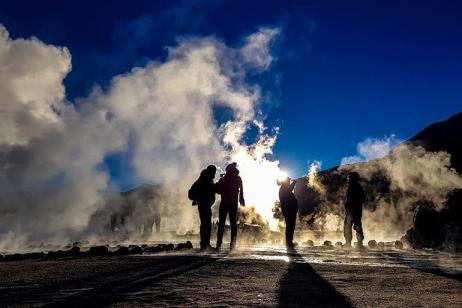
Atacama & Uyuni Salt Flats Adventure 7D/6N
- Discover the otherworldly Moon Valley in the desert
- Take creative pictures in the famous Salar de Uyuni
- Explore stunning volcanoes, lagoons & geysers
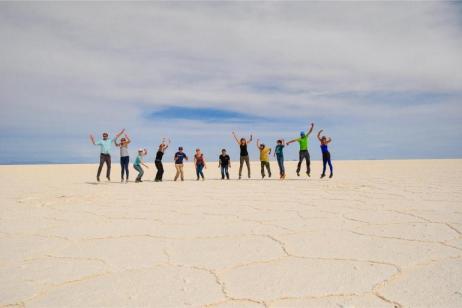
Bolivia Explorer 8D/7N
- Traverse the stunning Uyuni Salt Flats
- See La Paz from the eyes of a local
- Discover Lake Titicaca and Isla del Sol

Bolivia Explorer 9D/8N
Want a tailor-made trip instead.

Uyuni Salt Flats & Desert Adventure 5D/4N (La Paz to La Paz)
- See active volcanoes & relax in therapeutic hot springs
- Marvel at breathtaking red & green colored lakes
- Drive through the Bolivian Altiplano’s moon-like deserts
- Take wacky pictures in the famous Salar de Uyuni
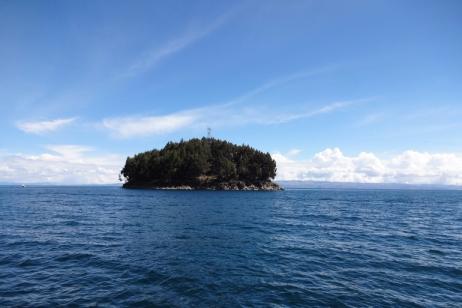
Lake Titicaca, La Paz & Uyuni Salt Flats
- Visit the Inca monuments of Pilkokaina
- Enjoy the beauty of nature in Ecolodge La Estancia
- Adore a great sunset Uyuni Salt Flats
- Have spectacular views of the lake and the Cordillera Real
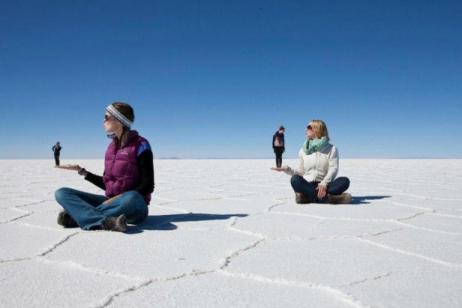
5-Day Uyuni Self-Guided Tour From Atacama to La Paz
Member savings.
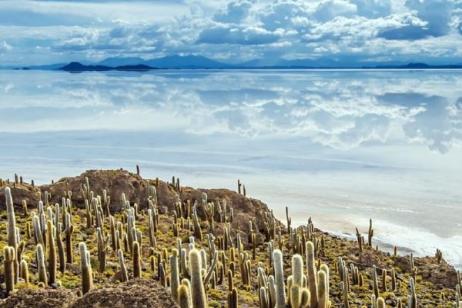
5-Day Tour of Bolivia Salt Flats: Mirror of the Sky**From La Paz**
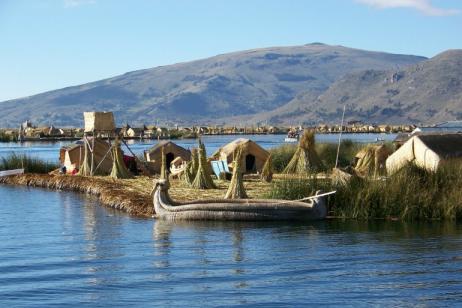
Titicaca Lake Experience & Uyuni Salt Flats
- Explore La Paz
- Visit Gold, Murillo and Costumbrista Museums
- Visit famous Virgen Morena
- Visit the Inca stairs and the Water of the Eternal Youth
- Discover more of the Salar de Uyuni
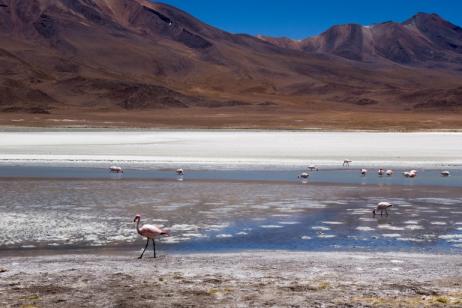
- An experience in Lake Titicaca, the worlds highest navigable lake.
- Uyuni Salt Flats in a luxury dome experience.
- Experience La Paz for all its rustic charm, its famous Witches markets, quaint street markets, Cocoa museum and infamous San Pedro prison, which is very much its own city.

Sucre, Potosi & The Uyuni Salt Flats
- Enjoy watching Uyuni Salt Flats, a nature wonder
- See Potosi, a UNESCO World Heritage site
- Visit historical monuments like the Liberty House, old monasteries, and temples.
- Visit silver production mine in Silver Mountain
Related Trips & Tours
Uyuni reviews & ratings, why travelstride, always find the best.
Find and compare Uyuni Tours from as short as 4 days to as long as 24 days. Travelstride searches over 1,000 websites and companies so you don't have to and found 70 Uyuni Tours offered by 28 travel companies. 1 people reviewed these Uyuni Tours.
In order to see Travelstride Select deals you must sign in. We’ve negotiated with many of the world’s best travel companies to save you money! Get the best experiences, save up to $700 per person, and be a hero to your travel companions!
We respect your privacy and take great care to protect your information. By joining you agree to our Privacy Policy and Terms of Use .
With FREE membership you:
- Save up to $700 per person!*
- Access private deals and offers
- See personalized trip recommendations
- Save favorite trips
Top Uyuni Attractions
Top activties in uyuni.
Click to send a new magic link to your inbox.
Welcome back!
By signing in, you agree to our Privacy Policy and Terms of Use
- Bookmark trips you like
- Share with your travel companions
- Track price changes
- Access private discounts on trips you save
TripFinder is a member-only feature. Dont worry, its free!
With a membership you:
Just use the email address and password provided in the email we sent.
With your free membership you:

Your travel guide dog
Searching thousands of trips by hundreds of tour companies...
Fetching your trip.
Just a moment, Rover is fetching your perfect trip.
4 day trip from tupiza to uyuni
Local Tour Operator with more than 18 years of experience
The best rated tour company from 2013 in TripAdvisor
Local guides and drivers with experiences in adventure trips
All our staff is vaccinated in order to offer you a safe trip
ROUTE OF YOUR EXPERIENCE
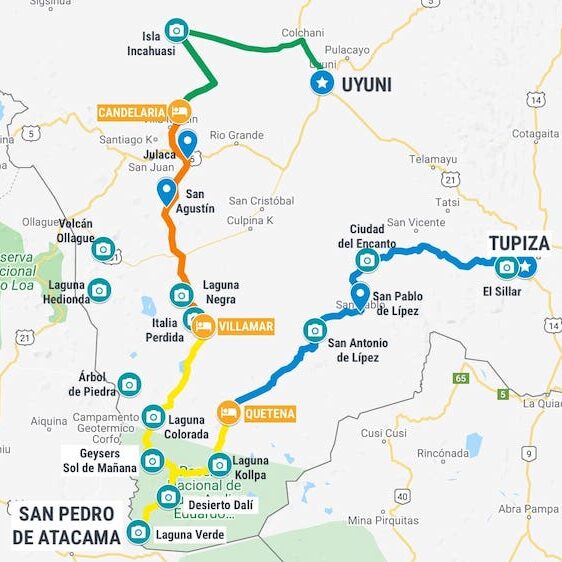
ITINERARY OF YOUR EXPERIENCE
Today you will visit Quebrada de Palala , a spectacular jagged rock formation, formed over many years by intense erosion of the mountainside. After this you will head on to El Sillar where you will have a few minutes to get out and enjoy this dramatic landscape before we continue through Nazarenito, a small gold mining community. Then we will go to visit Ciudad del Encanto , where you will see impressive rock formations. After that, you will arrive to San Pablo de Lípez (4250m) . Then you will go to San Antonio de Lípez and finally to Quetena , where you will spend your first night in a Basic Accommodation.
After breakfast, you will visit your first lagoon, Laguna Kollpa. Here large amounts of raw material are extracted for making soap. If you want, you can get out and take a few photographs before continuing through Salar de Chaiviri to arrive at the hot springs in time for a short swimming and some lunch. Your next stop after lunch will be the Laguna Verde (4250 m.a.s.l.), which presents an emerald green coloration due to arsenic and magnesium content in its waters. It is located at the feet of Volcano Licancabur (5868m), which represents the border between Chile and Bolivia. Desierto de Dalí (110 km2) is our next stop, a place with mountains of surrealist colors, reminiscent of the photos of Salvador Dalí and rock formations of petrified lava. Then, we will cross the hots springs once more to go to “Sol de Mañana” Geysers (5000m above sea level). Then we will spend around 1 hour in Laguna Colorada and finally we will travel to Villamar to spend the 2nd night (Basic Accommodation).
After the breakfast, we will start visiting Valle de Rocas , where you will see many rocks formations like Copa del Mundo and El Camello . Then we will go to Italia Perdida , where you will have some time to walk around the rocks. After that, we will go to Laguna Catal or Laguna Negra . Next is Cañón de la Anaconda which is a canyon where the Anaconda river runs. Some towns like San Agustín and Julaca will be passed in order to arrive to Villa Candelaria to stay there. This night you will stay in a basic salt accommodation.
Note 1: During rainy season (normally from January to April), if the salt flat has a lot of water, we can not stay in Villa Candelaria. From Anaconda, we will go to Uyuni or Colchani to stay there.
Today we will cross the immense Salar de Uyuni (3650 m.a.s.l.) early in the morning to see the Sunrise in the Uyuni Salt Flat. With 12,000 km 2 , the Salar de Uyuni is the largest salt plain in the world, stretching away in all directions as far as the eye can see. From here you can see volcano Tunupa impressively overhanging. The salt flats are made up of 11 separate layers with a thickness that ranges from 2 to 10m. The depth of salt is 120 meters and with that it is the biggest reserve of minerals such as lithium, magnesium, potassium, nitrogen, phosphorus and borax in the world. It has 14 small islands, the most important is the Incahuasi Island . Around the island, you can see Ojos de Agua , these are springs which act as pores for the salt flats. Leaving the salt bed, we will visit Colchani , the village where the salt is processed. Here there are various salt souvenirs and alpaca or llama wool clothes. Finally, we will go to see Cementerio de Trenes , where you will see a lot of ancient trains. Then we will go the central part of the city to finish the tour around 1-2pm.
Note 1: If you want to finish in Tupiza, it is possible, after we finish the tour in Uyuni, we will drive around 3 hours more to get to Tupiza. Note 2: During rainy season (normally from January to April) if the salt flat has a lot of water, we can not visit the Incahuasi island.
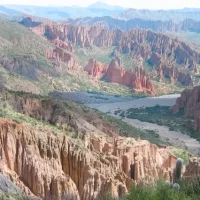
PRICES FOR THIS EXPERIENCE
Please select if you are looking for a shared or private tour, shared tour, private tour.
A shared tour is the best option if you are traveling alone or if you want to meet other people during this amazing adventure. We will complete the group with other people, so you do not have to worry about that.
- Transportation in a 4x4
- Oxygen for emergencies
- Spanish Speaking Driver-Guide and Cook
- All food during the tour
- 3 Nights in Basic Accommodations
- Sleeping bags
- 5-bed dorm with shared bathroom
- Shower as extra service (when available)
- Private room (twin or double room for 2 people) *USD 30 extra for single room supplement
- Hot shower in the room
- We help to buy your bus tickets to Tupiza
- Pick up from any accommodation in Tupiza
A private tour is the best option if you want to travel with more comfort and like to travel on your own without following standard times for stops and photographies.
PLEASE, SELECT THE SIZE OF YOUR GROUP
- Guaranteed Departure
- Twin with shared bathroom
- Twin or Double room with private bathroom
- 1 Night in Mallku Cueva Hotel or similar
- 1 Night in Tayka Desierto Hotel or similar
- 1 Night in Palacio de Sal Hotel or similar
- Triple with shared bathroom
- Triple room with private bathroom
- 1 Night in Luna Salada Hotel or similar
- Quadruple with shared bathroom
- 2 Twin or Double room with private bathroom
- Entrance fees, USD 32 per person: there are many entrance fees during the tour, but in total for the whole trip is Bs 221 (USD 32 approx.). *You need to have this amount in bolivian pesos.
- English guide, USD 200 per group: This cost is for the whole trip and whole group and it is totally optional. *In case you are taking a shared tour and the other members of your group don’t need english guide, you would have to pay the full amount in order to take this service.
- Use of public bathrooms , when available. Around Bs 5-7 (1 USD) per use.
- Hot shower , for Basic option in shared or private tours.
- Tips, this is totally optional and there is not a minimum nor maximum amount.
NEED TO BRING
- Warm clothes
- Comfortable shoes
- Sun glasses
- Toilet paper
- Personal care products
MOST RECOMMENDED COMPANY IN TRIPADVISOR

Terms and Conditions – Privacy Policy
La Torre Tours 2023 | All rights reserved
- Tripadvisor
- See ALL TOURS Here
- Tours By Place
- Salar de Uyuni
- Lake Titicaca
- Cochabamba and Santa Cruz
- Amazon Basin
- Tours By Type
- Bolivia Wide
- Most Popular
- Overland Expeditions
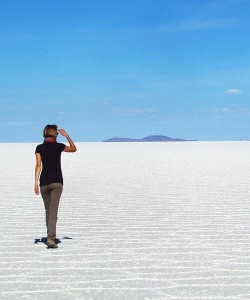
- Recommended:
- San Pedro de Atacama
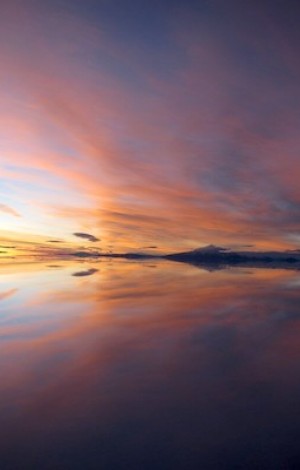
- See All Trips New

- Sajama National Park
- Custom Tours
SAN PEDRO DE ATACAMA TO UYUNI - 3 DAY SALAR DE UYUNI TOUR
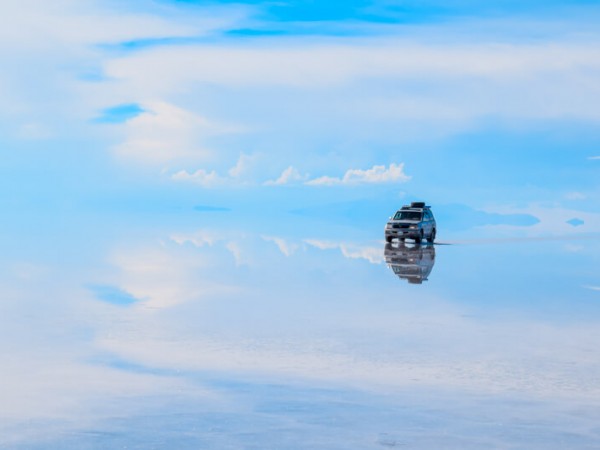
ITINERARY (DRY & RAINY SEASON)
Day 1 - eduardo avaroa reserve.
Welcome to Bolivia!
We leave San Pedro de Atacama early this morning for a short and scenic drive to Bolivia’s remote southwestern border (drive is unaccompanied by guide, only driver). Upon arrival, you will be greeted by our staff who will be ready to assist with migrations procedures if needed.
Once in Bolivia, we start our 4WD adventure entering Eduardo Avaroa Reserve, home to endemic wildlife and protected Andean landscapes. Our first stops are Laguna Blanca and Laguna Verde, two jewels in the middle of an unforgiving high-altitude (4500m) desert. Continuing, we have the opportunity to spend some time in the hot springs of Polques with stunning views of the Bolivian Altiplano. Later, we continue toward the boiling geysers and steam jets of Sol de Mañana at nearly 5000m!
The day’s main highlight is Laguna Colorada with its hundreds of pink flamingos and beautiful volcanic views all around it.
End the day by reaching our very basic lodge (Basic, Standard) or the more comfortable and private hotel (Plus) further north in the evening.
MEALS Lunch, Dinner
ACCOMMODATION
BASIC: Very basic dormitory-style room, shared bathroom, no shower nor hot water (very basic, almost primitive accommodation) STANDARD: Private room with private bathroom and lukewarm shower PLUS: In order of availability/preference: Hotel Tayka del Desierto, Los Flamencos Eco Hotel or Mallku Cueva Hotel
SPECIAL INFORMATION Ideally, take some time to acclimatize before this trip as the altitude reaches almost 5000m. Otherwise, talk to your doctor to be prescribed altitude medication e.g. Diamox if needed
Day 2 - Lagoons, deserts & wildlife
Our second day will take us further north to our next destination in Salar de Uyuni (Plus) or the southern rim of it (Basic, Plus) The morning will see us driving across scenic Andean landscapes, including the “Jewels of the Bolivian Altiplano” (a chain of pristine lagoons home to hundreds of flamingos you can see/photograph up close). We will also be lucky enough to stop at other beautiful sites such as quirky rock formations and scenic viewpoints. The rest of the day will depend on the time of year in which you join us:
Dry season (May to November)
Plus package: We will enter the might Salar de Uyuni in the afternoon. We will enjoy our first taste of salt plains by driving to the northernmost end of the salt flats where we will be based for the night, not before enjoying the colors of sunset against the white backdrop of the salt flats. Sleep in a village in the northern rim of the flats. Accommodation: Tayka Hotel de Sal or Tambo Coqueza
Basic & Standard packages: We will arrive in a small village in the southern rim of Salar de Uyuni but will not enter it until the following day.
Rainy season (December to April)
Plus package: In the afternoon, we will head toward the town of Colchani (past the town of Uyuni) where we will arrive in the southeastern rim of the salt flats. Here, the famed Salt Hotels are located where we will be able to enjoy a picturesque sunset before arriving in one of these unique hotels. Accommodation: In order of preference/availability: Hotel Palacio de Sal; Luna Salada or Cristal Samaña
MEALS Breakfast, Lunch, Dinner
BASIC: Basic room, shared bathroom, may have hot shower STANDARD: Private room with private bathroom and hot shower.
SPECIAL INFORMATION Your choice of package level will affect the location of your accommodation today. However, regardless of the package, you will see/visit all the same attractions, only in a different order/day
Day 3 - Salar de Uyuni
A full day is dedicated to enjoying the trip’s grand finale: Salar de Uyuni.
Plus: On our Plus package and in the dry season, we will visit the northern part of the salt flats, including the lesser-known village of Coqueza, gateway to the gorgeous Volcan Thunupa. You will optionally have the opportunity/time to take a moderate hike to an ancient site but what really stands out is the unmatched view of the entire extension of the Salar. Later, visit and hike to the top of Isla Incahuasi (easy to moderate hike) to enjoy the 360-degree views all around as well as the giant cacti growing on this bizarre island.
Basic & Standard: We will enter the salt flats through the southwestern end, immediately being mesmerized by the vastness and whiteness of this unique desert. Spend the rest of the day enjoying the deep-perspective effect which works great for fun photographs as well as climbing Incahuasi Island with its giant cacti to appreciate the sheer size of the salt flats thanks to the 360-degree view from here.
Plus, Basic & Standard: In the rainy season, you will enter the salt flats through the southeastern rim (all packages) and pass through the village of Colchani where you will be able to see its colorful market and optionally, a rustic, salt-processing plant. Most of the day will be spent slowly driving along the shore of the salt flats as it is not possible to drive much further. Immediately, we are in awe by the perfect “mirror” of the sky at our feet. Take your time to find the perfect reflection as well as playing with the deep-perspective effect offered by the endless, flooded plains.
Regardless of the package, you will be able to stay until sunset (time permitting) to appreciate the beautiful colors against the white backdrop of Salar de Uyuni. Alternatively, head out of the salt flats towards the town of Uyuni to make one last stop at the Train Cemetery (not a major attraction, just a picturesque stop) to end the day. We will take you to your desired place of drop off, either at your hotel, airport or bus station in Uyuni where this trip of a lifetime ends.
IS THIS TRIP FOR ME?
- This trip covers around 800 Km in three days of off road driving at high altitude and cold climate.
- The trip can be easily enjoyed if you are prepared. It is recommended you read the itinerary before booking
- You may attempt to form a small group of people to reduce costs, but bear in mind that the more people in the vehicle, the less comfortable the trip will be. Consider that you will be driving through rugged terrain and in most parts, it cannot even be considered a road (which is why we use top-notch 4WD vehicles)
- It is ideal if you are headed from San Pedro de Atacama to Uyuni. It can also be taken in the opposite direction (See our Classic 3-Day Uyuni Salt Flats tour)
- Please note that the itinerary is modified during the rainy months of Dec to April (see itinerary)
PLEASE NOTE THAT PARK AND OTHER SITES' ADMISSION FEES - IF APPLICABLE - ARE NOT INCLUDED IN THE PRICE (READ BELOW)
WHAT TO BRING
- Camera/drone
- Effective sun protection (sunscreen, sunglasses, hat)
- Warm layers as temperatures drop considerably in the evenings and mornings
- Bathing suit, sandals
- Comfortable hiking shoes
- Money in Bolivianos for national park entrance fees and personal spending (drinks, souvenirs, tips, etc) unless you request admission fees to be included in the final price
WHY TAKE THIS TRIP WITH US?
- We are a tour operator, not a travel agency. We organize this trip by putting everything from transport to accommodation providers together to make sure it works as flawlessly as possible. Our trusted partners both in Chile and Bolivia have been tried and tested and we put our name confidently up front because we trust the safety and reliability they offer. A travel agency merely books you with a tour operator earning a commission for themselves and not giving a lot of care to your experience
- We put safety at the top of our priorities. We know Bolivia and Chile inside out and the roads, towns, villages, deserts, etc. that are safe to travel through. By using our services, you can rest assured that we will get you to your destination at the end of every day safely
IMPORTANT INFORMATION TO CONSIDER
- The itinerary may suffer changes without previous notice due to factors outside our direct control such as weather and road conditions. If we are forced to alter the itinerary in any way, it will be based on good judgment and necessary modifications for your own safety and comfort and you will be promptly notified. We never alter or skip attractions in the itinerary without explaining the reasoning behind any possible change and providing adequate proof that such change may be necessary. Therefore, you should not take the above itinerary as “set in stone” and we will not he held liable for any loss or damage that you may feel arising from such changes made for your benefit.
- Please note that the itinerary differs in the rainy season from the itinerary in the dry season. We will not be held liable/responsible for failure to read this information
- This region is a remote area that lacks the usual comforts of the modern world. You should not expect high standards of accommodation, hot water is available some of the time (according to respective package) and electricity is available for a few hours or more where possible.
- Food is handled hygienically and it is our priority and job that you are satisfied with the limited resources available in this region. Vegetarians are welcome, but should not expect special menus as we do what we can to serve appropriate portions of vegetables and fruit in the vegetarian menu
- During the rainy season (December to March/April) some parts of the salt flats may be inaccessible such as Incahuasi Island and time on the actual salt flats is limited. Most of the regular itinerary is followed as normal
The following are dates in which other people have shown interest in forming a group for this tour. Use the ENQUIRY tab to request a new date or join one of the dates below to form a group and obtain the respective price. The number of interested persons is shown for your reference and you will be updated via email if other people are interested in the same date. If your party consist of four persons, we suggest booking a tour outright to confirm departure.
INCLUSIONS & EXCLUSIONS
What's included.
- Transportation by private vehicle from San Pedro de Atacama to Uyuni for 3 days
- Spanish-speaking driver (digital guide in IOS or Android app included) or English speaking guide (price varies)
- 2 nights’ accommodation according to selected package
- 3 lunches, 2 dinners, 2 breakfasts
- Bottled water
WHAT’S NOT INCLUDED
- National park and other sites’ admission fees: Approx. 30 USD, paid only local currency (Bolivianos/BOB). Please exchange to BOB before you leave San Pedro de Atacama (you may choose to have these included at the time of booking).
- Soft/fizzy and alcoholic drinks
- Optional tips/gratuities (highly recommended, but not mandatory)
INTERACTIVE MAP

- Ask a Question
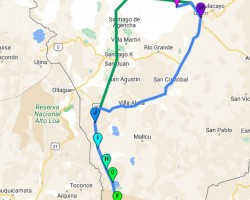
- Related Tours
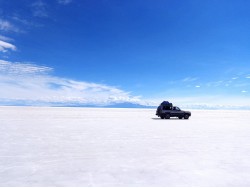
Write a review
Related articles.

- We suggest you also
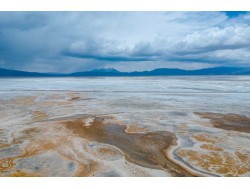

IMAGES
VIDEO
COMMENTS
Located in southwestern Bolivia, this massive salt flat is nearly 3,900 square miles (10,000 square kilometers) in size. The Salar de Uyuni Salt Flats were formed by prehistoric lakes leaving the salt behind. Now, the entire area is covered meters deep in salt. The entire area is both extremely flat and at an extremely high elevation.
Salar de Uyuni from Tupiza Tour Itinerary. Awesome sceneries abound in Bolivia. Perhaps none more so than on this Bolivian altiplano tour from Tupiza to Uyuni salt flats in the country's wild west. Here's my trip report from the Tupiza to Uyuni salt flats tour I took to help you to understand what to expect. Day 1
Salar de Uyuni Tour Itinerary. Uyuni One Day Tours. The one day tour is the cheapest way to visit Salar de Uyuni. Tours start and finish in Uyuni, most tours run from 10am to 5pm so it is possible to arrive in Uyuni by bus, take a one day tour and depart again by bus on the same day. Salar de Uyuni One Day Tour
FACTS. Like we've said before, Salar de Uyuni is the world's largest salt flat and also the world's largest producer of lithium, but those facts are not the only unusual things. Apart from that, Salar de Uyuni, spreading over 10 000 square kilometers, lies pretty high above sea level, in 3 656 meters to be precise.
A Uyuni Salt Flats Tour is a must-do on everyone's Bolivia itinerary! Uyuni Salt Flats (also known as Salar de Uyuni) is the world's largest salt flat, stretching for more than 11,000km². It truly is one of the most remarkable vistas on planet earth!
Salar de Uyuni Overnight Private Tour: Itinerary Suggestion. Here I will briefly describe what I have done for my own private tour to the Uyuni Salt Flats so you can gain some insight and ideas if you wish to do the same. Day 1 - Uyuni Salt Flats: Uyuni → Colchani → Incahuasi Island → Fish Island → Coqueza.
Check them out to find the best Salar de Uyuni tours. Salar de Uyuni tour options. ... The itinerary for those who start their tour in San Pedro de Atacama is reversed as they visit the desert, lagoons, hot springs etc. at the beginning of the tour and the salt flat at the end. The third night of the 4 day tour is spent in a basic hostel in ...
The Salar de Uyuni is a 10,582 square kilometer expanse of cracked white salt, left behind when an ancient salt lake named Coipasa dried up thousands of years ago. Located in the Bolivian Altiplano, it is the world's largest salt flat and is located at a high altitude of 3,656 meters (10,000 feet) above sea level.
Salar de Uyuni 3-day Tour Itinerary Highlights Day 1. San Pedro de Atacama - Refugio Huayllajara. Laguna Blanca & Laguna Verde: white and green lake framed by the amazing Licancabur Volcano; Salvador Dalí Desert: walk through a real-life surrealist painting; Polques Hot Springs: enjoy a dip in the Aguas Thermales; Sol de Mañana Geysers: volcanic activity at the highest point of the Salar ...
These are the most popular options: From San Pedro de Atacama: 3-4 day tour in a 4×4. From Ororo: 7-8 hours by train or bus. From La Paz: 12-15 hours by bus or flying to the airport of Uyuni. From Potosi: 6-7 hours by bus. How you get to Uyuni obviously depends on where you're travelling before.
SALAR DE UYUNI - 2 DAY TOUR (SALT FLATS ONLY) On this two-day expedition of Uyuni Salt Flats, visit the well-known attractions of the Salar as well as the northern rim including Thunupa Volcano and other lesser-known sites across the plains (dry season, May to Nov). Alternatively, enjoy two relaxing and surreal days of slow driving across the ...
Two days exploring the remote southwest will let you see pink flamingos up close, dramatic deserts and volcanoes, bathe in natural hot springs and walk among boiling geysers. We take care of all the fuss. All you have to do is climb aboard our 4x4 vehicle and have the time of your life. Salar de Uyuni - traverse the world's largest salt flats.
The Uyuni salt flats tour is a safe and comfortable 3 day tour to the Salar de Uyuni and lagoons in Bolivia. We use the best hotels in the area (Tayka hotels or similar category salt hotels such as Luna Salada hotel or Palacio de Sal hotel) and very comfortable private transport.The cars we use are fully equipped Toyota Land Cruisers, Nissan Patrols or Lexus with first aid kit and an oxygen ...
2 day tour Uyuni salt flats. The beautiful Uyuni salt flats (or Salar de Uyuni) is with its 10.582 square km (4.085 square miles) the world's largest salt flat. It is located in the Department of Potosi in southwest Bolivia, near the crest of the Andes, at 3.650 meters above sea level. Some 40.000 years ago, the area was part of Lake Minchin ...
The Uyuni experience, designed for you by travel experts. Custom tour itineraries, unique salt hotels, incredible scenery and attractions. Whatever you want from your Salar de Uyuni tour, our team of expert travel designers are ready to help. ... +591-68583553 Talk to an Uyuni Travel Expert.
The Uyuni Salt Flats 4-Day Tour itinerary offers a captivating journey through diverse landscapes and unique experiences in Bolivia. Travelers can expect: Stay in cozy lodges with breathtaking views of the salt flats; Indulge in traditional Bolivian cuisine like quinoa soup and llama meat dishes;
Book online the 2 days tour to the Salar de Uyuni and sleep in the city of Uyuni. Transportation + Accommodation with private or shared room + Guide. howlanders. Torres del Paine Tours Chile. ... 🌧️Durante the rainy season (December to March) the itinerary may be modified, as the salt flat is flooded and some areas such as Incahuasi Island ...
The itinerary of each Salar de Uyuni tour depends on your starting point. I began mine in San Pedro, and this is what my three days in the desert looked like. DAY ONE. I was picked up at my hostel at 7 a.m., and we were off to the Bolivian border. There we had breakfast, got our passports stamped and were transferred to the 4×4 vehicle we'd ...
One Week in Uyuni. Plan an amazing trip for Uyuni one week itinerary. Explore 13 Uyuni 7 day trips from 28 experts with 301 reviews. Classic and off the beaten path itineraries. How to experience the best of Uyuni in one week. Itineraries and trips from 18 experts. Compare tours, packages, and independent trips for Uyuni in 7 days.
This action-packed itinerary takes travelers to awe-inspiring natural attractions in two different countries. Start in Chile, exploring the massive sand dunes and otherworldly rock formations of the Atacama Desert. Then cross the border into Bolivia, where you'll spot flamingos in the wild in the Eduardo Avaroa Andean Fauna National Reserve, go for a dip in natural springs, and gaze out at the ...
Machu Picchu has two distinct seasons, the wet season and the dry season. The dry season is from April to October and that is the best time to visit Machu Picchu. During this time, the temperature is warm and there is very little rain. The heaviest rainfall is in February. At this time, the Inca Trail path is closed for maintenance.
Today we will cross the immense Salar de Uyuni (3650 m.a.s.l.) early in the morning to see the Sunrise in the Uyuni Salt Flat. With 12,000 km 2, the Salar de Uyuni is the largest salt plain in the world, stretching away in all directions as far as the eye can see.From here you can see volcano Tunupa impressively overhanging. The salt flats are made up of 11 separate layers with a thickness ...
Day 3 - Salar de Uyuni. A full day is dedicated to enjoying the trip's grand finale: Salar de Uyuni. Dry season (May to November) Plus: On our Plus package and in the dry season, we will visit the northern part of the salt flats, including the lesser-known village of Coqueza, gateway to the gorgeous Volcan Thunupa. You will optionally have the opportunity/time to take a moderate hike to an ...